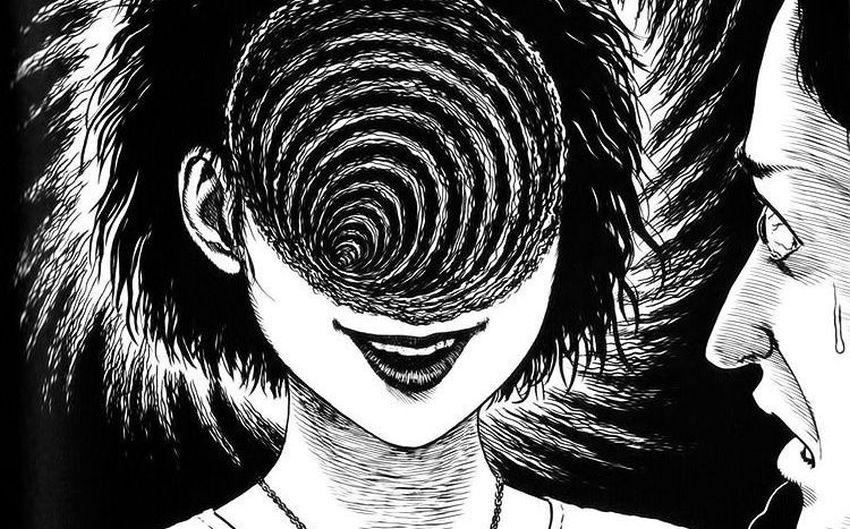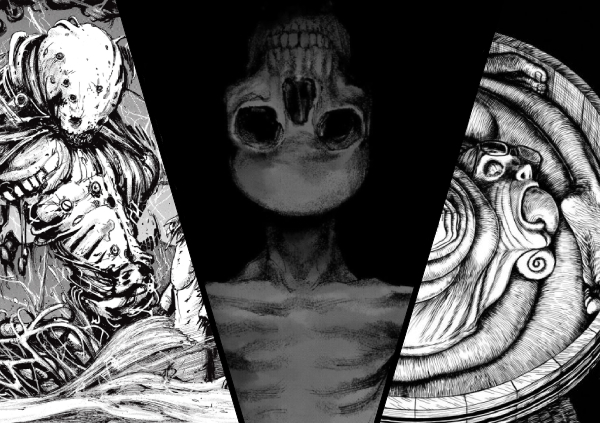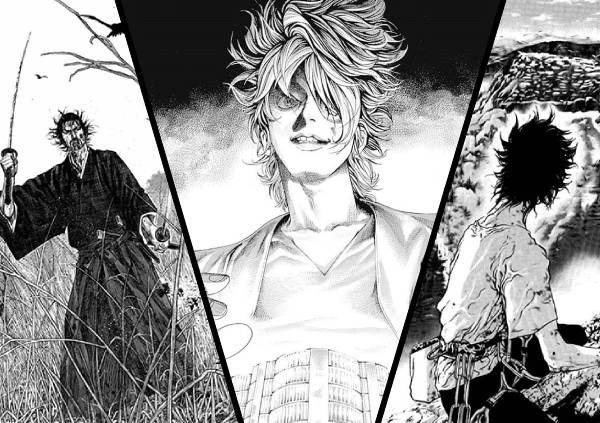Ever since I started reading manga, I’ve gravitated toward stories that dig deep into human nature and experiment with structure. That’s why I’ve always leaned more toward seinen manga. But even as a lifelong seinen reader, I can’t deny the sheer rush of shonen manga. The best titles deliver high-energy action, addictive momentum, and bold imagination that keep you turning the pages. At their peak, shonen series can be every bit as unforgettable and emotionally resonant as their seinen counterparts.
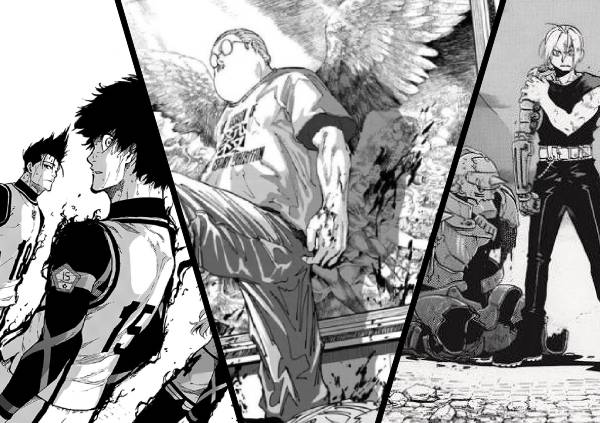
This list is my personal selection of the best shonen manga I’ve ever read. Many are classic battle shonen such as Dragon Ball and Yu Yu Hakusho, which shaped the genre. Others represent high-octane, stylish modern shonen hits like Blue Lock, Sakamoto Days, and Dandadan. And then there are some unexpected emotional outliers like A Silent Voice and To Your Eternity, which prove shonen manga can tackle complex heartfelt themes beyond traditional fights and tournaments.
While most of the titles here lean into the kinetic energy shonen manga are famous for, you’ll also find entries that push the demographics’ boundaries. They are psychological thrillers, dark fantasies, and experiments in tone or structure that you wouldn’t normally associate with shonen.
From sprawling adventures to claustrophobic survival games, this list highlights how diverse and innovative shonen manga can be.
A quick spoiler warning: I’ve avoided major twists where possible, but some plot details are necessary for context.
With that said, here’s my updated and carefully curated list of the 37 best shonen manga of all time (last updated: September 2025).
37. Gachiakuta
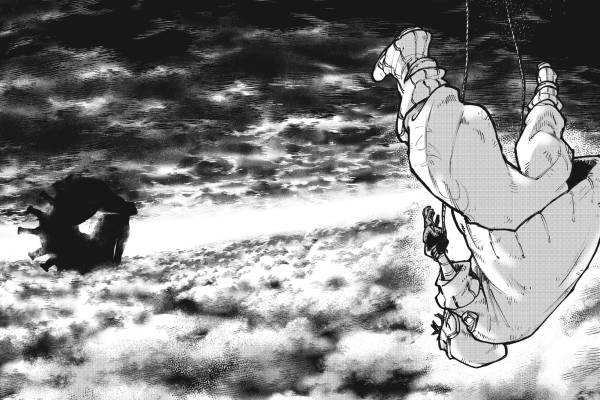
Gachiakuta by Kei Urana is one of the hottest new shonen manga today. Equal parts dystopian action series and trash-punk fever dream, it combines a classic revenge setup with one of the freshest settings in recent memory.
The story follows Rudo, a rebellious scavenger from the slums of a wealthy city. After being falsely accused of murdering his foster father and thrown into the Abyss, a massive pit where society discards not only its garbage but also unwanted people, Rudo discovers a world built entirely out of refuse. Here, grotesque monsters stalk the trash-scapes, and Cleaners wield weapons called Vital Instruments to fight them. Rudo, bent on revenge, trains to become one of them.
On paper, it sounds like a standard shonen setup: an overconfident protagonist with hidden potential, mentor figures, cool weapons, and escalating battles. And in a way it is. Yet Gachiakuta stands out because of its art direction and worldbuilding.
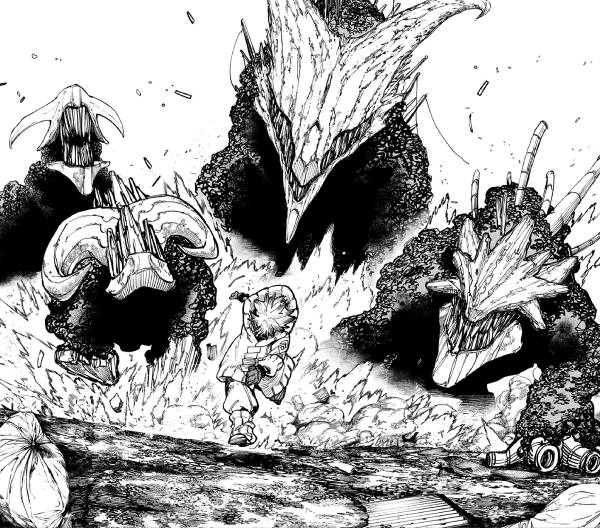
Kei Urana renders the trash-world in incredible detail. We bear witness to towering trash heaps, stitched-together beasts, and kinetic battle spreads. The manga’s paneling breaks rules constantly, giving it chaotic energy that matches its punk aesthetic.
The cast is a mixed bag of familiar archetypes and genuinely surprising personalities. Rudo himself is a typical shonen protagonist, but characters like Zanka Nijiku display unexpected depth, and among the antagonist, the unhinged Jabber Wonger steals every scene he’s in. This blend of tropes and outliers keeps the story lively even when it treads familiar ground.
Tonally, Gachiakuta can be weird, even surreal, but that’s part of its charm. The trash-punk setting is reminiscent of the industrial grit of Battle Angel Alita rather than the clean arenas of typical battle shonen. Thematically, it toys with ideas of class, waste, and who society chooses to discard. This gives it more weight rather than being a simple revenge plot.
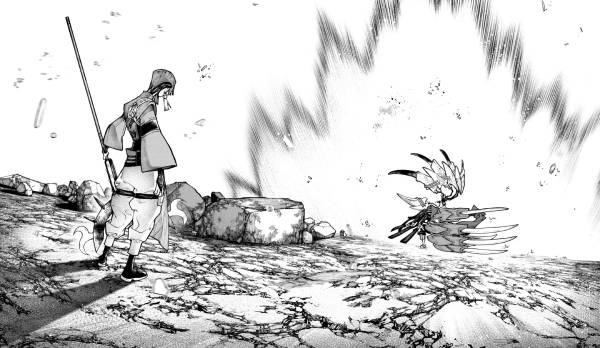
Still, it’s not reinventing the shonen genre. The structure is familiar, the protagonist’s arc is predictable, and many side characters lean heavily on clichés. But the sheer style, energy, and distinctive setting elevate it above the average shonen title.
If you’re looking for an ongoing series that blends classic battle-shonen energy with a unique dystopian world and standout art, Gachiakuta is worth checking out.
Genres: Action, Fantasy, Dystopian
Status: Ongoing
36. Tokyo Revengers
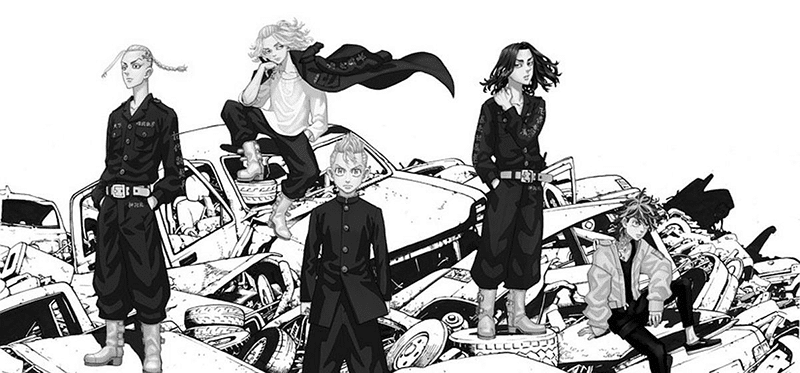
Few shonen manga are as fun and addicting as Tokyo Revengers, but its flaws are harder to ignore on a closer look. Ken Wakui’s series blends time-travel suspense with delinquent gang drama, creating a story that’s equal parts melodrama and high-stakes action.
Takemichi Hanagaki is a self-described loser whose life has hit rock bottom. One day he finds out his first love, Hinata Tachibana, has been murdered by the Tokyo Manji Gang. Inexplicably sent back 12 years to his adolescent self, he gets a chance to rewrite history and save her life. The premise of revisiting your past to undo regrets is instantly compelling and gives the series a propulsive hook.
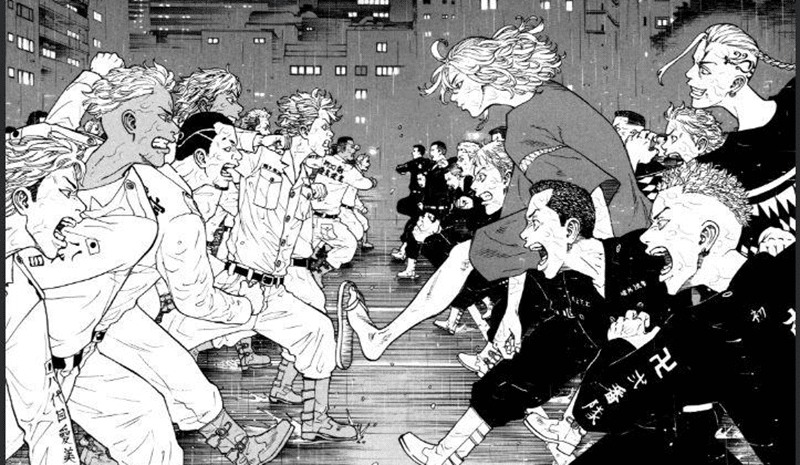
Rather than the usual zero-to-hero archetype, Takemichi remains weak and emotional throughout the series, acting more as the heart of the group than a fighter. This subversion is refreshing but also divisive: his endless tears and self-doubt can be moving or annoying depending on the reader.
Where Tokyo Revengers truly shines is in its characters and design. Wakui’s art is solid overall, but his talent for character design stands out. Each major player shows a distinct hairstyle, clothes, and accessories, making the cast visually striking and easy to tell apart. Standouts like Mikey, Draken, and Chifuyu, along with their connection to Takemichi make the series so addicting. These strong designs and personalities also help to carry the series through its long arcs, though later volumes suffer from cast bloat as Wakui adds more and more characters.
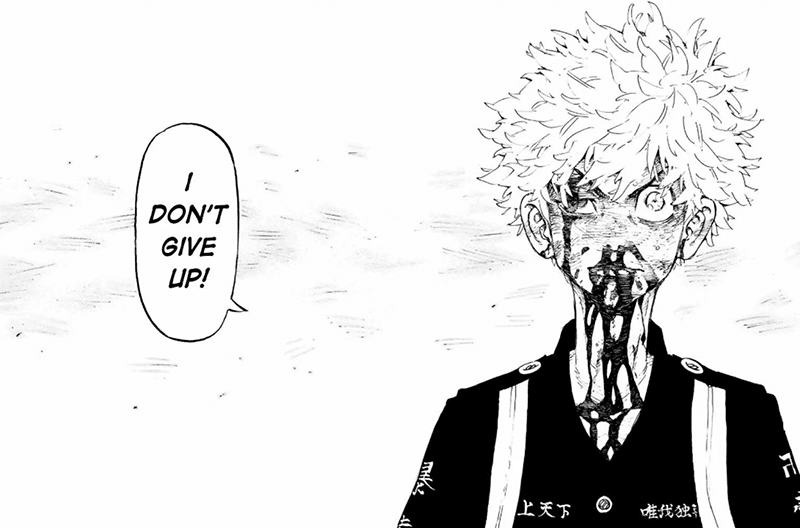
The setting of the Bosozoku, Japanese biker gangs, adds flavor but also strains credibility. Tokyo Revengers romanticizes delinquent clichés, portraying 13- and 14-year-olds as hardened gang members capable of brutal violence, rape, and even murder. Flashbacks showing children already forming gangs and driving motorcycles more than stretches the suspension of disbelief.
The story itself is gripping but highly repetitive, with Takemichi changing the past only to find the future still broken, forcing him to dive back again. While the time travel rules are consistent, later arcs can undermine their logic a little. The worst offender is the ending, which essentially erases all of the hard-won stakes and sacrifices we witnessed throughout the series.
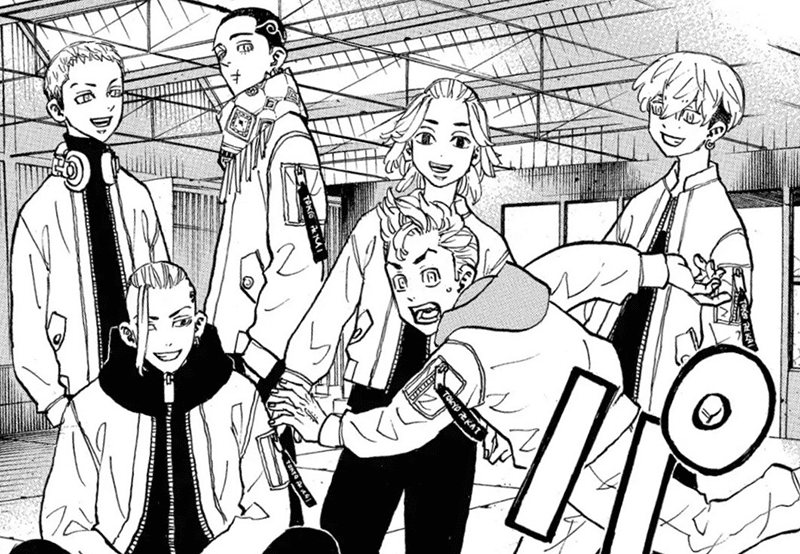
Still, at its best, Tokyo Revengers is irresistible. It’s a mix of violent spectacle, stylish characters, emotional twists, and time-loop suspense that can easily hook you for dozens of chapters.
Genres: Action, Delinquent, Time Travel
Status: Finished
35. Dr. Stone
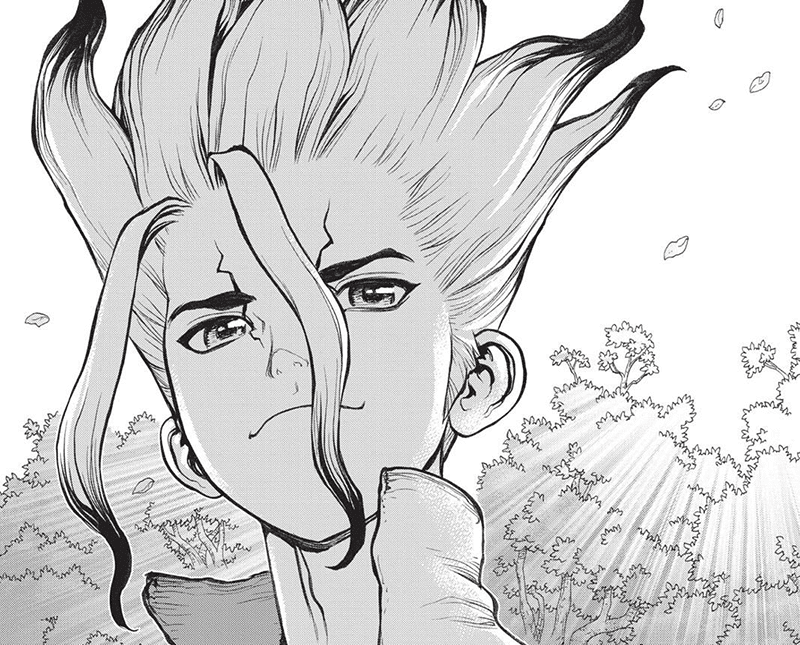
Dr. Stone began as one of the most unique and endearing shonen manga of the last decade. It’s both a high-energy survival adventure and a love letter to science. Created by writer Riichiro Inagaki and artist Boichi, it starts with a beautiful but simple premise: what if you had to rebuild society from scratch, using modern knowledge during the Stone Age?
After a mysterious light petrifies humanity, only high schooler Senku Ishigami and his friend Taiju awaken thousands of years later to a world reclaimed by nature. Senku is a teenage genius, essentially a walking science encyclopedia, who sets out to restore technology step by step. Early chapters revel in this process, showing soap, iron, waterwheels, and electricity emerge through clever experiments and trial-and-error. It’s part adventure, part science-show, and in its first arcs it’s genuinely thrilling.
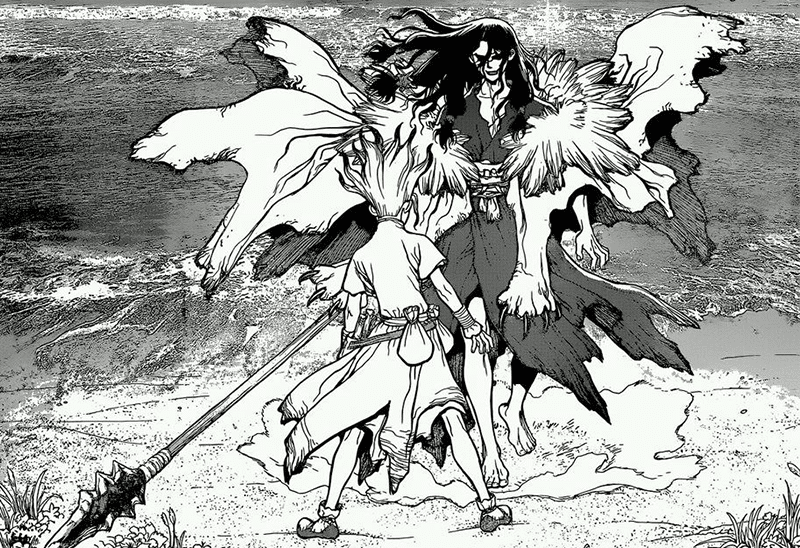
Visually, Dr. Stone thrives on Boichi’s dynamic art style. His hyper-detailed landscapes, lush animals, and striking character designs make Dr. Stone a visual treat. Senku’s inventions feel tactile, and the cast from Chrome to Tsukasa all have bold, exaggerated designs that suit the manga’s high-energy tone. This uniqueness helped carry earlier arcs and gave Dr. Stone a distinct identity.
The series’ weaknesses, however, become clear as it stretches on. The tonal shift from science adventure to bloody faction warfare in later arcs produces tonal whiplash. The science, once lovingly detailed, becomes hand-waved as Senku develops computers, satellites, and entire infrastructures with minimal explanation. It’s understandable given the complexity, but it shifts what was once grounded into near fantasy. Characters, while likable, are often one-note and defined mostly by a single gimmick or skill, and Senku himself strains believability as a teenager who knows literally everything.
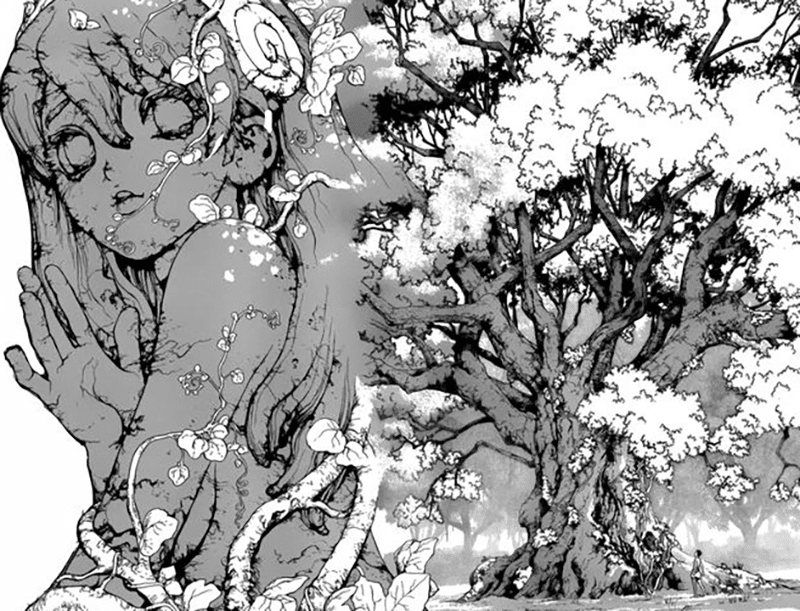
The comedy is also a sticking point. Boichi leans heavily on exaggerated faces, cartoonish renderings, and a lot of screaming. It can be funny in small doses but grows repetitive and even annoying after hundreds of chapters. The ending too is a point of contention, as not everybody was happy when it was resolved who petrified humanity.
Even so, Dr. Stone remains a standout. Its first half is one of the most original takes on shonen in years, and even as it overextended, it stayed a passionate ode to human curiosity and invention. It’s a rare shonen where science, not strength, trumps all.
Genres: Adventure, Science, Survival
Status: Finished
34. Gamaran
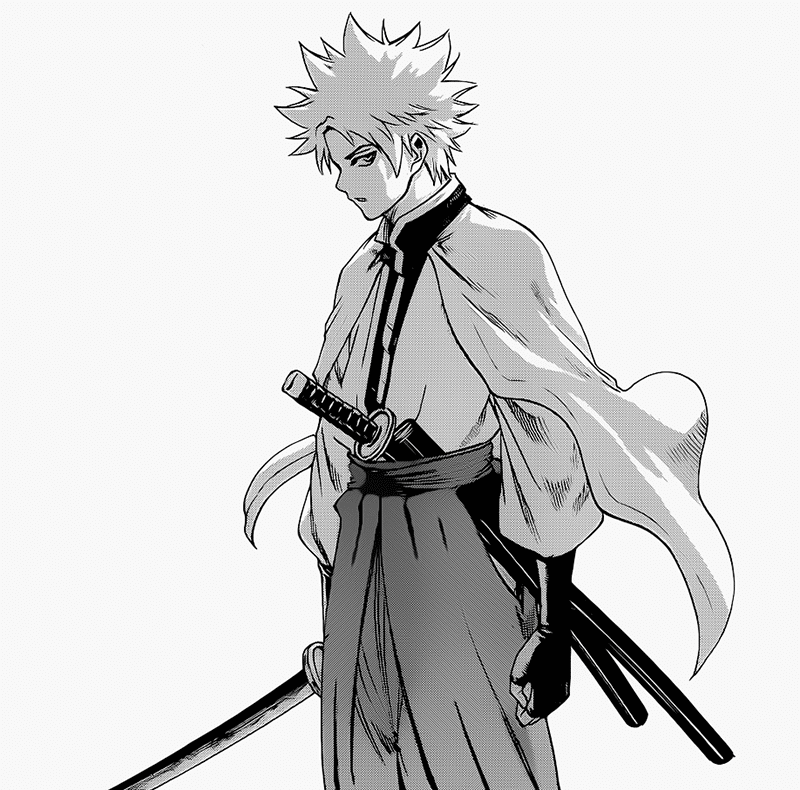
Anyone who’s checked out my other manga lists knows I have a weak spot for samurai stories. Gamaran, written and illustrated by Yōsuke Nakamaru, scratches that itch perfectly. It’s a straight-up samurai tournament manga set in the Edo period, but entirely built around duels and martial mastery. It’s as pure a battle shonen as you can find.
The premise is simple. The Daimyo of Unabara, seeking a successor, announces a massive tournament. Each of his sons must choose a champion to fight on their behalf until only one remains. Naoyoshi Washitsu sets out to recruit the legendary Thousand-Man Slayer Kurogane Jinsuke, but instead finds only his son Gama, whose raw talent convinces him to bring the young swordsman into the competition. From there, Gamaran becomes an escalating parade of duels as Gama clashes with dozens of warriors, each representing a distinct fighting style and philosophy.
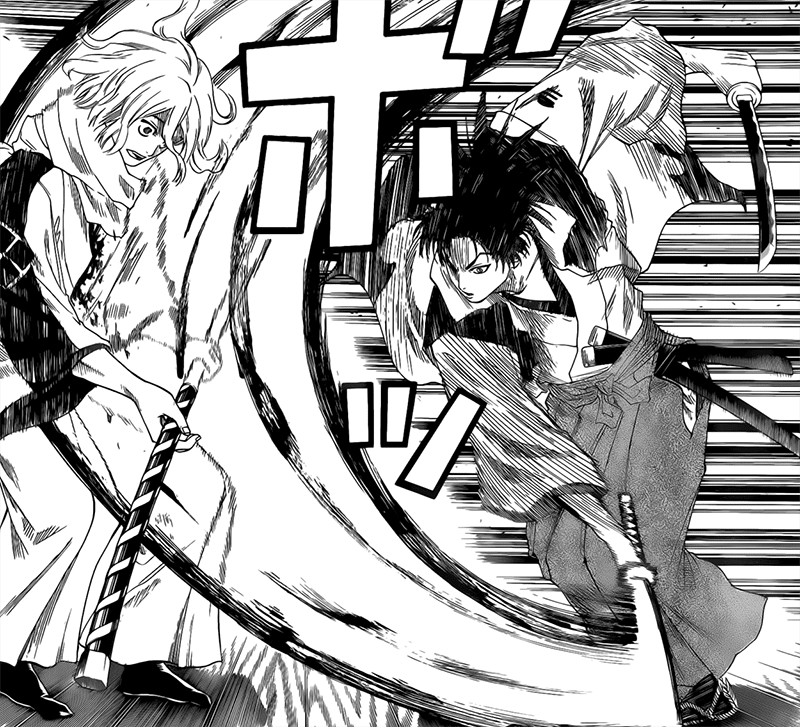
What makes Gamaran shine isn’t intricate plotting or deep character drama but its sheer focus. This is a manga about martial arts battles, and it embraces that identity unapologetically. Over 30 martial artists, each with unique weapons and styles, fill the tournament roster. The author takes time to explain the techniques without stalling the action. As a result, you’re constantly learning about the art of combat. At the same time, you’re watching intense, lethal matches unfold.
The art reflects this focus. While not especially flashy in everyday scenes, Nakamaru’s fight choreography is clean, precise, and easy to follow. Strikes have weight, tactics matter, and bouts end quickly rather than dragging into endless multi-chapter battles. This realism and variety give Gamaran an edge over most battle shonen. What you get is the excitement of high-stakes combat, but with a refreshing sense of speed and danger.
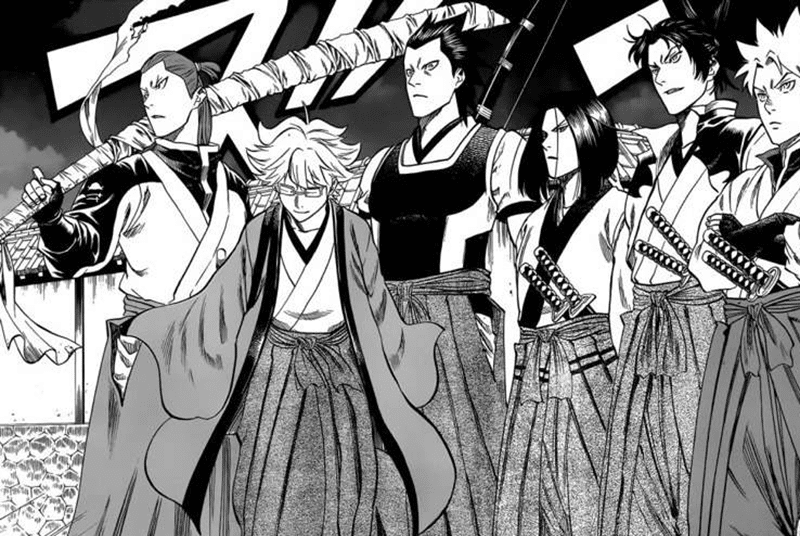
Where Gamaran falters is in its story and character depth. For much of the run, there’s little beyond Gama’s drive to grow stronger, and even later arcs rarely surprise. The narrative functions more as a stage for duels than as an epic in its own right. Still, that clarity of purpose is part of the charm. If you want heavy plotting, strong character development or psychological twists, you’re better off looking elsewhere.
If, however, you want a high-energy samurai tournament manga, Gamaran delivers one of the most satisfying fight-centric experiences in all of shonen manga.
Genres: Action, Samurai, Tournament
Status: Finished
33. Centuria
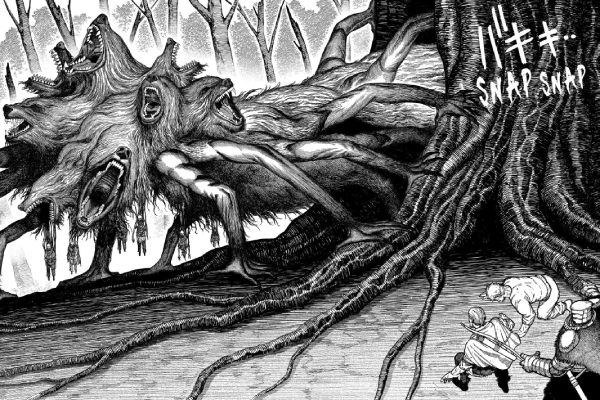
Centuria by Tohru Kuramori is one of the most interesting modern shonen manga I’ve read. It’s a dark fantasy epic with a brutal opening that immediately sets it apart. The story begins aboard a slave ship caught in a violent storm. Ninety-nine slaves are slaughtered before a mysterious sea god intervenes, granting immense power to the lone survivor, a teenage boy named Julian. From this point onward, his life becomes entangled with the supernatural forces of the world.
The early chapters of Centuria feel almost mythic. The sea god, the grotesque creatures, and the sense of cosmic indifference evoke a Lovecraftian energy rarely seen in shonen manga. Julian’s journey, from surviving unspeakable violence to building a life in a small village, is compelling because it places a reluctant protagonist at the center of a vast and dangerous world. It’s shonen coming-of-age reimagined as dark myth.
The art is breathtaking. Kuramori’s monster designs are intricate and organic, from multi-headed beasts to tentacled deities. Landscapes and architecture are richly rendered, creating a cinematic sense of scale. While comparisons to Berserk or Dorohedoro feel inevitable, Centuria still carves its own niche with a distinct aesthetic. The cast around Julian, from villagers to antagonists, is expressive and helps ground the high-concept setting in human emotions.
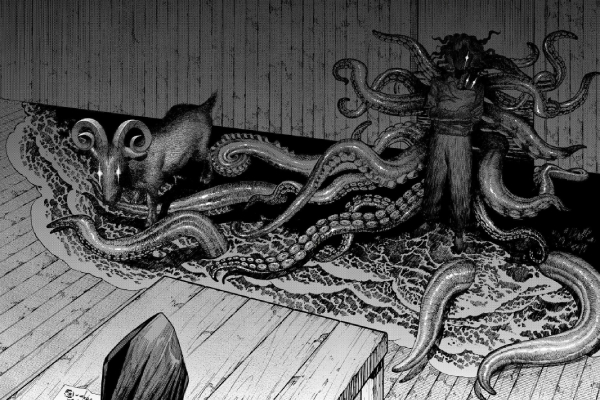
That said, Centuria shows its shonen roots. The tone and visuals suggest moral complexity, but the characters are often painted in broad strokes. They are heroic or cruel, righteous or monstrous. This isn’t inherently bad, but can feel at odds with the manga’s otherwise grim atmosphere. The story also leans more on spectacle than depth, especially as new factions and supernatural forces emerge.
Even with these caveats, Centuria is one of the most exciting new dark shonen manga to appear in years. It combines historical grit, cosmic monsters, and a mythic sense of tragedy in a way few series dare. If you’re looking for a shonen that blends dark fantasy and jaw-dropping creature design, Centuria is absolutely worth keeping an eye on.
Genres: Horror, Fantasy, Action, Supernatural
Status: Ongoing
32. Crows
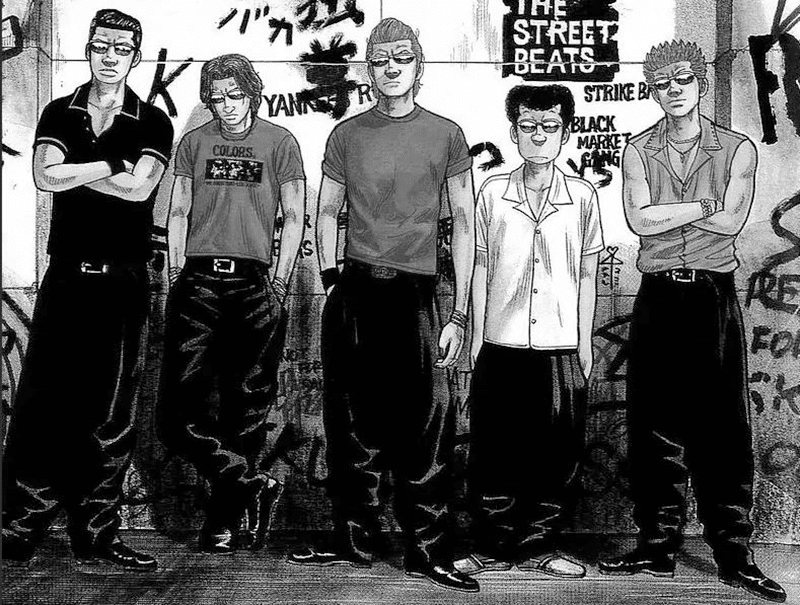
Crows by Hiroshi Takahashi is one of the older manga on this list, but it remains a cornerstone of the delinquent genre and is still a fantastic read even today. I first discovered it through Takashi Miike’s films Crows Zero and Crows 2, both of which feature their own unique characters, but capture the same chaotic spirit. After loving the movies, I dove into the manga, and it didn’t disappoint.
The story follows Harumichi Bouya, a cocky transfer student arriving at Suzuran High, a school so notorious for its violence that it’s nicknamed Crows High. Suzuran has long been a battlefield for gangs and cliques, and no one has ever united the school under one leader. Bouya sets his sights on doing just that, only to be dragged into a constantly shifting web of rivalries, alliances, and all-out street wars.
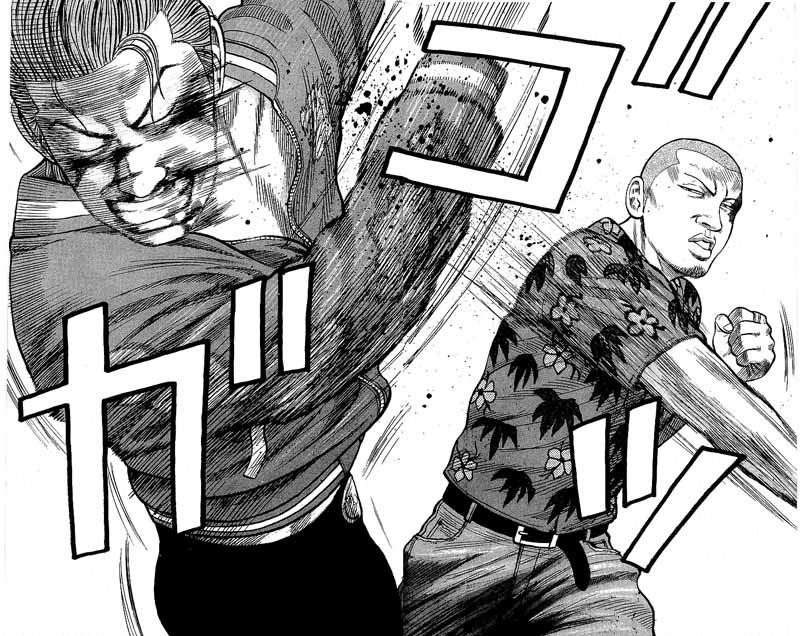
At its heart, Crows is a fighting manga about delinquents, and it delivers exactly that. The fights are constant and varied, and surprisingly well-choreographed for a series of its age. But what really surprised me is how distinctive and memorable the characters are. Each gang and fighter has a unique look, personality, and fighting style. Bouya is an unusually charismatic lead, and the supporting cast leaves just as strong an impression. Every time a new rival emerges, you’re actually looking forward to seeing who’s involved.
The art can be polarizing. Drawn in the early 90s, it has a rough, old-school aesthetic that might alienate readers used to sleeker, modern designs. It takes some getting used to, but once you adjust, the gritty style suits the story perfectly. And while Crows mostly revels in street fights and delinquent antics, it also dips into surprisingly poignant moments: brief flashes of tragedy, vulnerability, or character insight.
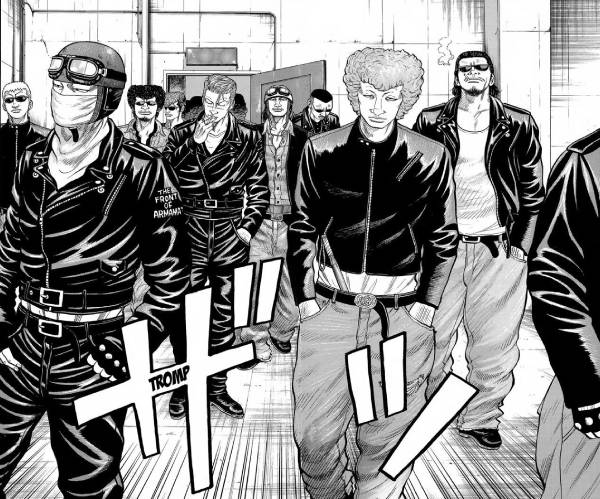
Ultimately, Crows succeeds because it knows exactly what it wants to be: a straightforward, high-energy delinquent battle manga with a streak of sincerity. It’s not about teachers or cops swooping in to stop the brawls, but about the raw clash of personalities and ambitions.
For readers looking for a classic of the delinquent subgenre, Crows remains one of the best shonen manga to read.
Genres: Action, Delinquent, School
Status: Finished
31. Dark Gathering
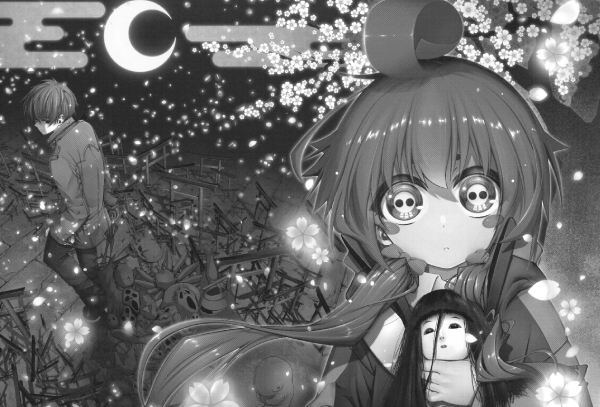
Dark Gathering is one of the most compelling supernatural horror manga currently running, and it’s earned its place on this list of shonen manga by combining ghost-story horror with character-driven stakes.
Keitaro Gentoga is a college student cursed with the ability to attract spirits, a gift he absolutely despises. After a traumatic supernatural incident left a friend severely scarred, he withdrew from life, haunted by both guilt and fear. But fate intervenes when he becomes the private tutor of Yayoi Hozuki, who can see ghosts and is hunting occult forces that claimed her mother. Together, they venture into haunted locales, confronting malevolent spirits, and inching toward a deeper supernatural mystery.
What sets Dark Gathering apart is how it weaves horror tropes into shonen tropes. Each chapter or arc brings new specters, haunted settings, and occult puzzles, all grounded by human emotion and relationships. The monsters feel genuinely unsettling: rooted in folklore, mutated beyond expectations, and literally dangerous. The pacing works well: horror builds steadily before releasing into action or character beats, instead of striking into endless bleakness.
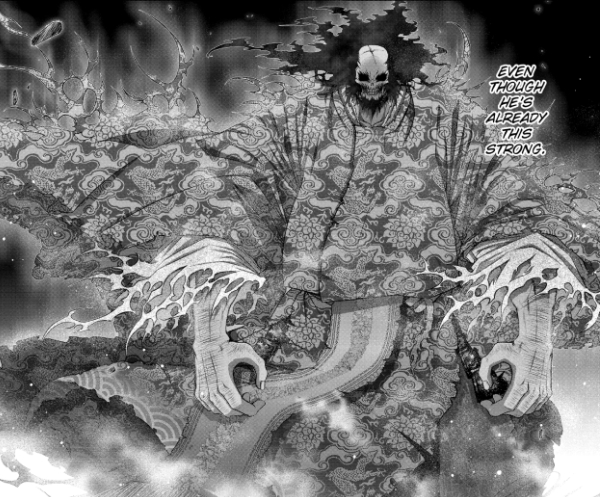
Artistically, the series looks fantastic. Kenichi Kondo draws uncanny apparitions with fine textures and eerie distortions, while even ordinary scenes feel ominous by contrast.
Still, Dark Gathering isn’t perfect. Because it leans into horror first, its character development can lag. Some personalities also feel archetypal: the haunted hero, the genius child, the obsessed friend. Also, the constant shift between dread and fight sequences occasionally produces tonal whiplash. On one page you’re terrified, the next you’re thrown right into a battle.
Despite this, Dark Gathering remains one of the most thrilling ongoing shonen manga. It strikes a rare balance between being genuinely terrifying and exciting, and it invests you in its cast. For readers who want spookiness with real stakes, this is a strong pick.
Genres: Horror, Supernatural, Action
Status: Ongoing
30. Tomodachi Game
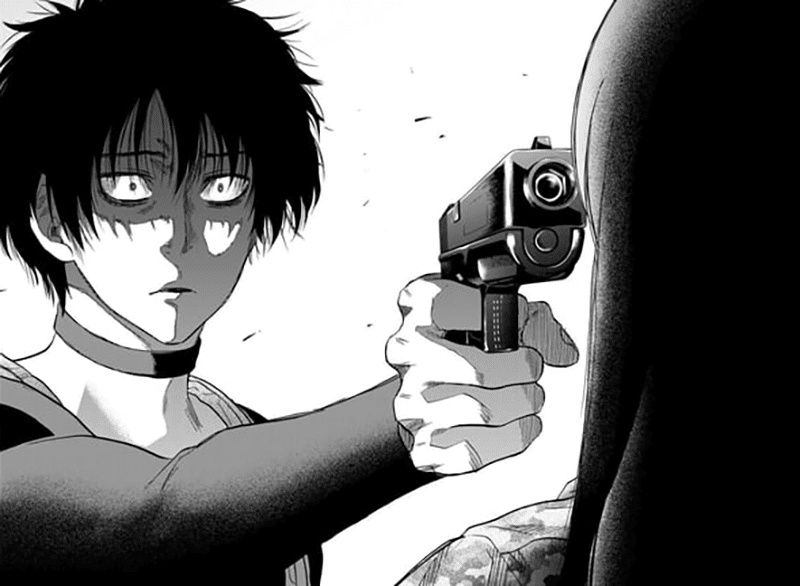
Tomodachi Game by Mikoto Yamaguchi and Yuki Sato is one of the standout mind-game manga of the last decade. It’s a modern shonen series that mixes psychological twists, social experiments, and survival tension. I’ve always loved stories where intelligence and manipulation matter more than fists, and Tomodachi Game scratches that itch perfectly.
The premise is simple but ruthless. High schooler Yuuichi Katagiri and his four friends are kidnapped and forced into a mysterious contest called Tomodachi Game. One of them has secretly stolen their class trip money to enter, saddling everyone with crushing debt. Each game tests loyalty, betrayal, and greed, asking the question at the heart of the series: how much is friendship worth when money and survival are on the line?
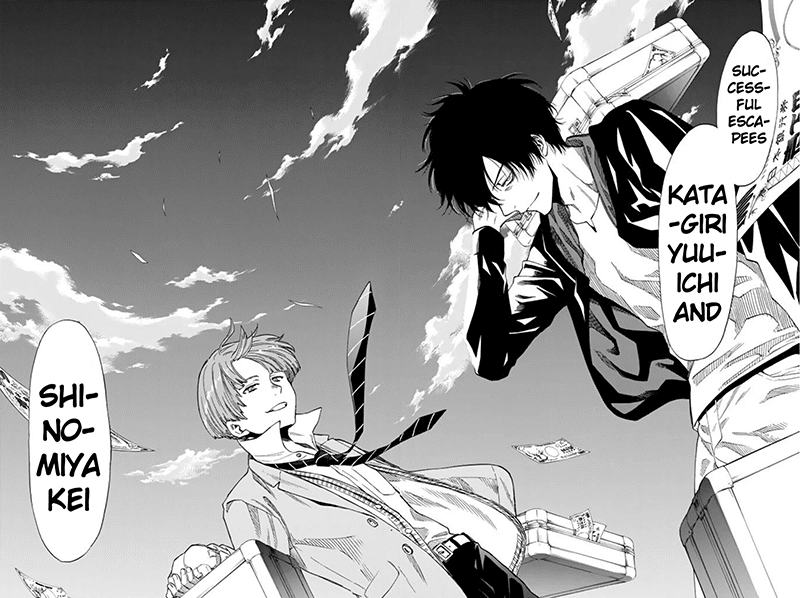
At first, Tomodachi Game seems like a standard psychological thriller. But as the rounds progress, the games grow more elaborate, the stakes higher, and the mystery surrounding the organization deepens. Hints of Yuuichi’s past emerge, but even before those revelations, he’s clearly not your typical good-hearted shonen lead. From the beginning, he’s revealed as a dark, twisted antihero who doesn’t hesitate to use ruthless methods to win. Seeing his dark charisma and psychopathic expressions during key moments is half the thrill, and the art renders his shifts from mild-mannered student to cold manipulator with striking clarity.
Where Tomodachi Game excels is in its setup: each challenge forces characters to out-think, deceive, or manipulate one another, and the story leans heavily into this tension. However, the same strength also becomes a weakness. The series piles twist upon twist, retcons established information, and sometimes breaks its own internal logic to deliver a shock. Over time, the endless twists dull their own impact, since readers begin to anticipate constant reversals. Female characters also enter fan service territory, which can undercut otherwise intense scenes.
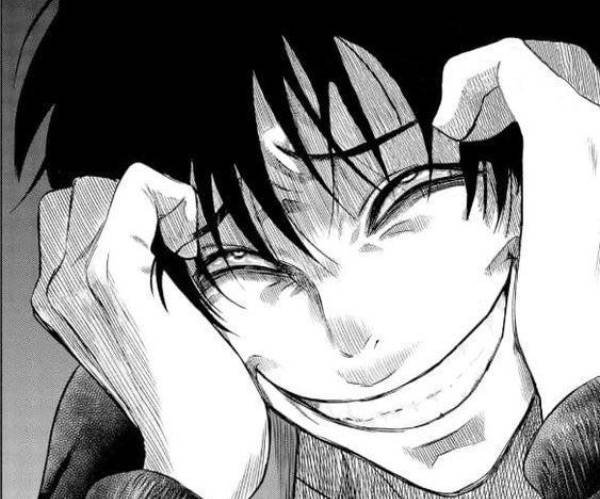
Still, for readers who stick with it, Tomodachi Game offers an addictive mix of suspense, manipulation, and moral collapse. Its final arc resolves the central mystery while maintaining the core theme of whether friends can truly trust one another under pressure. It’s not perfect, but as a shonen mind-game series, it’s one of the best.
Genres: Psychological Thriller, Suspense
Status: Finished
29. GTO
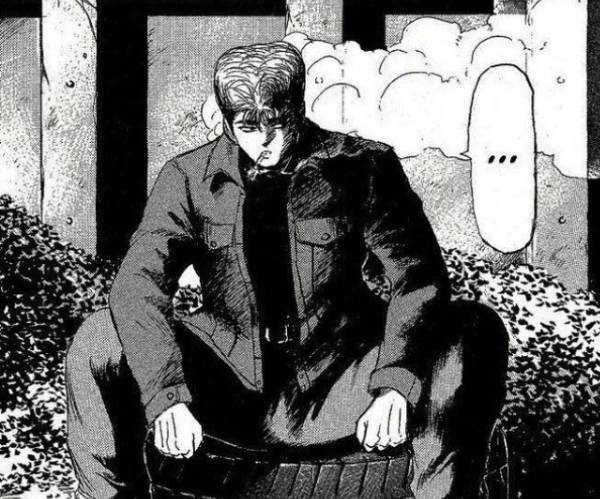
Great Teacher Onizuka by Tooru Fujisawa is one of the most iconic and notorious shonen manga of the 90s. Like many people, I first discovered it through the anime adaptation, but after finishing that I dove into the manga, which is longer, rougher, and even more outrageous.
The premise is simple: Eikichi Onizuka is a 22-year-old ex-biker gang member, martial artist, and unapologetic pervert who decides he wants to become a teacher. When he lands a job, he’s assigned to Class 3-4, a notorious group of troublemakers who’ve driven out every teacher before him. Onizuka uses brute force, bizarre stunts, and occasionally flashes of genuine wisdom to win his students over.
GTO works because of its mix of absurd comedy and surprisingly heartfelt life lessons. Onizuka may be crude, but he’s also an oddball mentor who genuinely wants to help his students. Some of the best moments in the series come when he drops his clownish exterior and gives real, blunt advice or risks everything to protect a kid. These are the moments that elevate him to an unforgettable, almost mythic figure.
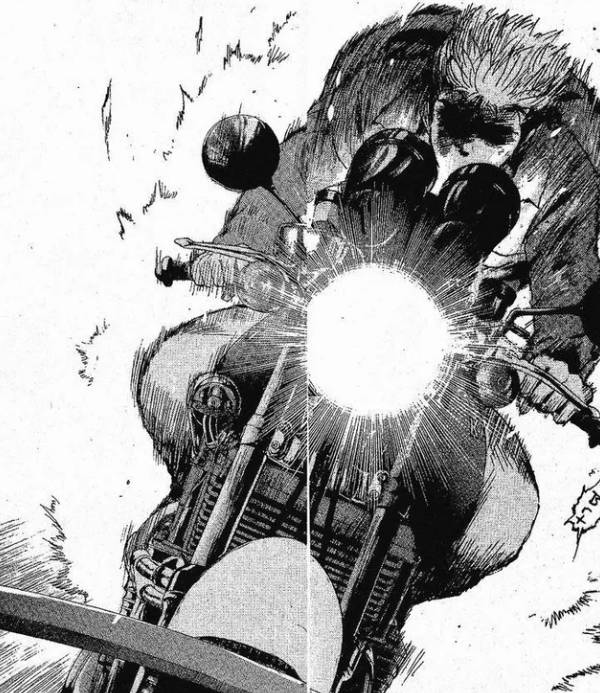
That said, GTO is a product of its time. The manga is full of fan service, voyeuristic gags, and questionable behavior around female characters, all treated as comedy. There are teachers planting hidden cameras, underage characters in compromising situations, and plenty of jokes that haven’t aged well. If you can’t tolerate that, the series may be a tough read.
The art reflects the era as well. It’s detailed and gritty with a very 90s aesthetic: baggy clothes, cigarette smoke, and hard-edged faces. Sometimes it’s hard to tell characters apart, especially among the female cast, but the series compensates with unforgettable reaction faces, exaggerated slapstick panels, and stylish cityscapes that give it real atmosphere.
Despite its flaws, GTO remains a cult classic for a reason. It’s over-the-top, often ridiculous, sometimes sleazy, but also funny, daring, and unexpectedly sincere. Fujisawa strikes a strange balance between outrageous antics and genuinely uplifting moments of mentorship and courage.
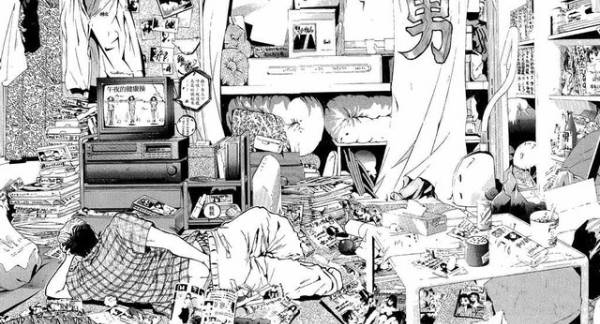
If you’re curious about a manga that defined the late 90s shonen comedy, or you want to experience one of the most infamous teachers in manga history, Great Teacher Onizuka is still worth picking up. It’s a wild ride, but at its best also one of the most inspiring.
Genres: Comedy, Slice of Life, School, Action
Status: Finished
28. To Your Eternity
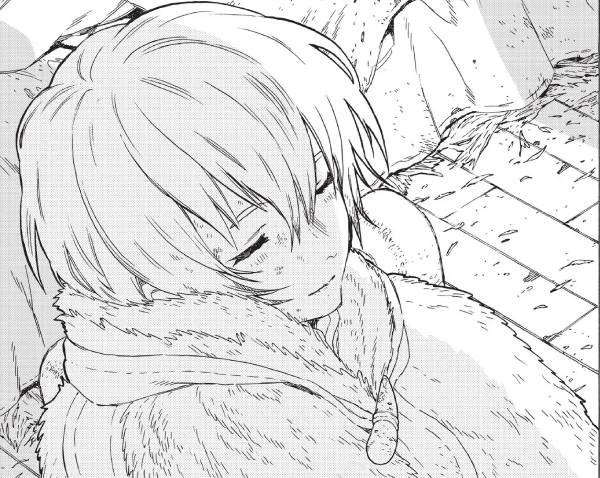
While officially a shonen title, Yoshitoki Ōima’s To Your Eternity stands out for its emotional depth, existential themes, and unflinching look at life and death.
The story begins with a mysterious immortal being lacking identity or emotions. It first exists as a sphere, then takes the form of a rock, moss, and a dying wolf before finally becoming a lonely boy in a deserted tundra settlement. As it travels the world in this human form, the being, eventually named Fushi, meets people, learns from them, and inevitably loses them. Each encounter shapes Fushi, granting new abilities and a deeper understanding of what it means to live and grieve.
To Your Eternity is beautifully drawn, with stark landscapes, expressive character work, and a melancholic yet hopeful tone. The early arcs are especially powerful, offering heartbreaking stories of friendship, sacrifice, and the fleeting nature of life. Characters like March, Gugu, and Pioran leave a lasting impression and give the series its emotional core.
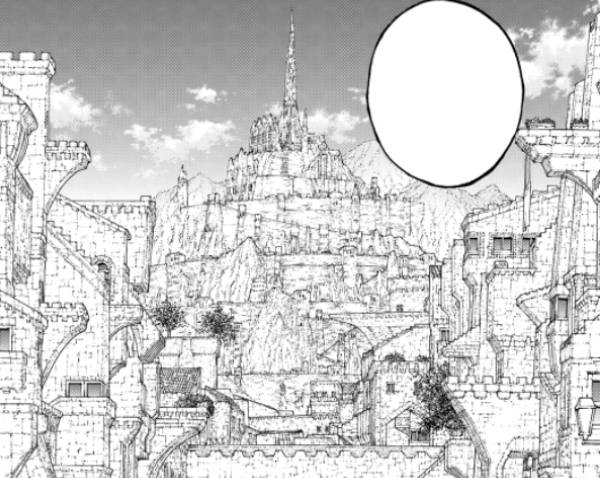
That said, the manga has flaws. As the story progresses through different eras and settings, it sometimes leans too heavily on tragedy, introducing new characters, only for their story to end in tragedy. Some later arcs also divide readers, with critics pointing to uneven pacing and a lack of resolution to certain mysteries. Still, these issues don’t erase the impact of the earlier volumes or the sheer originality of the concept.
At its heart, To Your Eternity is about connection, growth, and the beauty and pain of being alive. If you’re drawn to manga that makes you think and feel in equal measure, check this series out. It’s one of the best and most emotional shonen manga you can experience.
Genres: Supernatural, Drama, Tragedy
Status: Finished
27. Aposimz
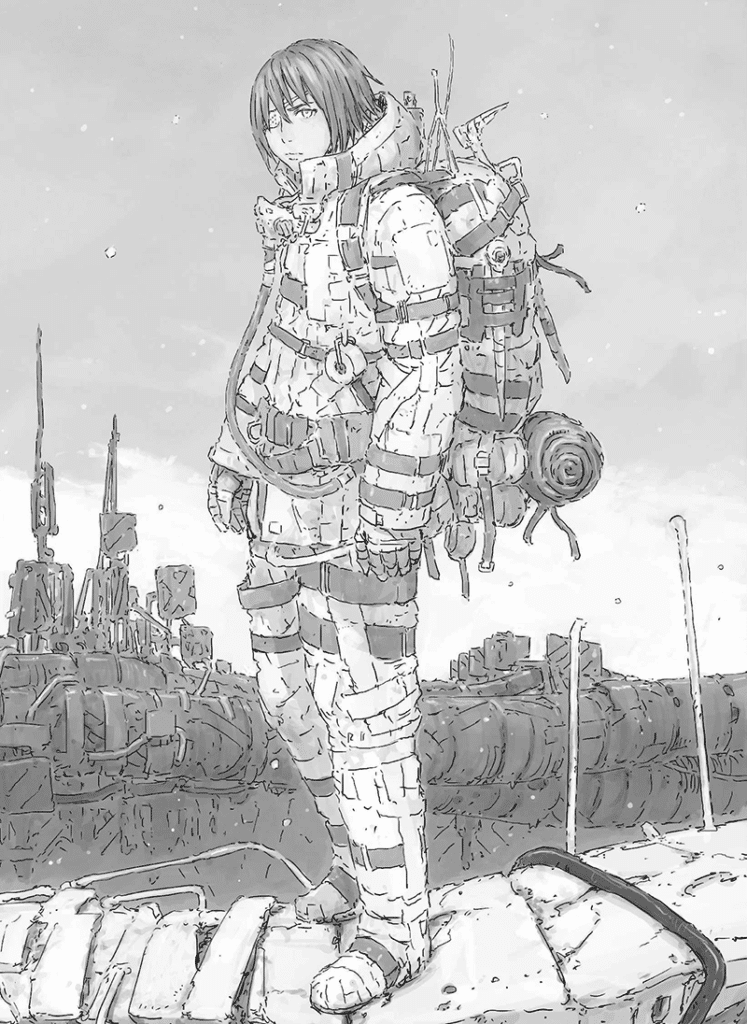
I’ve been a fan of Tsutomu Nihei for years, from Blame! to Abara, and his blend of science-fiction, cyberpunk, and architectural imagination has always been close to my heart. Aposimz is one of his newer works, and it’s both familiar and strikingly different. His earlier works leaned into shadows and density; Aposimz is bleached, open, almost alien in its sparseness.
The manga is set on Aposimz, an artificial world built around a hollow core. After humanity’s defeat by the inner core, its survivors are stranded on the frozen surface, struggling against merciless automatons. In this desolate landscape steps Etherow, a young man whose life changes when he encounters Titania, a fugitive being hunted down by the Rebedoan Empire. Helping her draws the Empire’s wrath. Etherow’s home is destroyed, he’s mortally wounded, and then transformed into a Regular Frame, a highly advanced cyborg body. From that moment on, he pledges himself to Titania’s cause and to avenging his people.
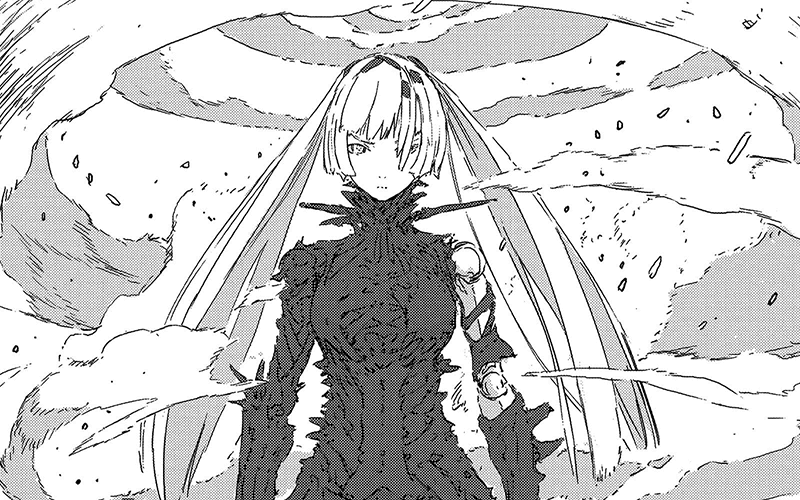
On paper, the story seems straightforward: boy meets fugitive, gets powers, and joins a rebellion. Yet Nihei’s presentation makes it an entirely different experience. Aposimz feels like a myth. Instead of the labyrinthine, bleak setting of Blame!, we get white wastelands, crumbling relics, and endless skies. The stark art style gives everything a nuclear-winter aesthetic, emphasizing fragility and exposure over claustrophobia. It’s unmistakably Nihei, but seen through an inverted lens.
The worldbuilding is another highlight. Aposimz is steeped in tribal customs, oral histories, and a sense of forgotten grandeur. Empires, rebel enclaves, and wandering cyborgs intersect in a way that suggests hidden secrets. As always with Nihei, few things are ever fully explained; origins remain mysterious, and we as readers experience the world’s wonder and confusion alongside its characters.
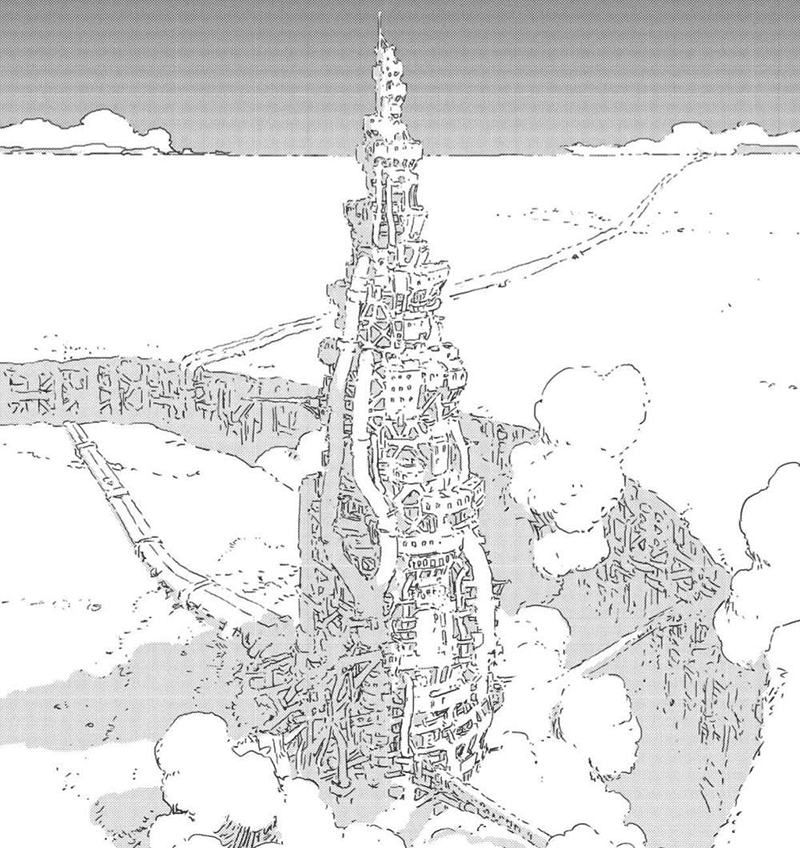
Yet the story also carries Nihei’s more recent tendencies. Like Knights of Sidonia, Aposimz is more accessible and more character-driven than his earlier, grittier work. Despite the harsh setting, it reads more like a shonen adventure than a grim seinen nightmare. The characters, while serviceable, are thinly sketched: Etherow, Titania, and later Keisha mostly exist to drive the plot forward. Villains fare no better, often acting as one-note foils. This distance makes it hard to feel invested in their struggles.
Still, Aposimz rewards readers who come for spectacle. Nihei’s designs of cyborg bodies, automated predators, and alien landscapes are mesmerizing. The action sequences carry his trademark sense of scale and precision. The whitewashed art and empty spaces may take some time getting used to, but once you’re attuned, it’s like stepping onto a glacier lit by a dying sun.
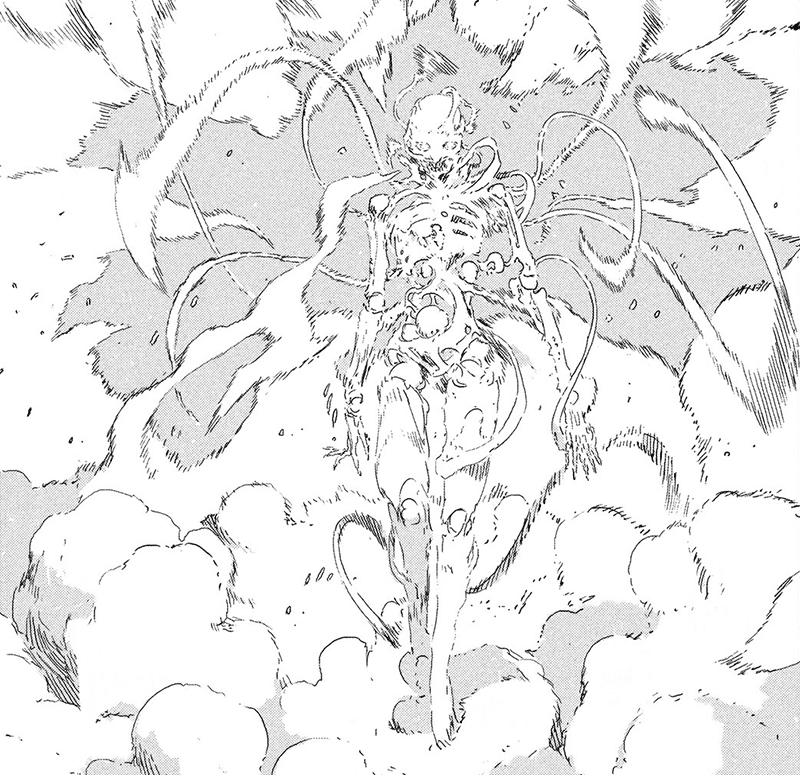
Overall, Aposimz may lack the density and mystery of Nihei’s classic works, but it remains a powerful entry in his catalog. It’s a hybrid of shonen manga and high-concept science-fiction. If you’re interested in strange artificial worlds, cybernetic transformations, and stark posthuman landscapes, it’s worth reading. While the story and characters aren’t its strongest points, the worldbuilding alone makes Aposimz one of the most distinctive modern shonen manga of recent years.
Genres: Science Fiction, Cyberpunk, Action
Status: Finished
26. Devilman
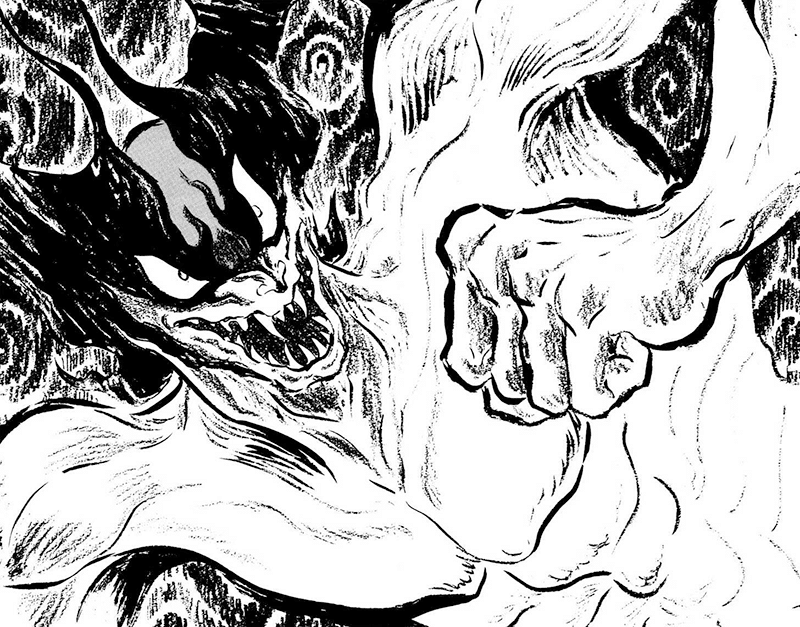
Go Nagai’s Devilman is the oldest entry on this list. First serialized in 1972, it remains one of the strangest, darkest, and most influential shonen manga ever published. Despite its age, its impact still reverberates; it even inspired Netflix’s acclaimed 2018 adaptation Devilman Crybaby, which introduced the franchise to a new generation of readers.
The story follows Akira Fudo, an unassuming teenager who becomes humanity’s reluctant savior. In Devilman’s world, powerful demons lurk beneath the surface, far stronger than any human. Akira’s friend Ryo Asuka believes that if a person with a pure heart merges with a demon, they can harness its powers for good. This experiment succeeds, and Akira fuses with the mighty demon Amon to become Devilman, fighting back against demonic incursions and uncovering a much larger threat to humanity.
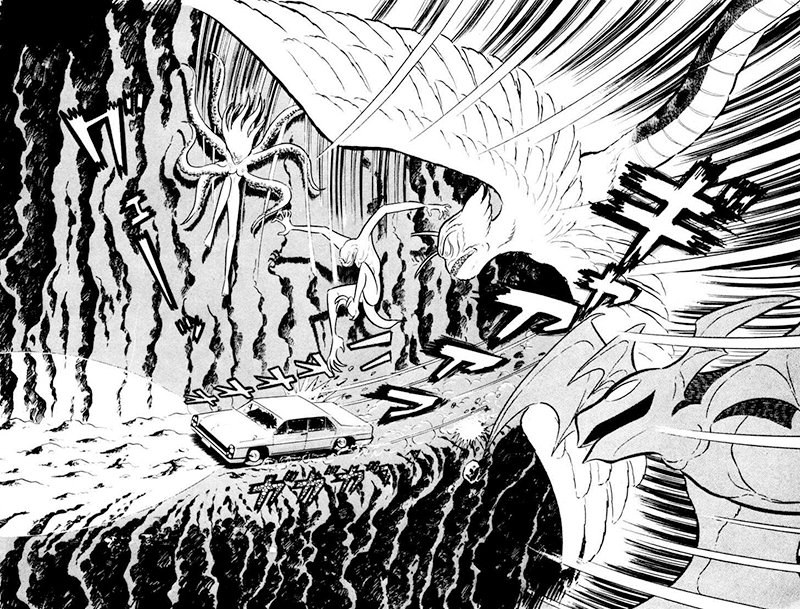
At first glance, Devilman looks like a typical 70s super-powered action manga: a clear good-versus-evil setup with a hero who transforms to fight monsters. But reading it reveals something far stranger. Go Nagai gradually shifts the tone from monster-of-the-week battles to something much more apocalyptic and morally ambiguous. While demons are violent and terrifying, humans prove capable of equal cruelty, and society itself unravels in paranoia and violence.
Devilman is messy and experimental. Pacing jumps from small episodic arcs to huge time skips. Events escalate with little transition, and entire swaths of exposition vanish between chapters. It often feels as if Nagai was following a dream logic or rushing to pour his ideas onto the page. But that chaos is also part of its energy: you never know what’s coming next, and the ending is one of the most memorable in manga history. It’s divisive. Some readers love it, others hate it, but it’s unforgettable.
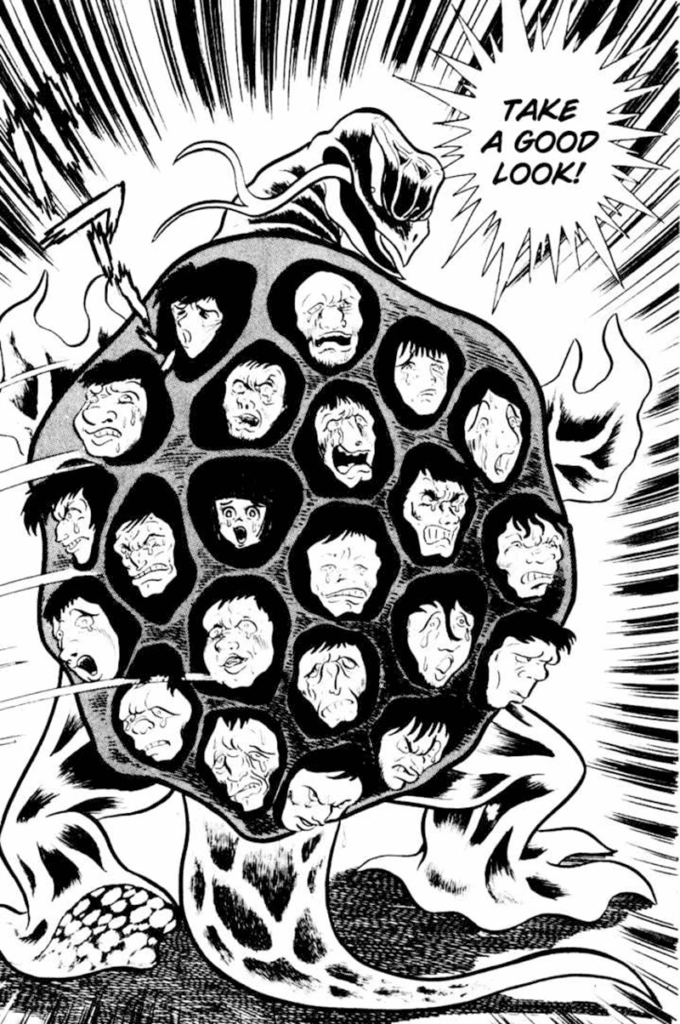
Visually, Devilman shows its age. The art is simple, cartoonish, and at times awkward. Yet there’s an eerie charm in its big eyes, exaggerated anatomy, and grotesque demons. Akira, Ryo, and Miki are archetypal characters: the heroic lead, the mysterious friend, the love interest. Yet their simplicity allows the wild imagery and apocalyptic themes to take the center stage.
In the end, Devilman is pure madness: a 70s shonen manga that starts conventionally and then spirals into cosmic tragedy. It’s weird, uneven, but also groundbreaking, with moments of genuine brilliance buried in its chaos. If you’re open to older art styles and experimental storytelling, Devilman is a must-read. It’s one of the most unique and enduring shonen manga ever created.
Genres: Dark Fantasy, Action, Supernatural
Status: Finished
25. Jujutsu Kaisen
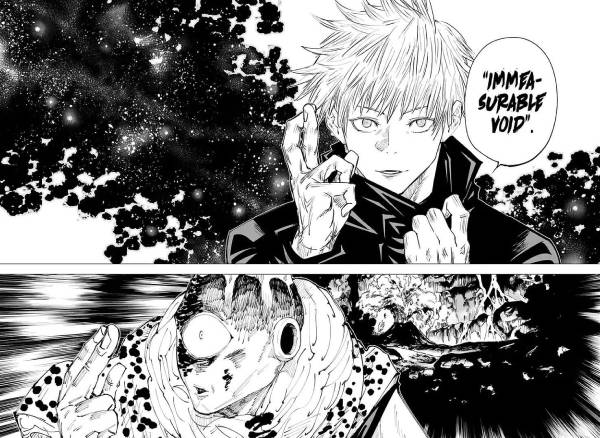
Jujutsu Kaisen by Gege Akutami started out as one of the strongest new shonen of the 2010s. It combined slick art, dark supernatural elements, and a modern take on battle manga that immediately drew comparisons to such titles as Bleach and Yu Yu Hakusho.
The premise is classic but effective. Curses, manifestations of negative human emotions, plague the world, and Jujutsu sorcerers fight to exorcise them. When high schooler Yuuji Itadori swallows a curse object to save his friends, he becomes the vessel of the legendary Curse Sukuna. Instead of executing him immediately, the sorcerer world offers Yuuji a deal: consume all of Sukuna’s remains first, then die to destroy him for good. From there, Yuuji enters Jujutsu High and is thrown into a brutal world of exorcists and monsters.
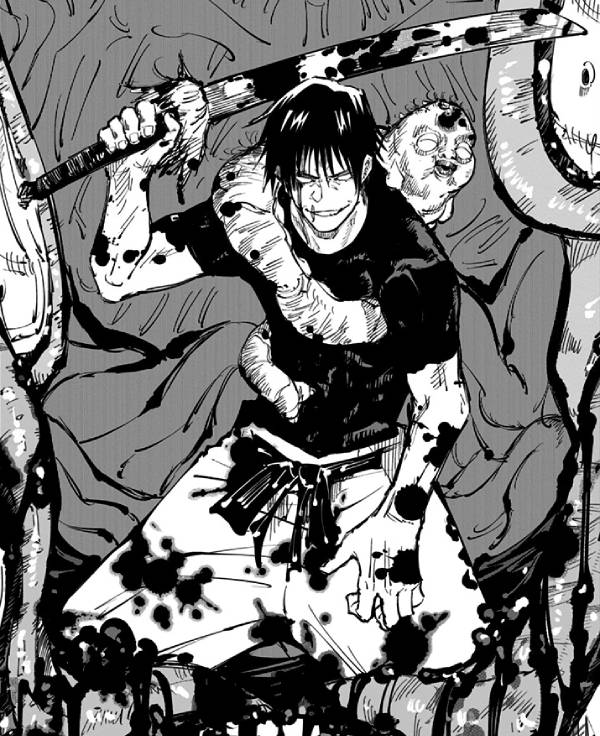
The early parts of Jujutsu Kaisen are fantastic. The pacing is brisk, the stakes are high, and the characters are instantly memorable. Standouts are Gojo Satoru and Nanami, while Mahito is one of the best unhinged antagonists in recent shonen, giving the series a genuine horror edge.
Once the series moves past the Shibuya Incident arc, however, the cracks begin to show. The cursed technique system, which was once satisfying and creative, becomes increasingly convoluted, leading to dense exposition dumps that rival those of Hunter x Hunter. Characters are hyped up only to die off-screen or lose anticlimactically. The final arc turns into a repetitive slugfest of Sukuna versus nearly everyone.
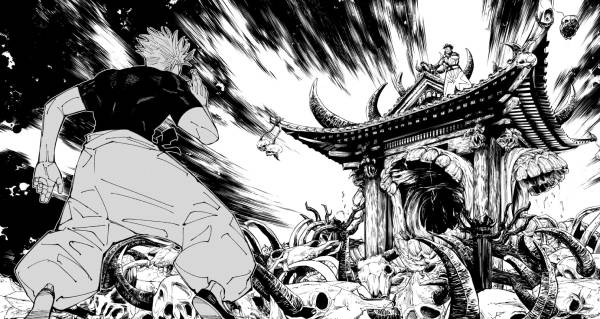
Then there’s the ending. It feels abrupt, rushed, and leaves little room for emotional resolution. Most loose ends are tied off, but the result feels more like an outline than a full conclusion. After such a strong start, it’s disappointing to see the story fizzle out like that.
Even with those flaws, Jujutsu Kaisen is still one of the defining shonen manga of its era. Its first half is stylish, tense, and full of memorable moments; its cast and art alone justify checking it out. Just be prepared; after Shibuya, things get complicated, and not always in a good way.
Genres: Action, Supernatural, Dark Fantasy, Horror
Status: Finished
24. Naruto
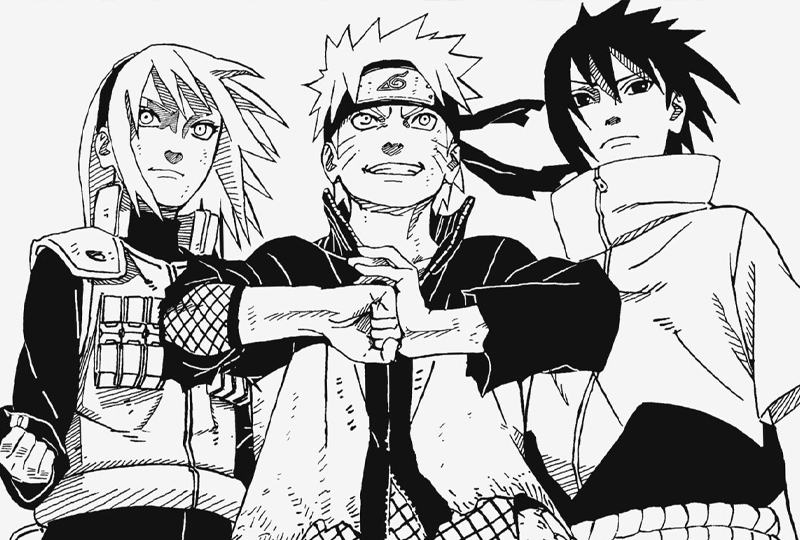
Naruto by Masashi Kishimoto is one of the most famous manga ever written and is my favorite of the old Big 3. While it’s remembered today as a global juggernaut, I think the real strength of Naruto lies in its first half. Back then, it was a grounded, clever ninja story built on tactics, training, and personal growth.
Naruto Uzumaki is an outcast orphan with the Nine-Tailed Fox sealed inside him. Mocked by the village but determined to become Hokage, Naruto is placed on Team 7 alongside Sasuke Uchiha, Sakura Haruno, and their teacher Kakashi. From there, the series follows their growth as shinobi while exploring a hidden world of rival villages, secret organizations, and legendary ninja.
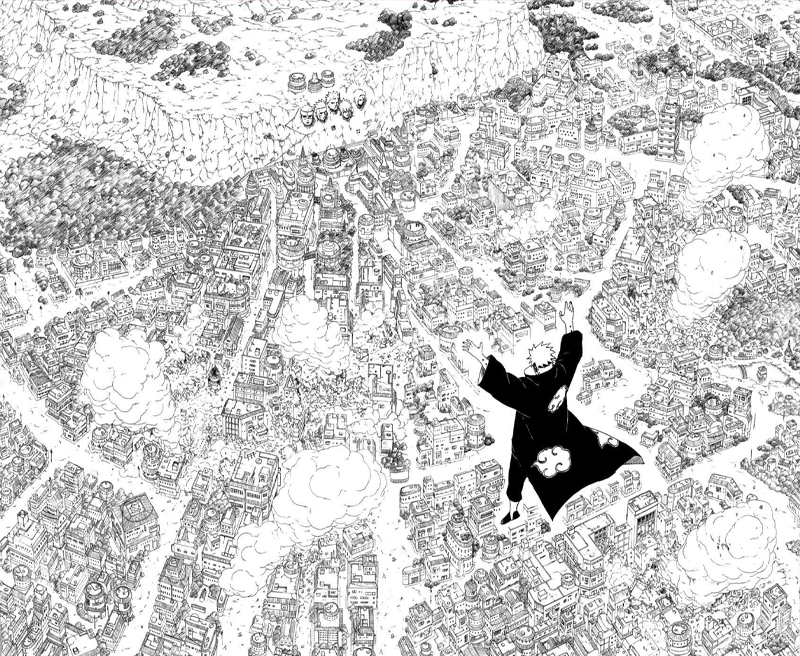
The early arcs of Naruto are peak shonen storytelling. The Chunin Exam remains one of the best tournament arcs ever, blending character development, clever battles, and memorable rivalries. The following arc, the invasion of Konoha, raises the stakes dramatically and cements Naruto as a top-tier action series. Even the start of the second half delivers by introducing the Akatsuki, one of the coolest villain groups in shonen history. These antagonists gave us some of the best fights and most stylish designs in the series.
Unfortunately, Naruto loses its way after that. The Fourth Shinobi War arc drags on for far too long. What was once a story about teamwork, stealth, and strategy morphs into massive energy beams and godlike powers. Then there’s Kaguya, the last-minute, universe-level villain. Her arrival completely shifts the narrative and retroactively diminishes the arcs of Naruto and Sasuke. By the end, the series feels bloated and far removed from its simple roots.
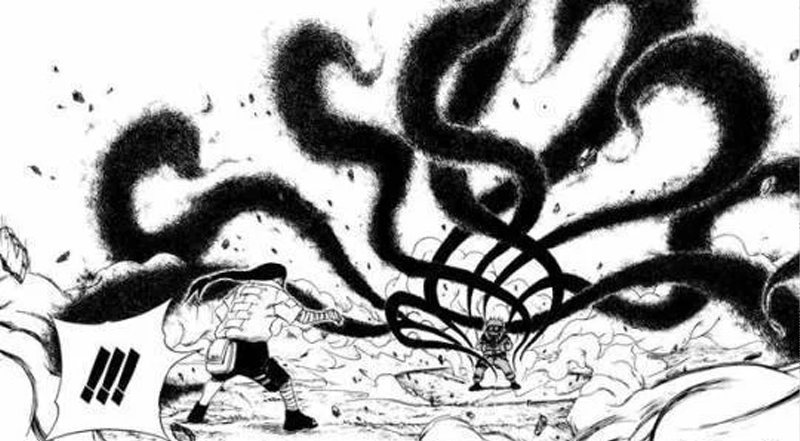
That said, the first half of Naruto is still an outstanding shonen. The hand signs, traps, and jutsu counters made fights feel like tactical puzzles rather than simple slugfests, and the character arcs of Naruto, Gaara, Rock Lee, and others were some of the best of the era. Even in the second half, Kishimoto occasionally hits greatness, with the Pain invasion arc remaining legendary.
Overall, Naruto is a classic for a reason. Its highs represent some of the best shonen battles ever published, even if the later arcs became overblown. If you’ve never read it, I recommend at least experiencing the first half.
Genres: Action, Adventure, Martial Arts, Fantasy
Status: Finished
23. Bakuman
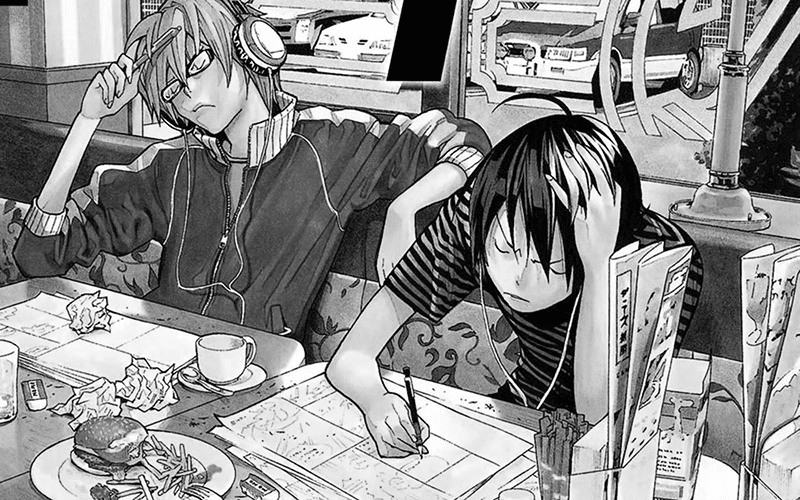
How could a manga about making manga ever work? Bakuman answers that question with style. Created by Tsugumi Ohba and Takeshi Obata, the legendary duo behind Death Note, it turns deadlines, editors, and creative rivalries into a gripping shonen saga.
The story follows Moritaka Mashiro and Akito Takagi, two high school students who decide to become professional mangaka. Mashiro handles the art, Takagi writes the stories, and together they set their sights on serialization in Weekly Shonen Jump. At its heart, Bakuman is a battle manga where the fights happen on drawing tablets, sales charts, and popularity polls. Every new rival artist, every editorial decision, and every serialization meeting becomes a dramatic showdown.
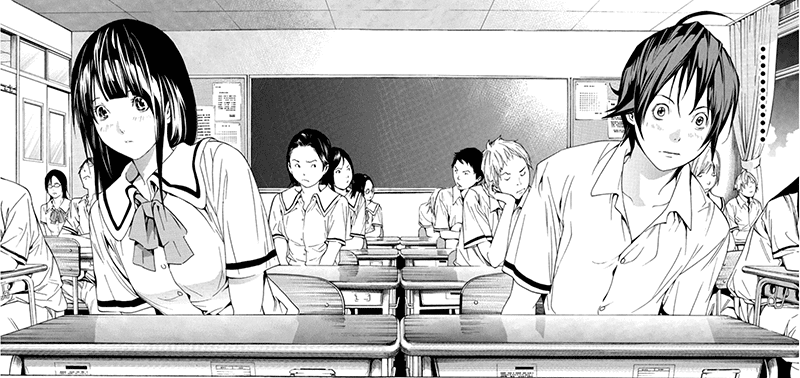
What makes Bakuman so compelling is its dual tone. On one hand, it’s optimistic and celebratory, showing the thrill of creative ambition and camaraderie between artists. On the other hand, it’s brutally honest about the manga industry. Deadlines are relentless, competition is fierce, and the risk of cancellation or burnout looms constantly. We learn early on that Mashiro’s uncle, also a mangaka, died from overwork. It’s a sobering reminder of how high the stakes can be behind the scenes. This tension between aspiration and reality gives Bakuman its drive.
The cast is another highlight. Beyond Mashiro and Takagi’s partnership, the manga fleshes out an entire ecosystem of rivals, editors, and fellow creators. Eiji Niizuma, the eccentric genius, and Kazuya Hiramaru, the awkward veteran, are just two standouts in a cast full of memorable personalities. Watching them clash, grow, and sometimes fail brings the industry vividly to life.

Visually, Obata is at the top of his game. Every workspace, office, and Tokyo backdrop feels authentic. Even more impressive, the series presents the fictional manga its characters create, with each one rendered in a different style that convincingly feels like another artist drew it. It’s an astonishing showcase of Obata’s versatility.
Bakuman isn’t flawless. The romance between Mashiro and Azuki starts as a love at first sight cliché and remains one of the weakest elements. Azuki herself feels flat and underdeveloped compared to the cast of mangaka. The romantic subplot also sometimes distracts from the central story about creative struggle and friendship.
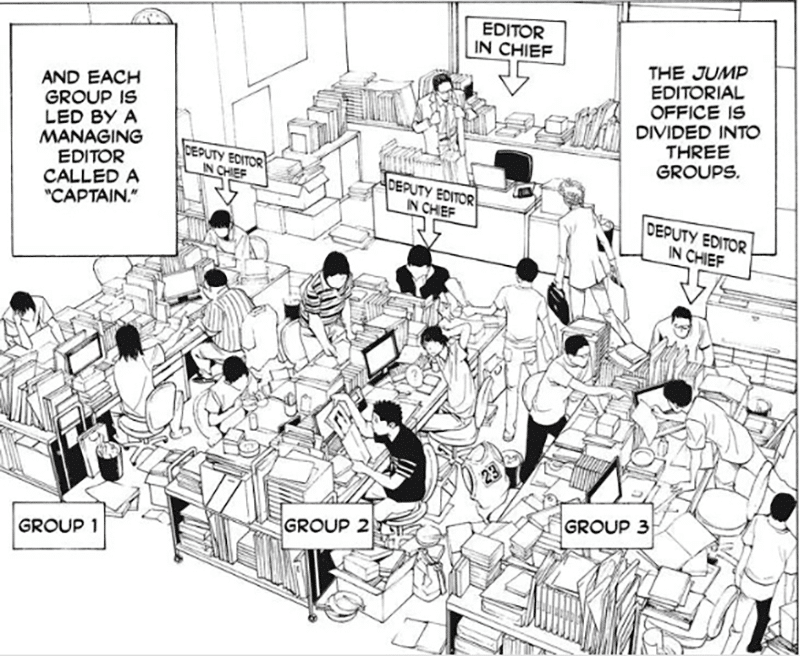
Still, Bakuman is one of the most unique and engaging shonen manga ever published. By turning the creation of manga into its own high-stakes arena, Ohba and Obata crafted a series that’s as informative as it is thrilling. It’s a love letter to ambition, craft, and competition.
Genres: Slice of Life, Comedy, Drama
Status: Finished
22. Magi: The Labyrinth of Magic
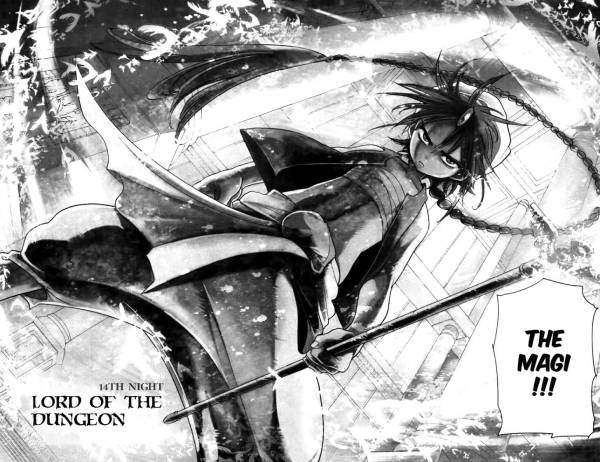
Magi: The Labyrinth of Magic by Shinobu Ohtaka is one of the purest adventure shonen manga of the 2010s. It’s a sprawling blend of dungeon diving, political intrigue, and mythic fantasy rooted in the stories of One Thousand and One Nights.
The series begins with Aladdin, a young Magi, and his djinn companion Ugo. Early on, Magi feels nostalgic, like a classic shonen quest full of treasure-filled dungeons, magical artifacts, and new friendships.
Characters like Alibaba and Morgiana quickly join the cast, and their first arcs are full of energetic battles, clever traps, and thrilling escapes. The humor here is classic shonen, full of silly misunderstandings and exaggerated reactions. Still, it’s charming enough to balance the darker elements.
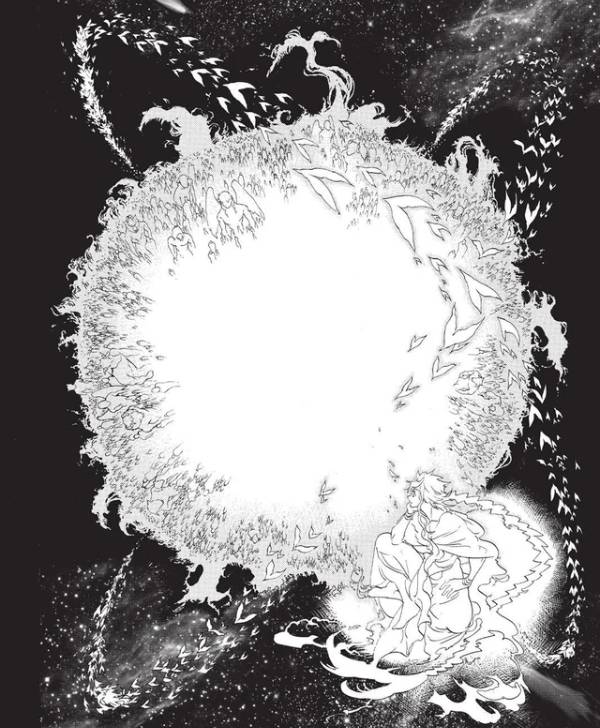
Where Magi distinguishes itself is in its worldbuilding. What starts as a straightforward quest soon expands into a multi-continent epic full of warring empires, revolutionaries, and deep questions about freedom, slavery, and the role of power. Ohtaka puts genuine effort into her political systems and culture. At times, Magi reads like a shonen political thriller, with high stakes and surprising moral complexity.
The characters are another highlight. Alibaba’s self-doubt, Morgiana’s path toward freedom, Hakuryuu’s tragic arc, and Sindbad’s manipulative brilliance give the story a sense of evolving, interconnected lives rather than static archetypes. Watching these characters grow is one of the manga’s greatest strengths.
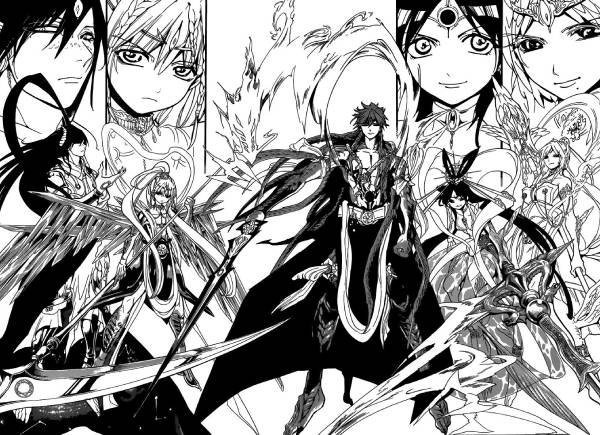
That said, the manga’s final third is famously divisive. The djinn equip system and increasingly spectacular power-ups shift Magi from an adventure-political hybrid into a much flashier, more conventional battle manga. Long lore dumps replace earlier, tighter storytelling. Even worse is the ending, which feels abrupt to some, and contradictory to earlier themes to others. For many readers, the charm of the first half gets lost under layers of cosmic lore and overexplanation.
Still, when Magi is good, it’s very good. The early dungeon arcs and the first major political storylines are some of the best in fantasy shonen manga of the past decade, and Ohtaka’s art shines in big spreads and richly detailed locations. If you’re looking for a colorful, myth-inspired adventure that grows into something much larger, Magi is well worth reading.
Genres: Adventure, Fantasy, Action
Status: Finished
21. Aku no Hana
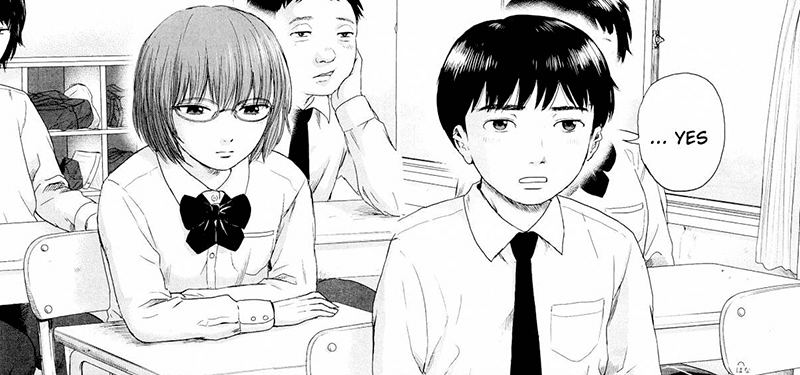
Shūzō Oshimi’s Aku no Hana, also known as The Flowers of Evil, is one of the most daring psychological manga I’ve read in recent years. Oshimi takes a familiar middle school setting and turns it into a stage for obsession, humiliation, and self-discovery.
The story follows Takao Kasuga, a shy and bookish student with a passion for Baudelaire’s Les Fleurs du Mal. One day he forgets his book at school, stumbles across the gym clothes of his crush Nanako Saeki, and, acting on impulse, steals them. Unfortunately, his transgression is witnessed by Sawa Nakamura, a foul-mouthed and unpredictable classmate who seizes on his secret to blackmail him. A shameful mistake spirals into a psychological tug-of-war between the three.
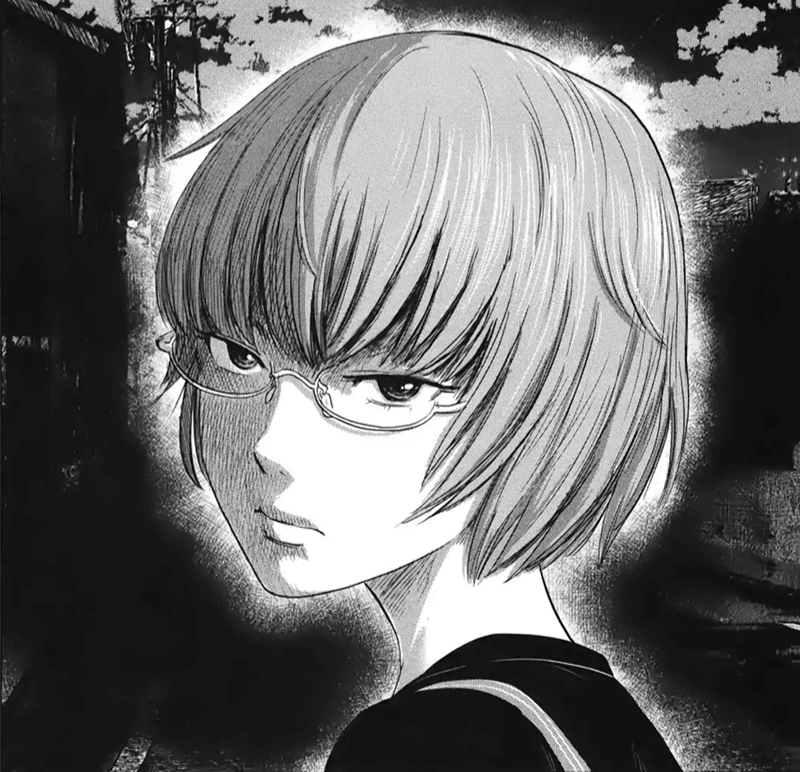
At first glance, Aku no Hana looks like another school life shonen manga, but it’s not. It’s a coming-of-age story about alienation, puberty, and the disorienting pressure to conform. All of this is wrapped in a tone that starts unsettling and grows increasingly surreal. As Sawa’s demands escalate, the plot pushes further into taboo and emotional violence, exposing the raw, confused interior of its characters. Oshimi’s skill lies in showing not only the consequences of their actions but the reasons they’re drawn to self-destructive behavior in the first place.
The cast is painfully human. Kasuga, Saeki, and Nakamura are not archetypes, but flawed, sometimes disturbing people. Their interactions feel both intimate and raw. The manga also explores broader themes with a seriousness rarely seen in shonen manga: grief, longing, social alienation, and the blurred line between rebellion and self-destruction.
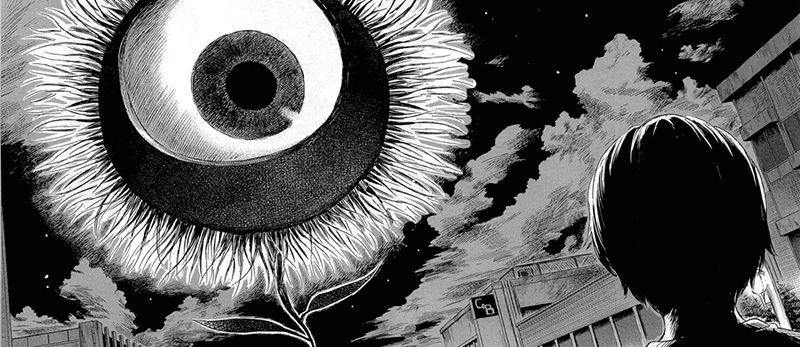
Visually, Aku no Hana is one of Oshimi’s most striking efforts. Characters are rendered in realistic, almost vulnerable detail. The art captures emotions and atmosphere as much as events: tense silences, shameful glances, and the oppressive stillness of small-town life. As the story grows darker, so too does the world itself, with more twisted linework and surreal imagery creeping into the panels.
The second half of the series divides readers. Gone is the lurid, outlandish tone of the earlier arc. In its place is a slower, more reflective narrative about trauma, consequences, and rebuilding a broken self. For me, this shift worked surprisingly well. It’s a necessary continuation that grounds the story after its feverish first half.
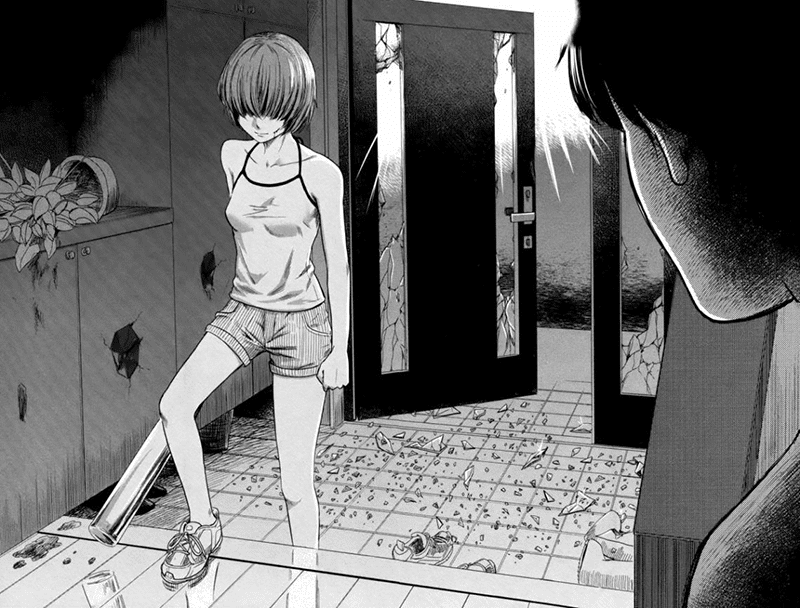
My only real criticism is how quickly and extremely the first half escalates. The blackmail started off relatively normal, but quickly spiraled into unreal territory that more than stretched plausibility at times.
Despite that, Aku no Hana remains one of the most fascinating psychological shonen manga I’ve ever read. It’s symbolic, uncomfortable, and deeply human.
Genres: Psychological, Drama, Coming-of-Age
Status: Finished
20. Fire Punch
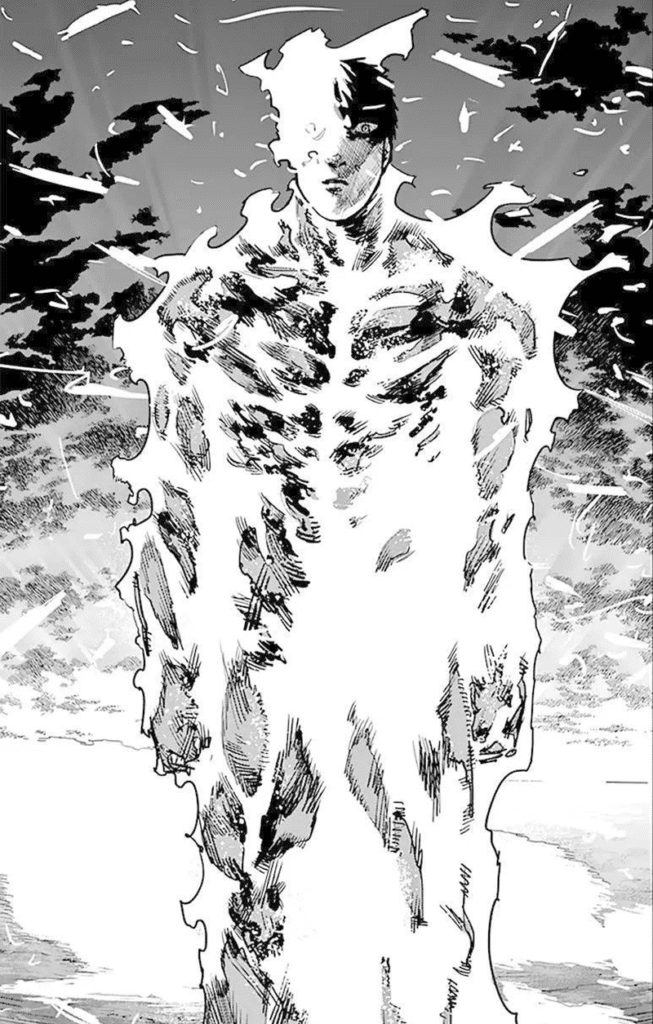
Tatsuki Fujimoto’s Fire Punch is one of the strangest, bleakest and most unpredictable shonen manga of the last decade. Created before Chainsaw Man made him a globally recognized name, it’s a frozen fever dream of revenge, meta-commentary, and pure misery. If you’ve read Fujimoto’s later work, you’ll recognize many of his trademark elements here, but Fire Punch feels rawer, riskier, and even less constrained.
The premise is simple and horrifying. In a world locked in perpetual winter after the Ice Witch’s curse, humanity has turned desperate and savage. Cannibal cults, military atrocities, and systematic abuse are normal. Agni and his sister Luna are Blessed with regenerative powers, surviving in a small village. When a commander named Doma burns their entire community with inextinguishable flames, Luna dies, but Agni does not. His regeneration keeps him alive, endlessly burning in agony for years. He conditions himself to endure the pain, and sets out across the ice to take revenge.
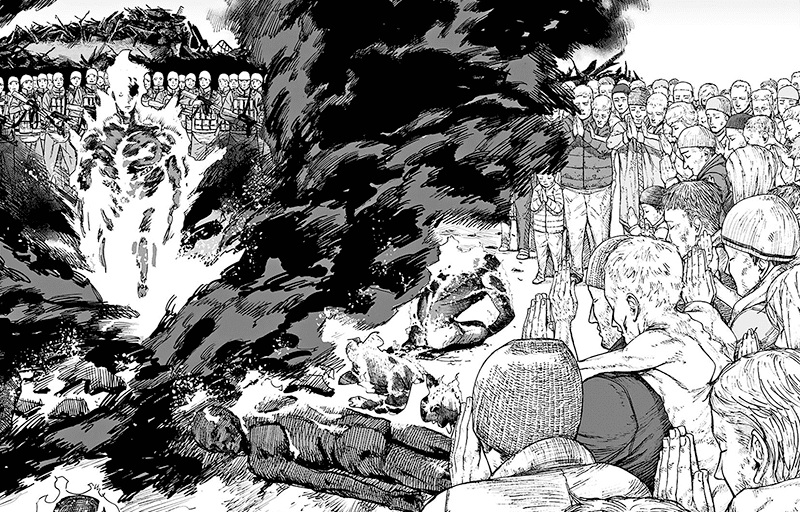
That alone would make Fire Punch disturbing, but Fujimoto escalates further. Cannibalism, sexual violence, dismemberment, and mass slaughter aren’t just isolated moments, but part of the manga’s baseline. It’s not just gory; it’s emotionally corrosive, showing how humans deform under extreme conditions. Early chapters feel almost too nihilistic, as if Fujimoto is daring readers to continue.
Then everything changes. Midway through, we meet Togata, a deranged cinephile obsessed with immortalizing Agni’s suffering on film. Suddenly, Fire Punch becomes meta, mocking shonen tropes, breaking character arcs, and parodying its own violence. Togata acts as a stand-in for Fujimoto, commenting on story beats and explaining how narratives should go. This is Fire Punch at its strongest: a furious satire about art, spectacle, and our hunger for suffering dressed up as entertainment.
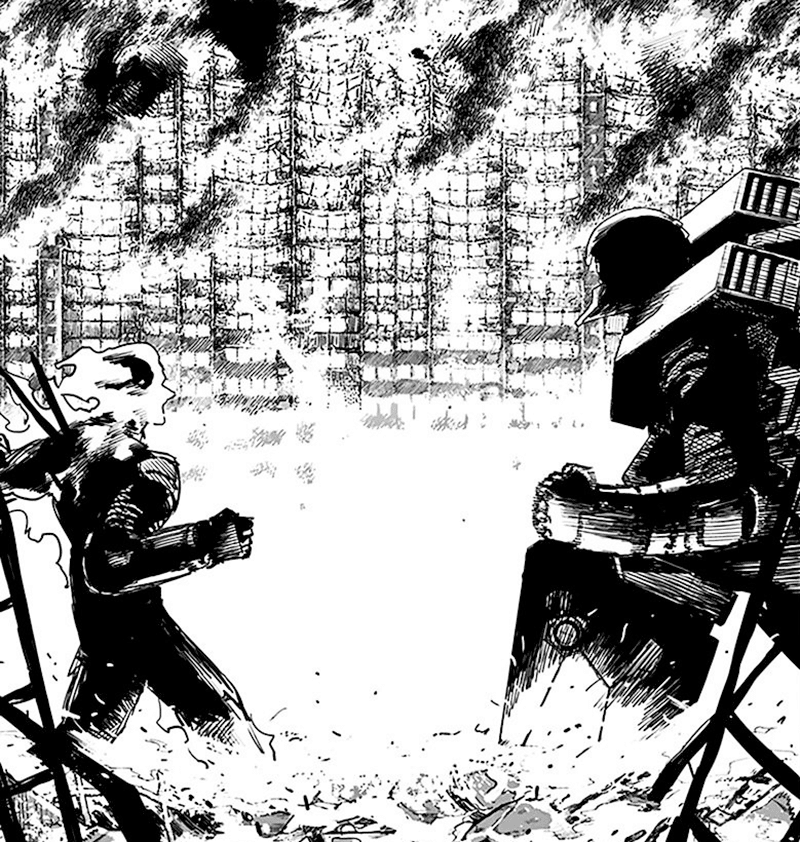
But the manga never lets you relax. After Togata’s arc, Fire Punch lurches back into misery and chaos; its revenge plot collapses into philosophical musings on godhood, identity and the emptiness of narrative itself. Its final act is one of the strangest in modern shonen manga, and I still can’t decide if it’s brilliant or utter nonsense.
Visually, Fire Punch is classic early Fujimoto. Sketchy yet kinetic linework, grotesque textures, and an eye for barren spaces create a hellscape that feels both realistic and surreal. The frozen wasteland becomes a character in itself, amplifying the isolation and despair.
Fire Punch isn’t for everyone. It’s bleak, violent, and often absurd, but also experimental in ways few shonen dare to be. For those who endure the cruelty, it’s a fascinating, unforgettable glimpse of Fujimoto at his rawest.
Genres: Horror, Gore, Post-Apocalyptic
Status: Finished
19. Gintama
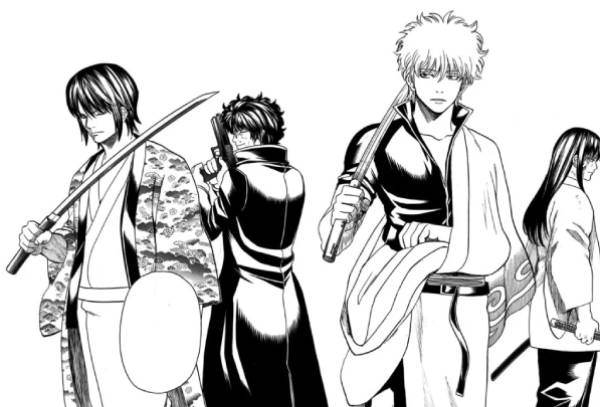
Gintama by Hideaki Sorachi is one of the longest-running and strangest shonen manga of all time. It’s a mix of slapstick comedy, science-fiction samurai action, and a surprisingly heartfelt drama. At over 700 chapters, it’s the longest series on this list and one of the most rewarding.
Set in an alternate Edo period where aliens called the Amanto have taken over Japan and banned swords, the series follows Gintoki Sakata, an out-of-work samurai who now does odd jobs alongside straight-laced apprentice Shinpachi, gluttonous alien powerhouse Kagura, and their massive pet dog, Sadaharu. On the surface, Gintama seems like a gag manga parodying every trope under the sun, from other shonen hits to Japanese pop culture itself. Sorachi breaks the fourth wall, piles on ridiculous running jokes, and gleefully mocks his own storylines.
Yet beneath the absurdity is an unexpectedly rich world and cast. The Yorozuya trio begins as archetypes but gradually reveal real vulnerability, while the supporting cast are fleshed out with personal arcs that rival those of the main characters. When Sorachi switches from slapstick to gut-wrenching flashbacks, he does so seamlessly.
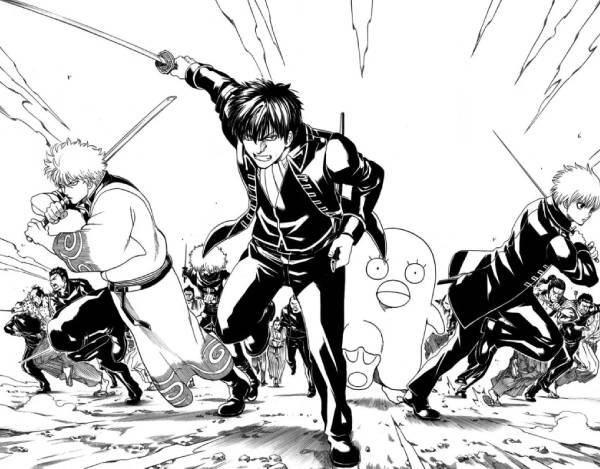
The art is solid rather than spectacular, but Sorachi’s paneling and expressions serve the comedy and fights well. Over time, his action scenes become sharper and more dynamic, especially in the larger serious arcs like the Benzakura or Shogun Assassination arcs.
Where Gintama truly shines is in its ability to deliver both cathartic comedy and cathartic drama. Readers come for the jokes but stay for the sense of camaraderie, the small life lessons, and then unexpectedly brutal samurai showdowns.
That said, its length and tonal shifts can be challenging. Some readers find the final arcs and ending divisive, but for most fans, the journey more than compensates for the destination.
If you’re looking for a shonen manga that’s completely unafraid to be ridiculous one chapter and deadly serious the next, Gintama is a unique experience. It’s science-fiction samurai chaos, pure gag-manga energy, and heartfelt character drama all in one.
Genres: Comedy, Action, Sci-Fi, Samurai
Status: Finished
18. Death Note
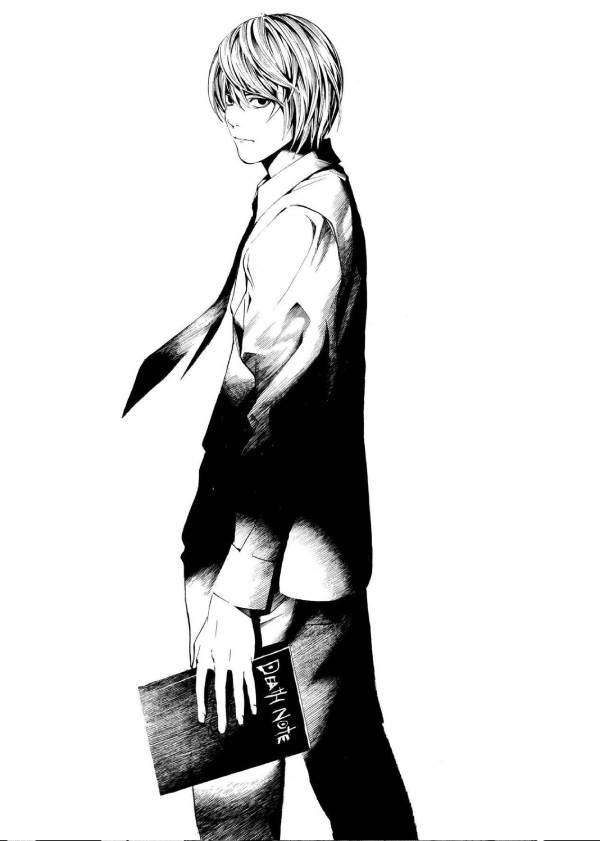
Few manga ever manage to grab readers with a premise as simple yet as instantly gripping as Death Note. When prodigy student Light Yagami stumbles upon a notebook that kills anyone whose name is written inside it, his life changes forever. What follows is one of the most intense and clever cat-and-mouse battles ever put to paper, as Light, under the alias Kira, tries to remake society while being hunted down by the enigmatic detective L.
The first half of Death Note is nothing short of a masterpiece. Tsugumi Ohba and Takeshi Obata construct a razor-sharp thriller full of logical traps, reversals, and audacious gambits. Light’s transformation from ambitious honor student to self-styled god, paired with L’s obsessive counter-pursuit, creates a dynamic that keeps you glued to every page. Both characters are brilliant, but also flawed, which makes their clash unpredictable and human despite its operatic scale.
Obata’s artwork deserves equal praise. His heavy shadows, dramatic angles and obsessive detail give the series a crisp, almost cinematic tension. Even dialogue-heavy chapters are visually compelling, and his gothic, almost biblical page spreads lend the story a mythic aura. It’s easy to see why so many panels from Death Note have become iconic.
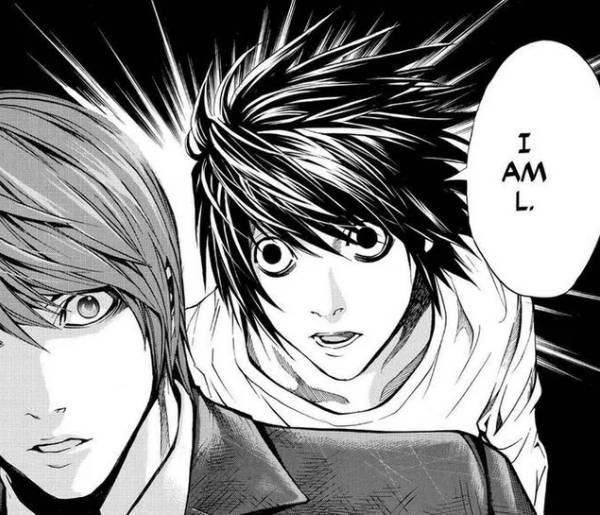
That said, the manga stumbles in its later stages. After its initial high-stakes duel, the story introduces new characters and shifts focus in a way many fans find weaker. While the tension never fully disappears, and there are still memorable twists, the pacing becomes uneven and the new antagonists lack charisma. By the end, Death Note feels more like it’s tying off plot threads than escalating them.
Despite these flaws, Death Note remains one of the greatest psychological thrillers in shonen manga. It’s stylish, endlessly quotable, and consistently surprising. Even its quirks, like Ryuk’s apple obsession, or the occasional melodramatic scenes, add to its distinctive tone. If you’ve ever wanted a battle shonen built entirely on intellect, manipulation, and moral ambiguity rather than fists or swords, this is it.
Genres: Mystery, Psychological Thriller, Supernatural
Status: Finished
17. Demon Slayer
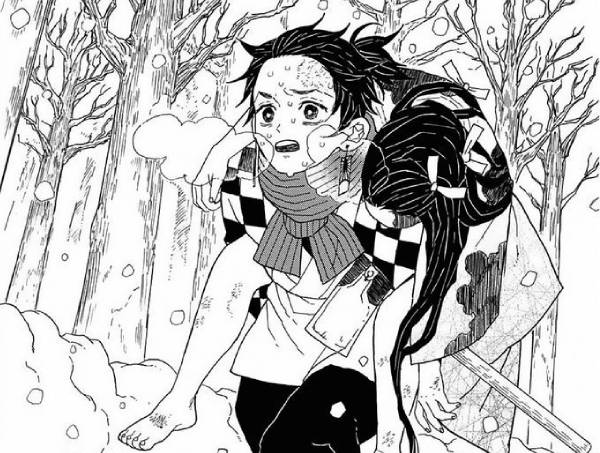
Few manga in history have exploded the way Demon Slayer: Kimetsu no Yaiba did. Koyoharu Gotouge’s debut went from a solid performing title to the hottest modern shonen phenomenon, outselling even One Piece by a large margin at its peak. And the appeal is obvious: Demon Slayer takes virtually every tried-and-true shonen element, be it tragedy, swordsmanship, colorful side characters, or villain hierarchy. It executes them with near-perfect clarity.
At its heart, the series is a classic revenge tale. Tanjiro Kamado’s family is slaughtered, his sister Nezuko becomes a demon, and he sets off on a journey to slay monsters and restore her humanity. This is as archetypal as it gets, yet Gotouge infuses it with earnestness and momentum. Tanjiro himself is the quintessential shonen protagonist: kind, determined, forged by hardship. His sincerity grounds the otherwise fantastical story.
The biggest strength of Demon Slayer lies in its emotional beats and its battles. Every demon carries a tragic backstory, and every elite slayer or Hashira has their own scars, lending fights a bittersweet weight rather than simple spectacle. The Breath Styles, flashy sword techniques, and escalating encounters give the manga its visual identity. You can almost feel water and flames bursting from each slash, even in black-and-white.
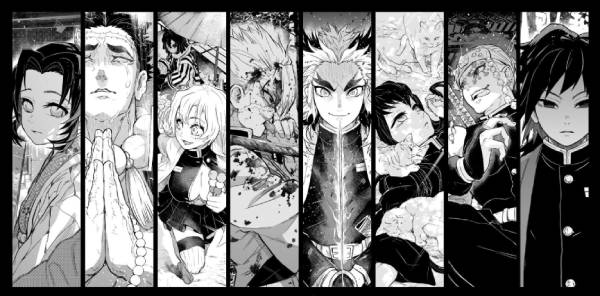
Where the series draws criticism is exactly where it finds its power: familiarity. Demon Slayer rarely strays from classic shonen tropes. We get training arcs, ranked villains, power-ups, tearful flashbacks, and a final boss showdown. Some readers find this predictable or overly tropy, especially compared to darker or more experimental contemporaries. Yet, this adherence to formula is also why it works so well. It’s a masterclass in doing the basics right, and delivering excitement without bogging down in filler or endless detours.
By the end, Demon Slayer concludes quickly and decisively, avoiding the bloated finales that plague many long-running series. It may not reinvent the genre, but it’s easily one of the most polished shonen manga ever produced.
Genres: Action, Fantasy, Dark Adventure
Status: Finished
16. Frieren
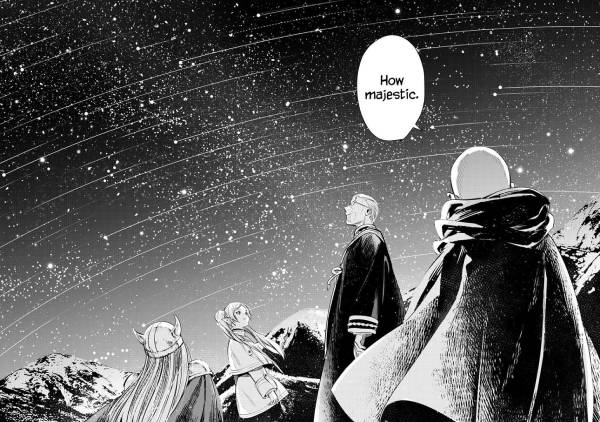
Most fantasy manga begin with a hero’s party setting out to slay an evil, all-powerful antagonist. Frieren: Beyond Journey’s End begins after the Demon King has already been defeated. This simple inversion gives Kanehito Yamada and Tsukasa Abe’s series its defining flavor: a reflective, melancholic journey about time, memory, and the bonds we fail to appreciate until they’re gone.
Frieren herself is an elf whose lifespan dwarfs those of her human comrades. When we meet her, she’s returning home with the famed hero Himmel, priest Heiter, and the warrior Eisen, only to watch them age and pass away one by one. This slow loss forces her to confront how little she truly knew about them. Much of the earlier story is built on this regret and on her travels with Fern, her young human apprentice, as they revisit places from the party’s legendary campaign. These chapters are among the strongest of any modern fantasy manga: quiet, bittersweet, and deeply human.
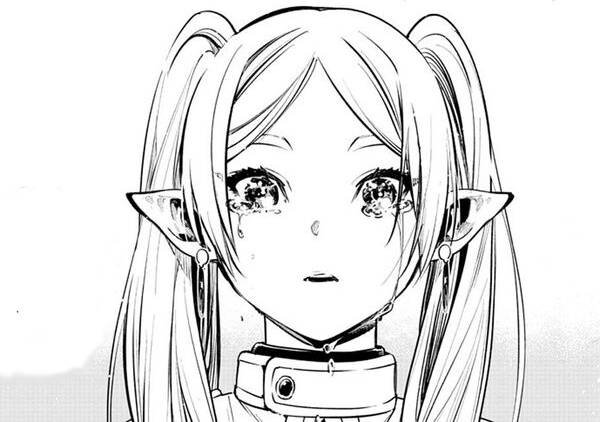
The artwork supports this tone beautifully. Tsukasa Abe’s clean lines and understated character design evoke warmth and nostalgia. Landscapes are drawn with a wistful simplicity that mirrors the story’s themes of fading memory. Some towns and backdrops can feel plain, but the emotional framing of characters more than compensates, especially in panels where Frieren recalls Himmel or reflects on the brevity of human life.
Where Frieren divides readers is in its shift toward shonen conventions. Later arcs introduce mage exams, tournaments, and more straightforward shonen action sequences. While these are still well drawn, they pull focus away from the introspective, slice-of-life quality that made the opening so powerful. The demon antagonists, too, are inconsistently developed, and often treated as pure monsters even as the manga hints at deeper worldbuilding.
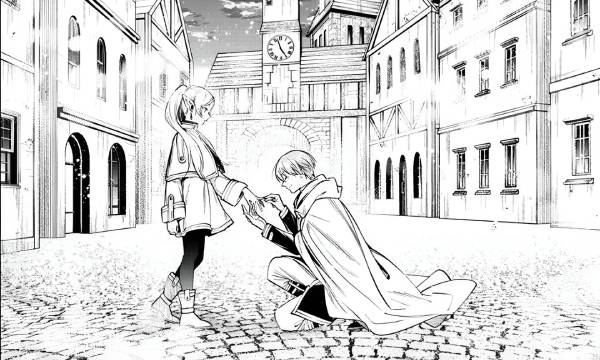
Yet even with these shortcomings, Frieren keeps a quiet power. It shines most when Frieren learns to express gratitude, Fern matures under her guidance, or during flashbacks of Himmel’s simple acts of kindness. It’s less about defeating enemies and more about learning how to live, to remember, and to treasure fleeting connections.
If you’re looking for a standard dungeon-crawl fantasy, this isn’t it. But if you want a slow, contemplative story about the afterglow of heroism and the ache of outliving your friends, Frieren: Beyond Journey’s End is one of the most unique manga of the last decade.
Genres: Fantasy, Adventure, Slice-of-Life
Status: Ongoing (Hiatus)
15. Yu Yu Hakusho
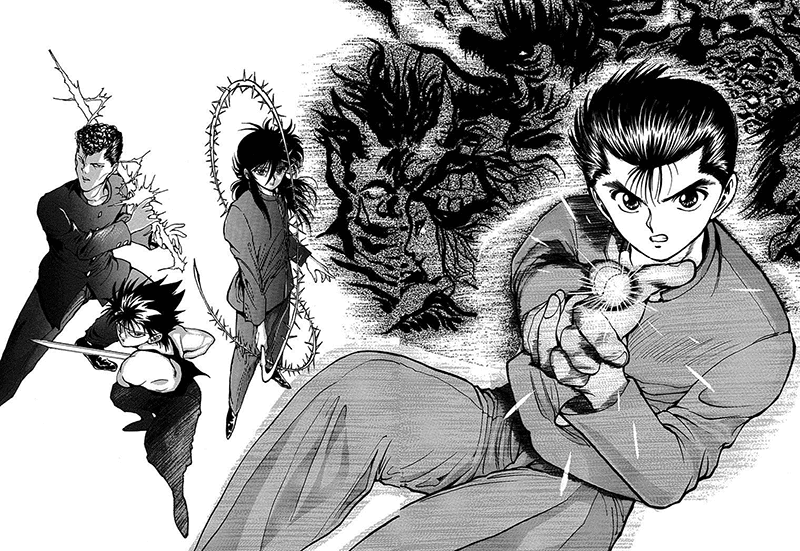
Before Hunter x Hunter turned Yoshihiro Togashi into a household name, he created Yu Yu Hakusho, a supernatural battle manga that defined early 90s shonen. Though it’s often overshadowed by his later work, I still consider it one of the best shonen manga of its era. It’s a bridge between the classic martial-arts-driven style of Dragon Ball and the darker, more complex themes Togashi would later perfect.
The series begins when fourteen-year-old delinquent Yusuke Urameshi dies unexpectedly while saving a child from a car accident. Because his selfless act surprises the afterlife bureaucracy, he’s given a chance at resurrection, but only if he agrees to become a Spirit Detective. From then on, it’s his job to investigate paranormal crime and to protect the human world from demonic incursions. What starts as a supernatural mystery-of-the-week series quickly escalates into high-stakes battles, tournaments, and political intrigue in the demon realm.
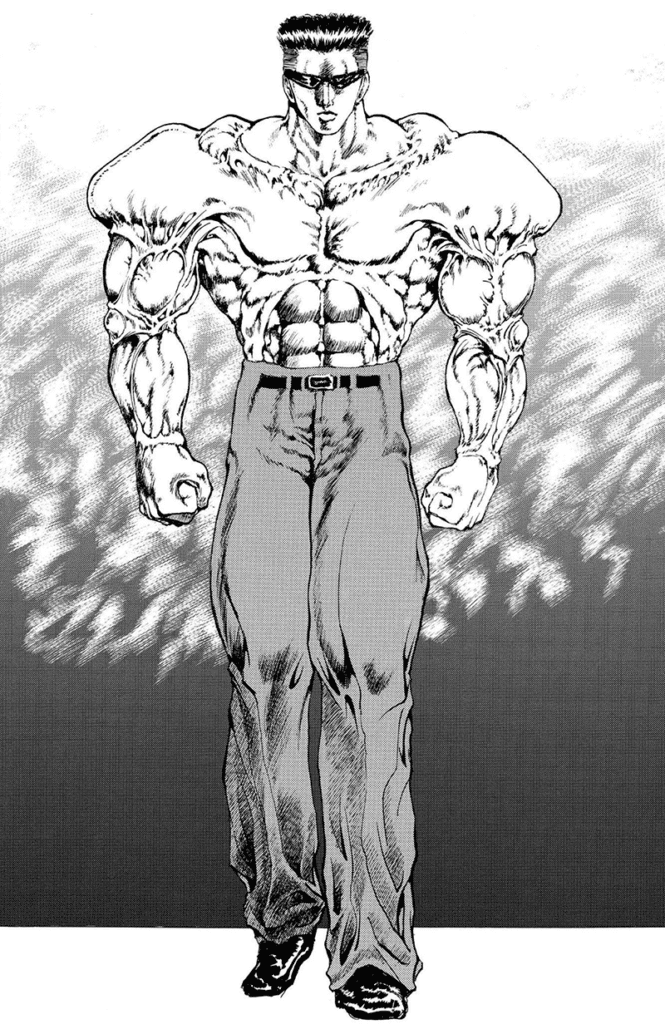
It’s clear Yu Yu Hakusho drew inspiration from Dragon Ball’s structure, but its tone and themes lean more occult than mythological. Demons, psychic powers, and an interdimensional underworld give it an edge over other shonen manga of its time. Early on, you can see Togashi experimenting with the worldbuilding instincts he’d later perfect in Hunter x Hunter.
The cast is another of the series’ strengths. Yusuke is a classic troublemaker protagonist with a cocky grin but a good heart. The demons Kurama and Hiei become instant fan favorites and still stand as some of Togashi’s best character designs. Even overshadowed characters like Kuwabara add warmth and comic relief to the group dynamic.
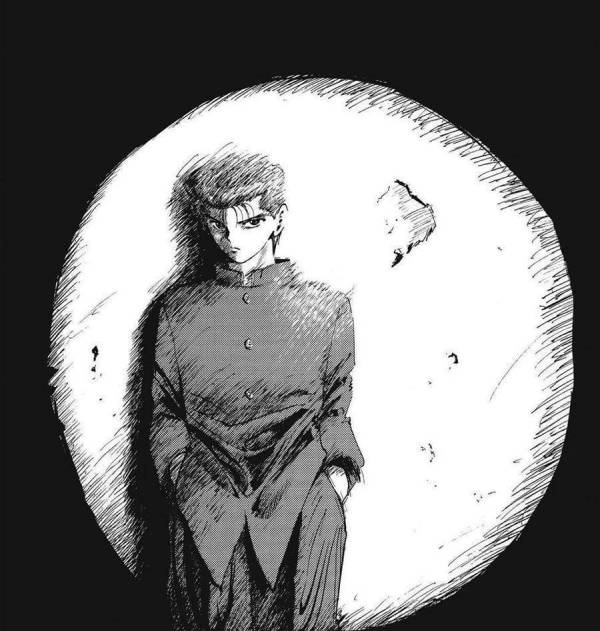
The Dark Tournament arc is Yu Yu Hakusho’s clear high point. It’s one of the best tournament arcs in shonen history, introducing memorable villains and raising the stakes for every fight. Toguro in particular stands out as an antagonist. He’s tragic, intimidating, and deeply layered, embodying the mix of spectacle and moral complexity that makes the series endure.
If Yu Yu Hakusho has weaknesses, they’re mostly tied to its age. The art starts off rough and stays relatively average by today’s standards, and the pacing can be uneven, especially early on. Yet these flaws fade once the story finds its rhythm.
For readers willing to look past its dated visuals, Yu Yu Hakusho remains a landmark supernatural shonen manga. With its blend of occult themes, intense battles, and surprisingly nuanced characters, it still earns its place as one of the greats of the 90s.
Genres: Supernatural, Action
Status: Finished
14. Dragon Ball
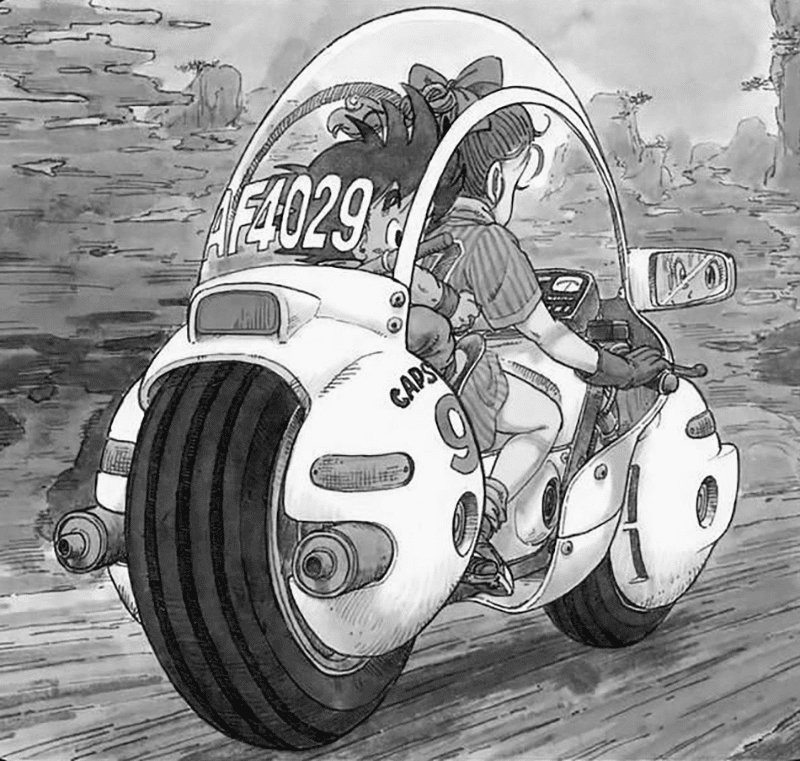
Akira Toriyama’s Dragon Ball is arguably the most influential shonen manga ever published. First serialized in 1984, it helped define the battle-shonen blueprint still followed today. Nearly every reader, myself included, first encountered it through its anime. Returning to the manga, however, offers a reminder of how groundbreaking it was in its own time, and how mixed its legacy can feel today.
Dragon Ball follows Son Goku from his childhood through adulthood as he searches for the seven Dragon Balls, capable of summoning the wish-granting dragon Shenron. Along the way, he meets allies like Bulma, Krillin, and Master Roshi, fights increasingly powerful adversaries, and slowly evolves from an innocent martial artist into the universe’s ultimate defender. At first glance, it’s a classic coming-of-age adventure story. But its influence on shonen manga, from tournament arcs to training sequences to rival characters becoming allies, is impossible to overstate.
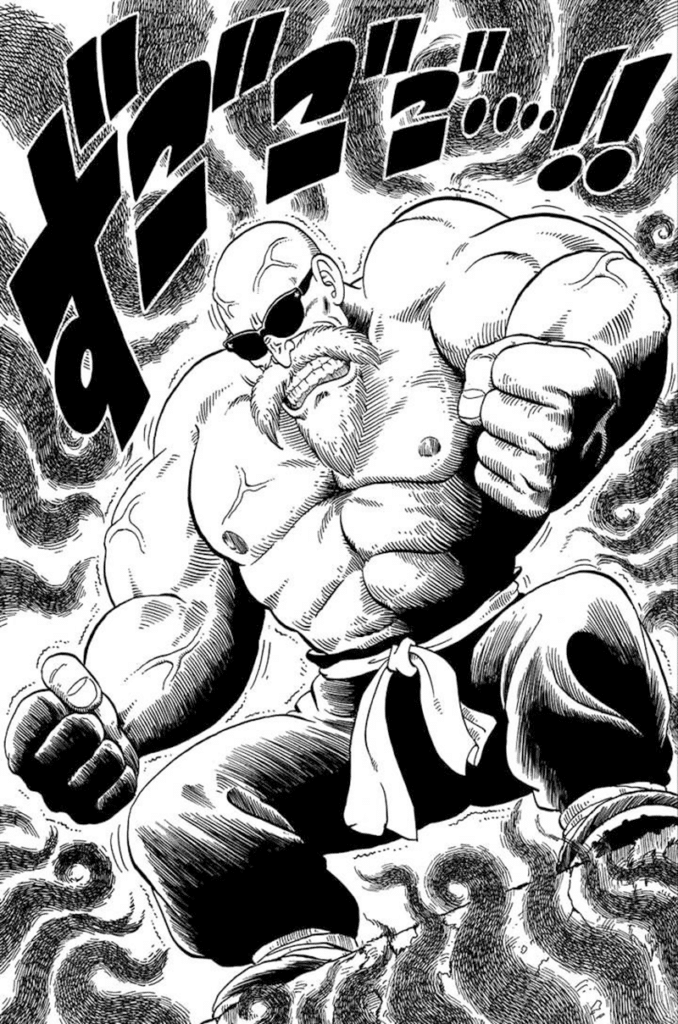
The early Dragon Ball chapters may surprise readers raised on Dragon Ball Z. Before the iconic energy blasts and planet-destroying battles, Dragon Ball was a gag-heavy adventure series. Young Goku and Bulma’s road trip for the Dragon Balls had as much slapstick humor as martial arts, with Toriyama’s comedic instincts in full force. Only gradually did the series shift toward more serious battles, starting with the Tenkaichi Budokai or World Martial Arts Tournament, which remains one of the purest and best examples of tournament storytelling in manga.
As the scope widened, though, Dragon Ball lost some of its original charm. The fights became more about spectacle than techniques, moving from fast, fluid martial arts choreography to world-shattering energy attacks. The Dragon Balls themselves, once a mysterious MacGuffin, turned death into nothing but a temporary condition, dramatically undercutting the stakes. And while the series introduced dozens of memorable characters, many like Tenshinhan or Krillin were gradually sidelined as Goku, Vegeta and other Saiyan characters dominated the action.
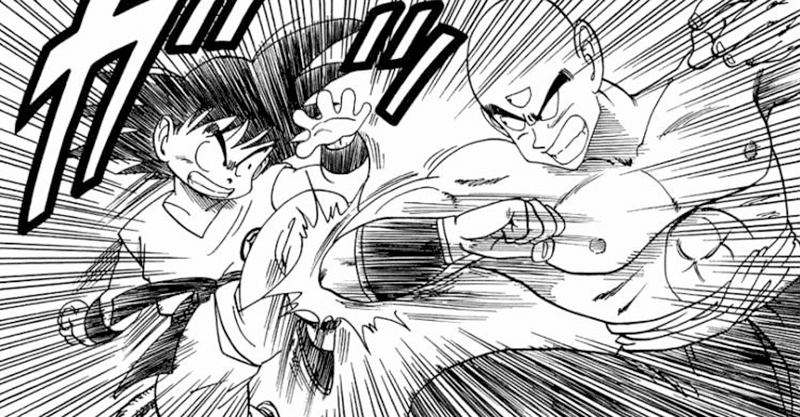
Still, Toriyama’s art is timeless. His clean lines, inventive character designs, and playful environments give Dragon Ball its enduring visual identity. Battles are always clear and dynamic, even at their most chaotic, and the world itself feels like a mix of science-fiction, fantasy, and martial-arts pulp.
Even the series’ flaws are part of its fascination. The Buu Saga, for instance, is perhaps the strangest and most divisive arc in the entire manga. It’s a mixture of high-concept weirdness and slapstick chaos. Some readers love it, others hate it, but it perfectly illustrates how Dragon Ball was never afraid to veer from tone to tone.
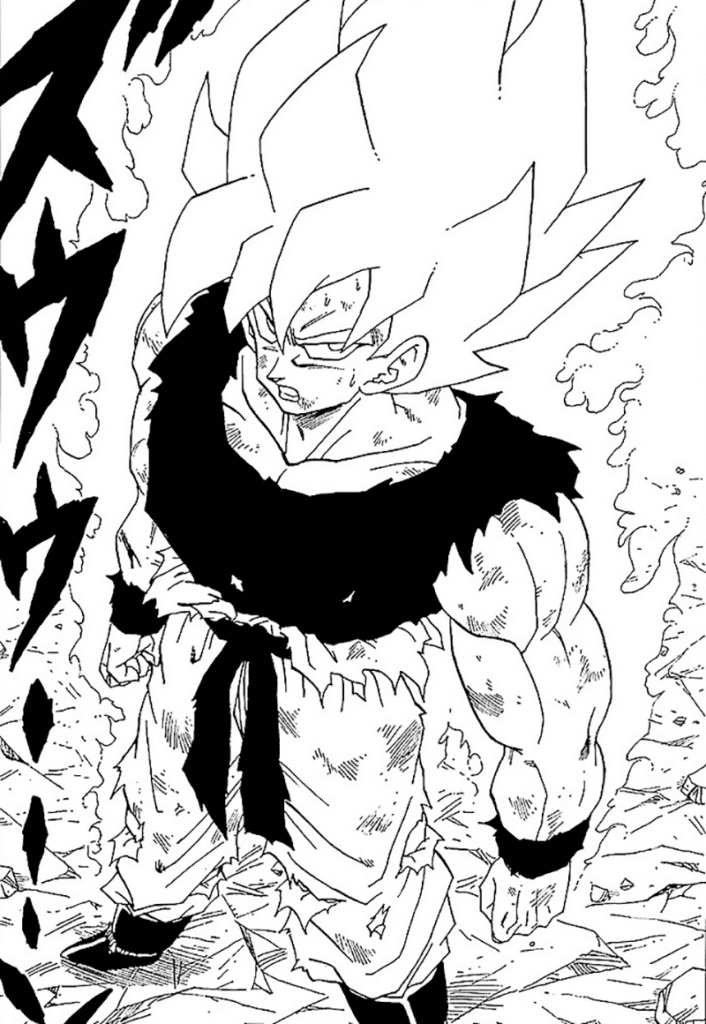
Looking back, Dragon Ball may no longer feel fresh in the way it once did, because its tropes have been imitated and surpassed by countless successors. Still, it remains a foundational work of the shonen manga genre, and a reminder of where so much modern storytelling began. For readers curious about its roots, or simply looking for a fun martial arts adventure, Dragon Ball is a must-read.
Genres: Action, Adventure, Martial Arts
Status: Finished
13. A Silent Voice
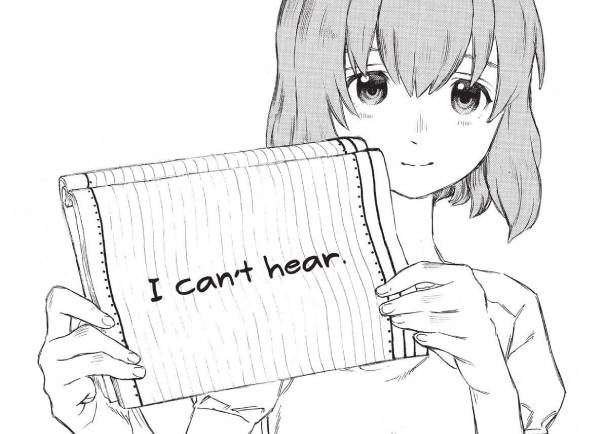
Few manga tackle adolescence, guilt, and redemption with the raw honesty of A Silent Voice. Yoshitoki Ōima’s debut series begins not with a sympathetic hero but with a boy we actively dislike: Shouya Ishida, a restless elementary schooler whose boredom turns into cruelty when a deaf girl, Shouko Nishimiya, transfers into his class. At first, his teasing seems like immature pranks, but it escalates into relentless bullying. He rips out her hearing aids, mocks her speech, all while teachers and classmates look the other way. When Shouko finally transfers, the rest of the class scapegoat Shouya, and the tormentor becomes the tormented.
Years later, in high school, Shouya has withdrawn into self-loathing. Haunted by his past, he resolves to find Shouko and make amends. This is where A Silent Voice shifts from being about bullying to being about the long, messy process of atonement. Watching Shouya attempt to reconnect with Shouko gives the series its heart. He isn’t instantly redeemed; he’s insecure, ashamed, and terrified of rejection. But the gradual steps he takes, and Shouko’s own ambivalence about forgiving him, feel authentic and earned.
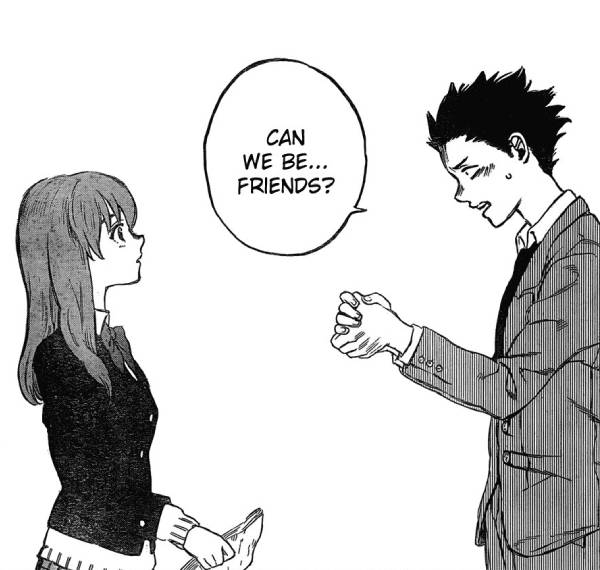
Ōima’s character work is stellar. While the story revolves around Shouya and Shouko, the supporting cast, comprising childhood classmates like Ueno, Sahara, and Kawai, as well as new friends like Nagatsuka and Mashiba, adds layers of conflict and perspective. They’re not archetypes but flawed, believable people who show how a single act of cruelty can ripple through many lives.
Visually, A Silent Voice is understated but powerful. Ōima’s clean, detailed art conveys subtle facial expressions and body language, especially crucial given Shouko’s deafness. Panels linger on small gestures, letting silence itself become part of the storytelling. The restrained use of screen tone and the distinct character designs keep even crowded scenes readable and emotionally resonant.
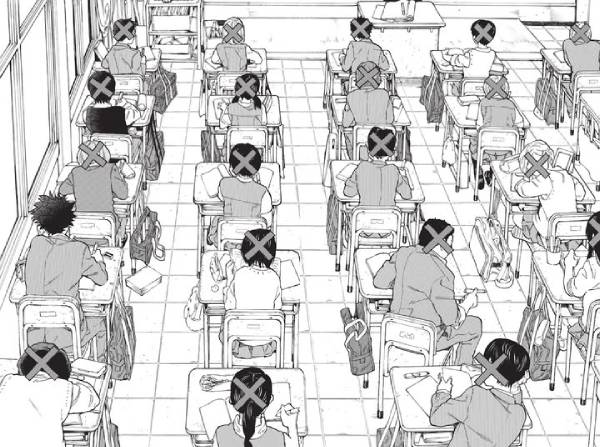
Some readers find the ending abrupt or wish certain characters received more closure, but the journey there is one of the most affecting coming-of-age stories in modern shonen manga. Rather than offering an easy way out, A Silent Voice lingers on the difficulty of self-forgiveness and the slow, tentative rebuilding of trust. It’s a reminder that redemption, when it comes, is quiet and hard-won.
If you’re looking for a manga about empathy, consequences, and the fragile hope of redemption, A Silent Voice is a must-read.
Genres: Drama, Romance, Slice-of-Life, Psychological
Status: Finished
12. Claymore
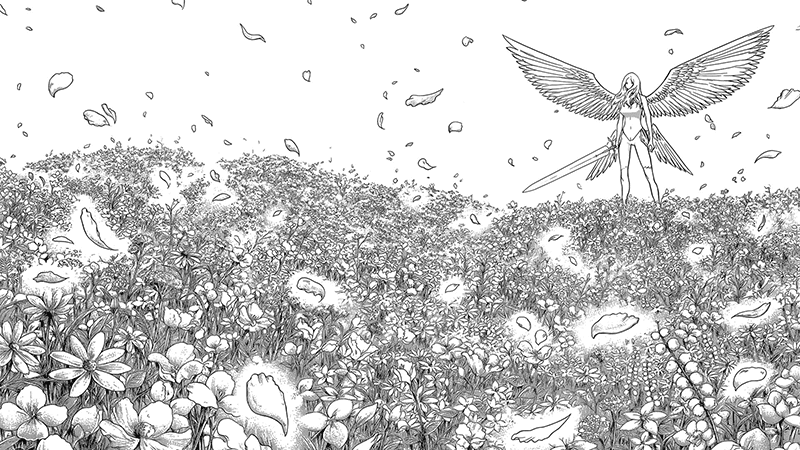
Norihiro Yagi’s Claymore remains one of the standout dark fantasy shonen manga of the 2000s. Mixing medieval horror, monstrous transformations, and tragic heroines, it’s a series that carved out a unique niche in a genre dominated by battle tournaments and high-energy rivalries. Even years after finishing it, I still think of its eerie landscapes and unforgettable creature design.
The story takes place in a bleak medieval world terrorized by Yoma, shape-shifting monsters with an insatiable appetite for human flesh. To combat them, a shadowy organization creates Claymores: half-human, half-Yoma warriors who wield immense strength at the cost of their own humanity. Our protagonist, Claire, is one of these warriors. Initially introduced as stoic and reserved, her tragic past and connection to the legendary Teresa gradually come to light, as does the looming presence of the terrifying Priscilla, a former Claymore whose power seems unstoppable.
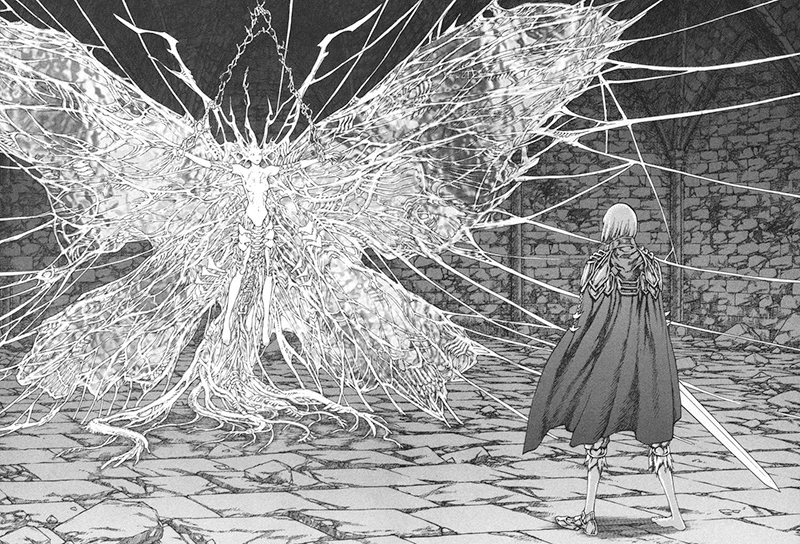
Like many shonen manga, Claymore starts off episodically, with monster-hunting missions forming self-contained arcs. Over time, however, it grows into a sprawling saga about revenge, identity, and rebellion against the Organization itself. The early chapters set the tone perfectly; later arcs escalate to large-scale battles and political intrigue.
If Claymore’s story can feel uneven at times, its world and art more than make up for it. Yagi renders windswept plains, ruined fortresses, and medieval cities with meticulous detail. The monster designs rank among the most creative I’ve seen: grotesque, fluid, and imaginative, evoking both terror and awe. Few shonen dark fantasies commit so fully to making their monsters feel truly alien.
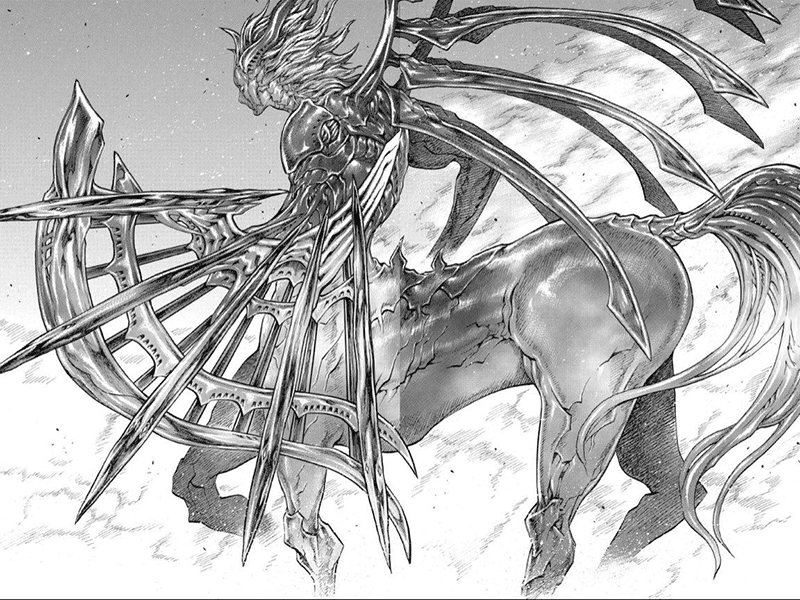
That said, Claymore has its shortcomings. While the fight choreography can be exhilarating, battles sometimes become hard to follow, with settings that feel under-used compared to the richly detailed world around them. Priscilla, set up early as the ultimate villain, spends much of the series as an ominous off-screen presence. And the ending, which reveals the origin of both the Yoma and the Organization, can come across as a deus ex machina exposition dump that feels out of place after so much build-up.
Even so, Claymore is one of the best dark fantasy shonen manga I’ve encountered. Its combination of gothic atmosphere, tragic characters, and breathtaking monster design make it memorable long after the last chapter. For readers who loved the gritty tone of Berserk but want a more shonen-leaning take, Claymore is a must-read.
Genres: Dark Fantasy, Action, Supernatural
Status: Finished
11. Fist of the North Star
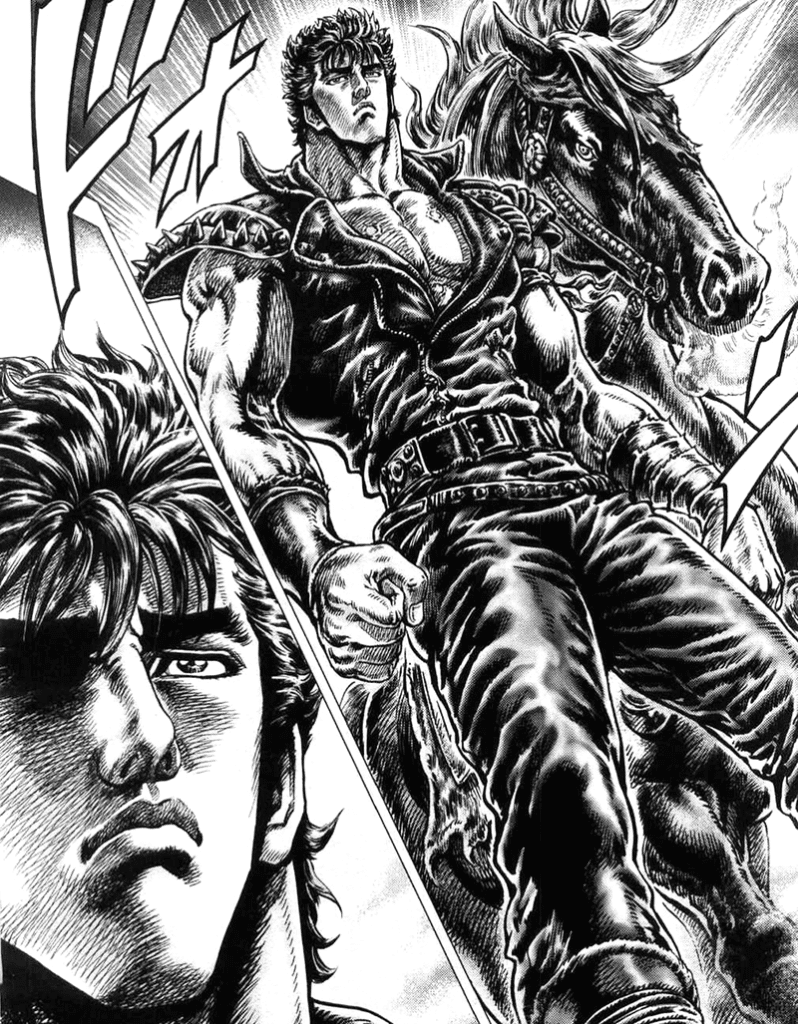
Few manga embody raw, testosterone-fueled spectacle quite like Fist of the North Star. Created by Buronson and Tetsuo Hara in the early 1980s, it’s one of the foundational battle shonen series. Set in a post-apocalyptic world, it’s a martial arts epic brimming with grit, gore, and manly tears. If you’ve ever wanted to see a lone savior stride through a wasteland and explode villains with a single touch, this is your manga.
Set after a nuclear war has reduced civilization to rubble, Fist of the North Star depicts a brutal world where only the strong survive. Food and water are scarce, gangs rule the roads, and the weak are prey. Into this desolation walks Kenshirou, heir to the deadly martial art Hokuto Shinken. With pinpoint strikes, he obliterates enemies from the inside out, reducing even the most monstrous thugs to pulp in seconds. His mission: to rescue the innocent and bring justice to the lawless wasteland.
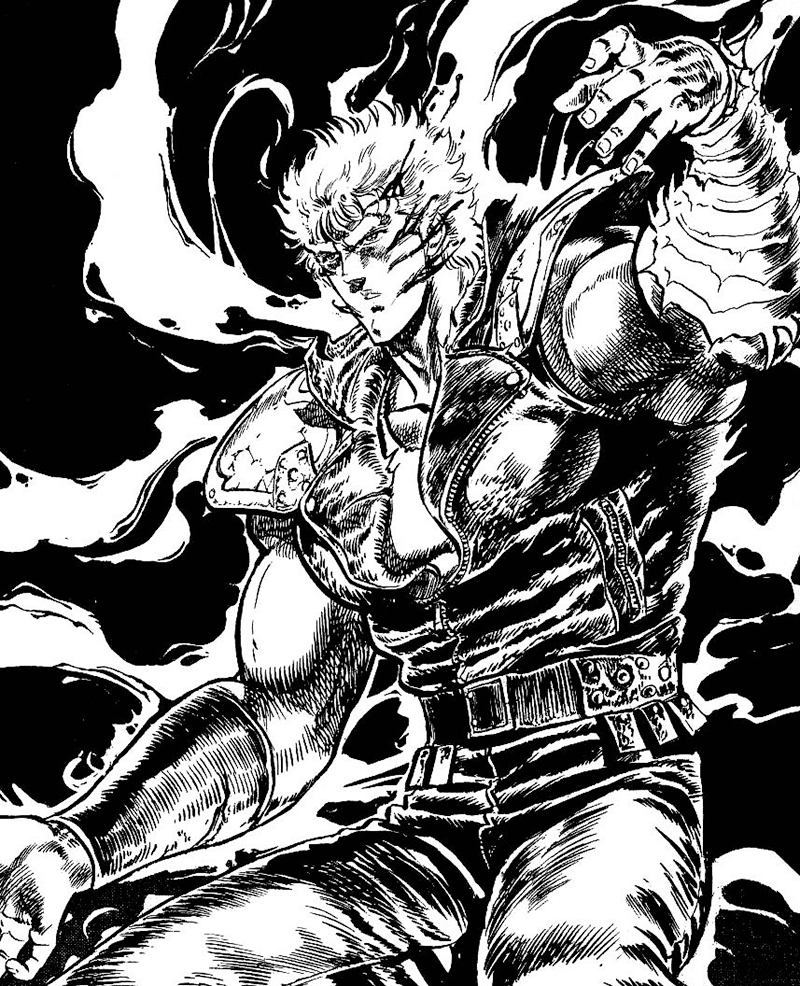
Alongside Dragon Ball, Fist of the North Star helped define the shonen genre. Its DNA can be found in countless other works, from JoJo’s Bizarre Adventure to modern action series. Yet it’s also darker, bloodier, and more operatic than most of its contemporaries. Even now, few shonen series go this hard on hyper-violent martial arts.
What makes Fist of the North Star so iconic is its combination of mythic scale and pulp grit. Kenshirou is less of a conventional protagonist than a wandering archetype: stoic, near-invincible, and defined by how others react to him. He’s surrounded by a plethora of musclebound tyrants, tragic warriors, and memorable allies. Antagonists like Raoh, and side characters like Rei and Mamiya, give the story texture and emotional stakes beyond simple brawls.
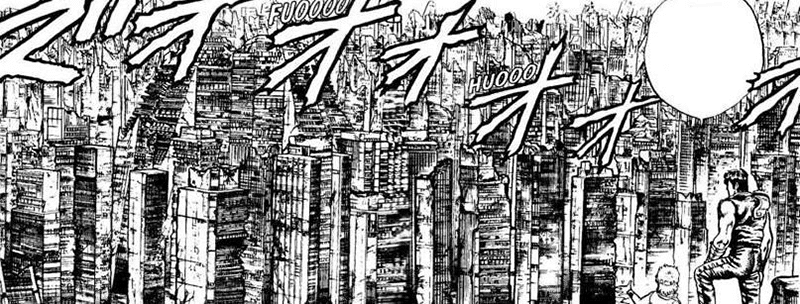
Visually, Tetsuo Hara’s art is a perfect match for this world. Early volumes look very much of the era, featuring blocky men and heavy inks. In time, however, the style matures into something much more striking. The post-apocalyptic cities, endless deserts, and brutal hand-to-hand combat are rendered with an intensity that’s still impressive even today. Battles aren’t just about who wins, they are about spectacle, with bodies erupting, faces contorting, and Kenshirou’s signature pressure-point strikes punctuated by the immortal “You’re already dead.”
Yet the series is also episodic and uneven. Like many long-running 80s manga, Fist of the North Star sometimes feels more like a string of connected arcs than a single cohesive narrative. Later chapters inflate the stakes to mythic extremes, and many secondary characters often drift into one-dimensionality. But when it works, it’s glorious: pure pulp heroism with just enough tragic undertone to give it weight.
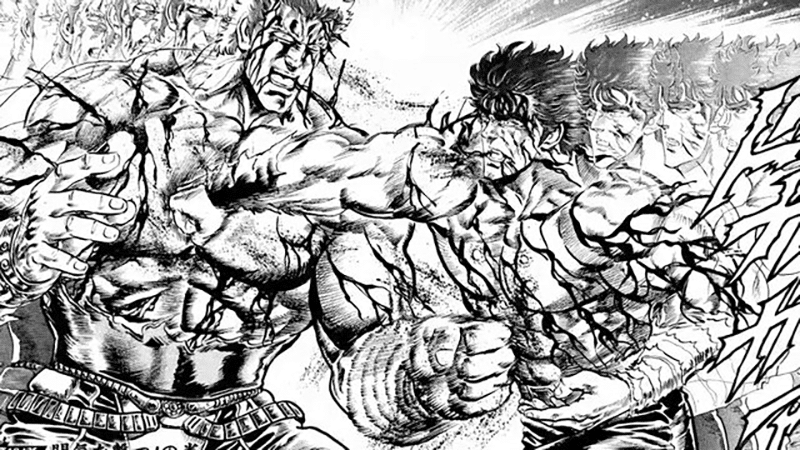
Ultimately, Fist of the North Star is a time capsule of everything great and over-the-top about classic shonen manga. It’s manly men doing manly things in a nuclear wasteland: fighting evil, protecting the weak, and shedding manly tears along the way. If you want to see one of the genre’s most influential action epics in its rawest form, this is a must-read.
Genres: Action, Martial Arts, Post-Apocalyptic
Status: Finished
10. Attack on Titan
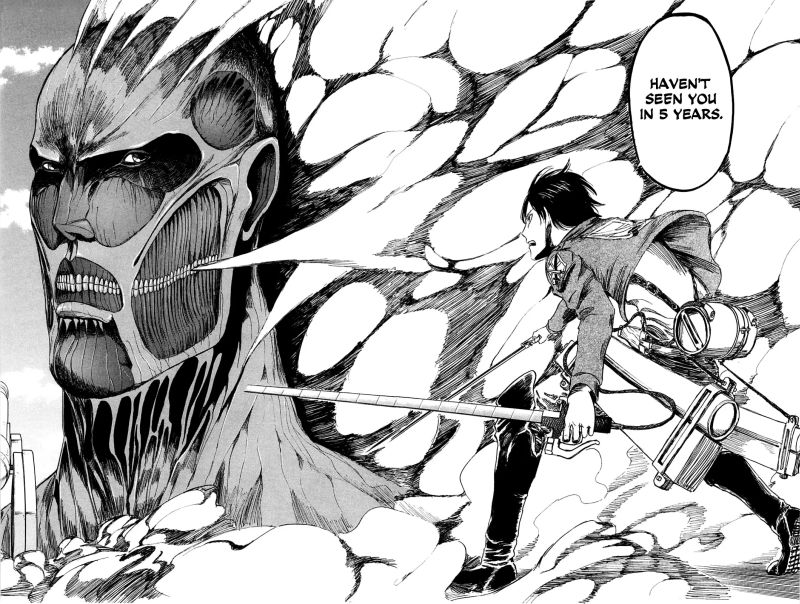
Ranking Attack on Titan is tough, but one has to remember that Hajime Isayama’s work shook up the shonen landscape like few other. Initially debuting as a niche dark fantasy, it exploded into a worldwide phenomenon, blending apocalyptic survival horror, military action, and long-brewing mystery into one of the most ambitious shonen manga ever serialized.
Set in a walled city that’s humanity’s last bastion, the story follows a society under constant siege by towering humanoid titans. Generations have grown up believing the walls will protect them, only to watch the outer defenses fall in a devastating attack. Among the survivors is Eren Yeager, a headstrong boy whose life is upended when he gains the terrifying power to transform into a titan himself. Together with his childhood friends Mikasa and Armin, Eren joins the Survey Corps, venturing outside the walls to fight humanity’s monstrous predators and uncover the truth behind their existence.
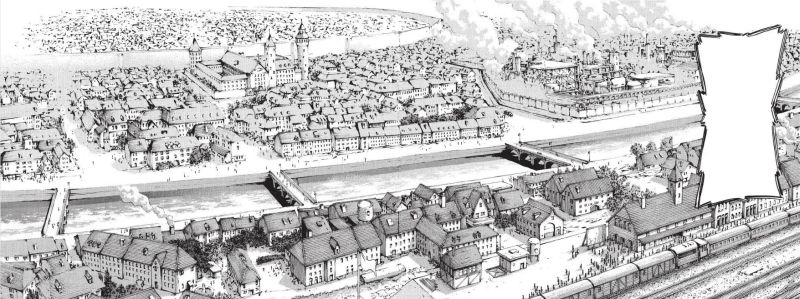
I’ve always loved confined, high-stakes settings, and Attack on Titan’s premise hooked me immediately. The idea of an entire civilization trapped behind walls, clinging to survival, is as tense as it is exciting. But what really makes the series stand out is how it evolves. What begins as a straightforward story of revenge against mindless giants gradually turns into a sprawling political thriller, exploring themes of freedom, propaganda, and cycles of violence. Each revelation about the titans peels back another layer of the world and challenges everything the characters thought they knew about their own history.
Artistically, Attack on Titan is divisive. Isayama’s early chapters are rough, but his growth as a mangaka is dramatic. By the time the story hits its stride around volume 6, the art becomes sharp, dynamic, and increasingly cinematic. The sense of scale is staggering. Sweeping panoramas of cities, forests, and battlefields contrast with the close-up terror of titan encounters. And the maneuvering gear sequences remain some of the most distinctive action set-pieces in shonen manga. They are chaotic yet readable, fast-paced, and meticulously staged.
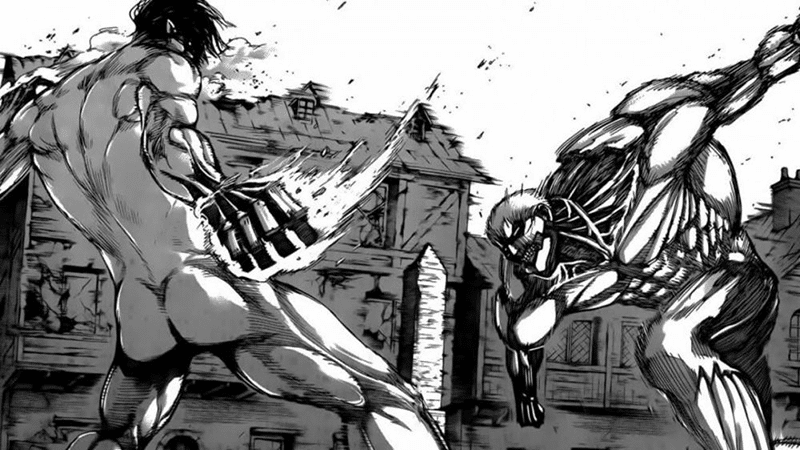
I’ve always found the titans themselves deeply unsettling. They’re not snarling beasts but blank, smiling parodies of human beings, and their uncanny appearance only heightens the horror. That visual design, paired with sudden bursts of extreme violence, creates an atmosphere few other mainstream shonen manga dare to attempt.
That said, Attack on Titan isn’t flawless. Its second half shifts from survival horror toward grand-scale political intrigue and moral ambiguity, and while ambitious, that change sacrifices some of the mystery and claustrophobia that defined the earlier chapters. Some readers found the tonal shift jarring. For me, as the world of Attack on Titan grew larger, the story itself felt smaller and less interesting.
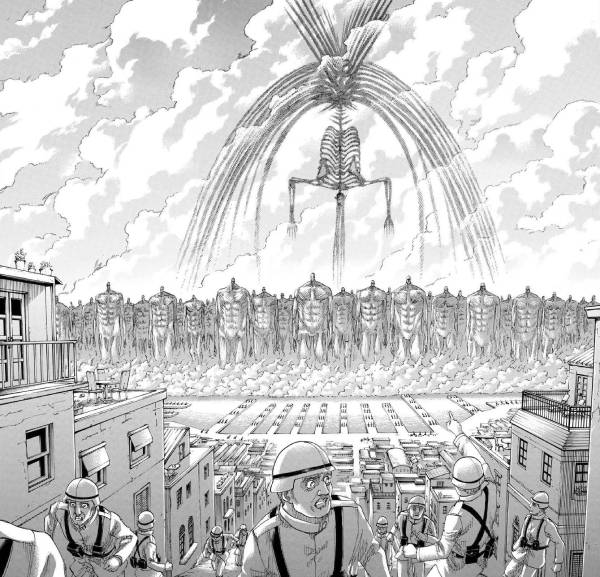
Then there’s the ending, which proved to be one of the most divisive in manga history. While some praise its ambition and tragic scope, others felt it undermined years of character development and left the story feeling inconsistent. Whether you love or hate it, the final arc cements Attack on Titan as one of the boldest, most talked-about shonen manga ever published.
Overall, Attack on Titan stands as one of the most memorable shonen manga of the last two decades. It’s dark, ambitious, and unafraid of upsetting expectations. If you’re looking for a long, complex series with intense action and a richly built world, you should definitely check it out.
Genres: Dark Fantasy, Action, Mystery, Post-Apocalyptic
Status: Finished
9. Fullmetal Alchemist
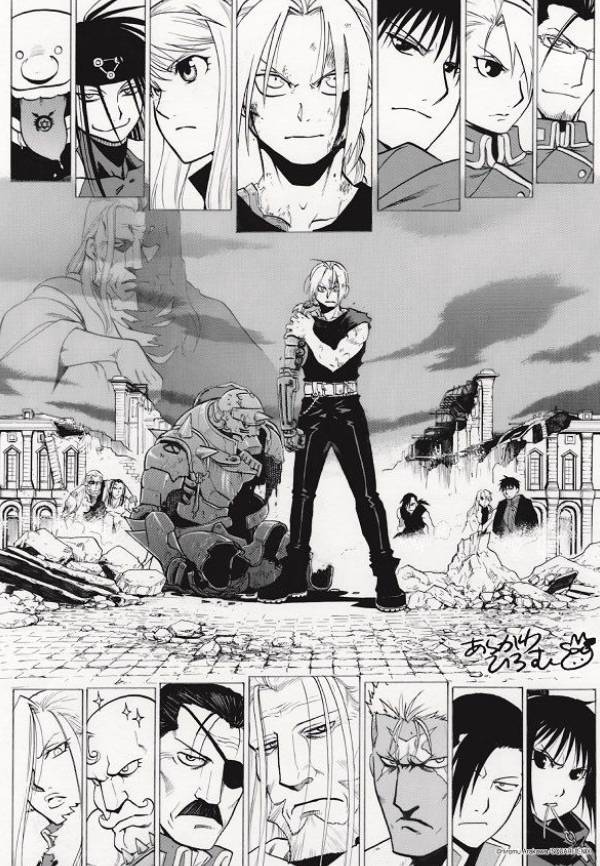
Hiromu Arakawa’s Fullmetal Alchemist is one of the defining battle shonen of the 2000s. It’s a sprawling, tightly plotted adventure that mixes imaginative worldbuilding, moral complexity, and high-stakes action. On its surface, it’s a classic story: brothers Edward and Alphonse Elric, punished for dabbling in forbidden alchemy, travel the country seeking the Philosopher’s Stone to restore their bodies. But the deeper you go, the more Fullmetal Alchemist stands out, weaving political intrigue, war crimes, and questions of human value into its alchemic mystery.
The industrial nation of Amestris feels uniquely grounded. Trains, military bureaucracy, and an extensive history of colonization provide a backdrop that’s unusual for shonen manga, and that history, particularly the Ishvalan War, casts a long shadow over the present. Arakawa’s decision to treat war, genocide, and military corruption seriously makes the manga feel much weightier than its early adventure-of-the-week chapters might suggest. Scar, the Ishvalan avenger, exemplifies this tonal shift. He may be an antagonist, but his fury is understandable, even if his methods are horrific.
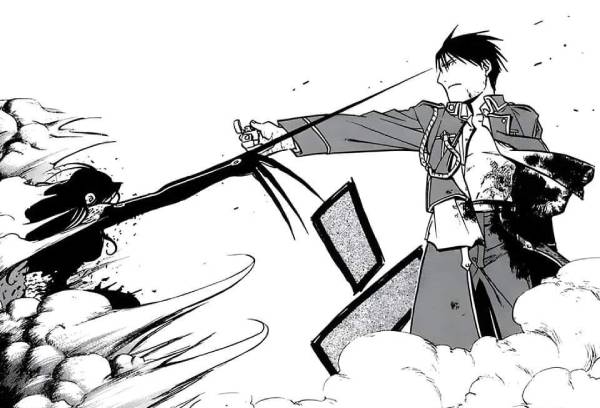
The villains themselves are standouts. The Homunculi, each named after one of the seven deadly sins, are not merely themed bosses but reflections of humanity’s excesses. Father, their creator, operates as both an all-powerful puppet master and a critique of unchecked ambition. Even the most monstrous characters are given enough depth to be memorable, and the Elrics’ final confrontations with them resonate because of the groundwork laid.
Edward and Alphonse remain the story’s emotional core. They’re not invincible heroes but traumatized teenagers who must live with the consequences of their choices. Their bond drives the plot forward and grounds even its wildest twists. Around them orbit some of shonen’s most beloved supporting characters like Roy Mustang, Riza Hawkeye, Winry Rockbell, but also some of its most despicable, like the infamous Shou Tucker. Each is given space to grow, fail, or reveal hidden depths, creating an ensemble rare for the genre.
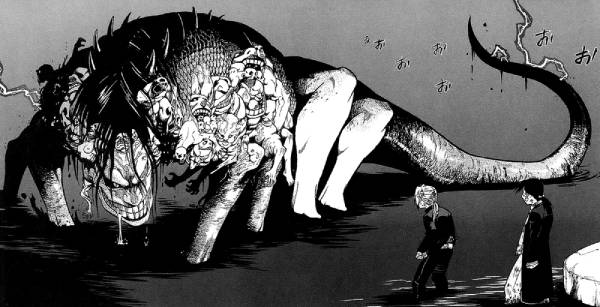
Visually, Arakawa’s art balances crisp action and expressive character work. The bigger battles, particularly those later in the series, are staged with clarity and impact. Readers coming from Brotherhood will notice how closely the anime mirrored the manga’s layout, a testament to how cinematic the pages already are.
Not everything lands perfectly. Some readers find the humor uneven or the pacing in later arcs compressed, and comparisons with the darker tone of the first anime adaptation are inevitable. Taken on its own, Fullmetal Alchemist is a near-textbook example of how to do long-form shonen right: a complete story with a real beginning, middle, and end, meaningful stakes, and characters you genuinely care about.
Whether you’re coming for the mystery, the moral dilemmas, or the sheer spectacle of alchemic combat, Fullmetal Alchemist remains one of the most satisfying and most intimate journeys in shonen manga. It’s not just a fan favorite; it’s a blueprint for the modern battle shonen.
Genres: Action, Adventure, Fantasy, Mystery
Status: Finished
8. Chainsaw Man
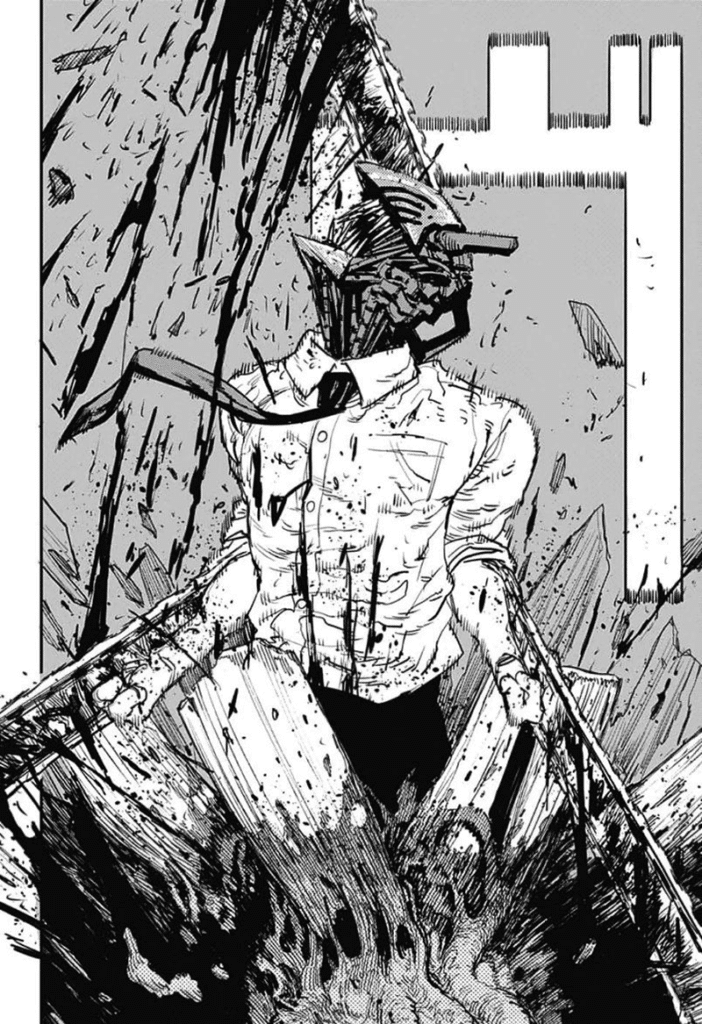
Chainsaw Man by Tatsuki Fujimoto is one of the strangest and most exhilarating shonen manga in recent memory. Coming from the creator of Fire Punch, you already know you’re in for chaos, violence, and a story that gleefully tears apart shonen conventions.
The premise sounds absurd on paper: Denji, a down-and-out young man saddled with crushing debt, merges with his pet devil Pochita and gains the power to transform into a chainsaw-headed devil hunter. At first, he works for the yakuza to scrape by, but after a brutal betrayal, he’s recruited into the Public Safety Bureau, a government agency specializing in devil extermination.
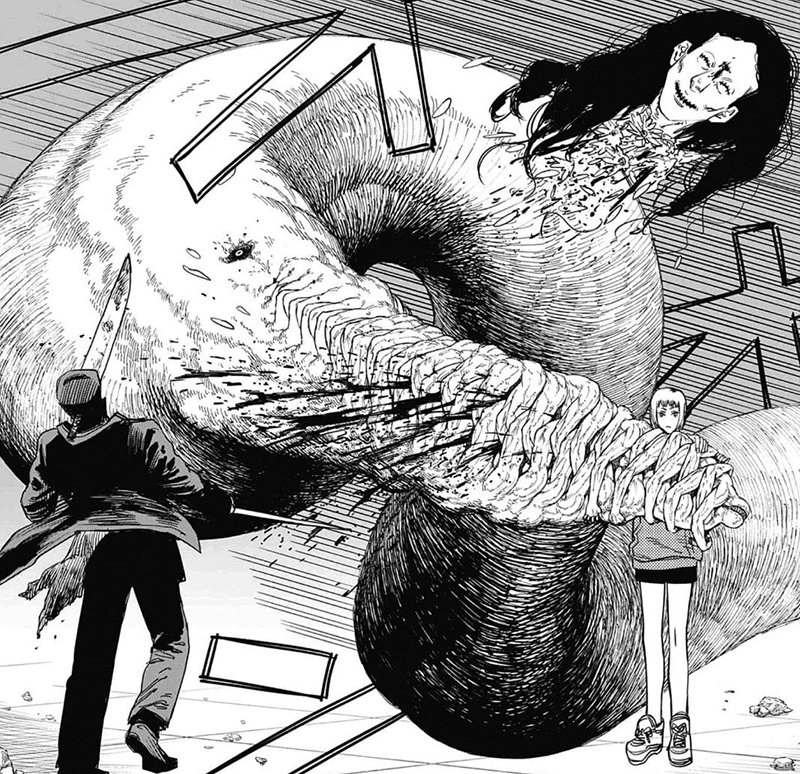
That set-up could easily have been played for parody alone, but Fujimoto uses it as a springboard for something much darker and more complex. On the surface, Chainsaw Man is about hunting grotesque, nightmarish devils, each designed with startling creativity. Underneath, it’s a story about trauma, exploitation, loneliness, and the desperate search for something resembling love or stability.
Denji himself may appear simpleminded at first. His dreams are embarrassingly basic, but as the manga progresses, his character arc deepens. He’s still crude and reckless, but he also grapples with what it means to live as more than just a tool for others. Surrounding him is one of the most memorable casts in modern shonen: Power, the unhinged and lovable fiend; Aki, whose tragic arc grounds the story in real emotion; and, of course, Makima, a magnetic, enigmatic leader whose true goal remains the series’ most chilling mystery.
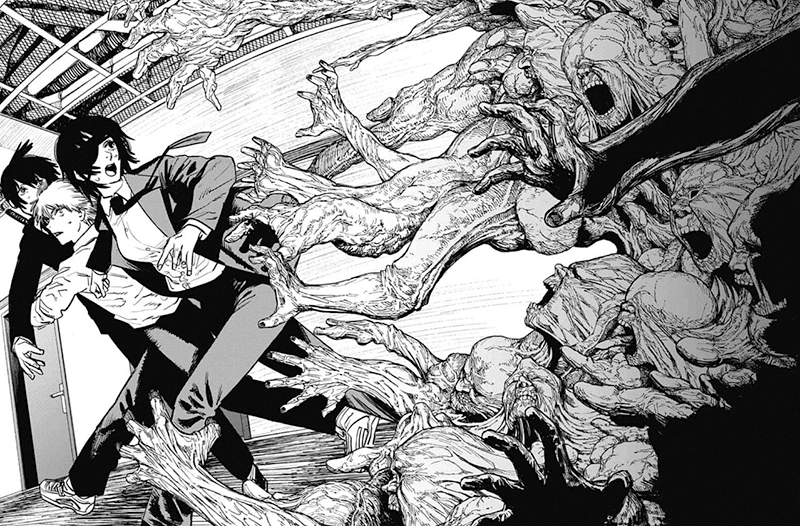
The art plays a huge part in Chainsaw Man’s impact. Fujimoto’s scratchy, raw linework may seem unrefined at first glance, but it perfectly captures the chaos of the world. Fights are pure carnage featuring blood, viscera, and surreal powers. It’s stylish, grotesque, and unforgettable.
And then there’s the tone. Chainsaw Man shifts wildly from bleak nihilism to absurd comedy, from touching slice-of-life moments to absolute nightmare fuel. This instability isn’t a flaw; it’s the series’ identity. Few manga can make you laugh at a crude gag on one page, then hit you with gut-wrenching despair the next.
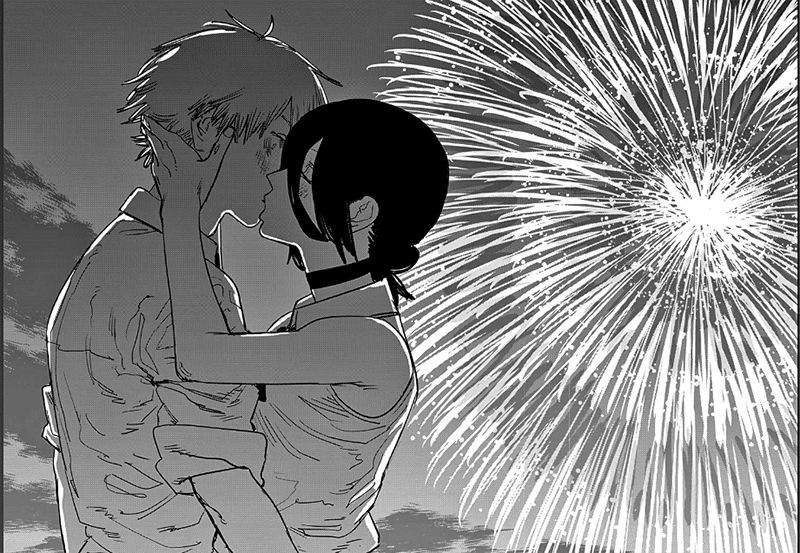
The manga is now well into its second part, and if anything, Fujimoto has doubled down. The story has grown even more surreal, grotesquely funny, and unpredictable. Part 2 expands the scope while continuing to push the series into uncharted territory, proving that Chainsaw Man isn’t just a one-off phenomenon but a defining work of modern shonen manga.
At its core, Chainsaw Man is pure, beautiful madness. It’s brutal, emotional, absurd, and endlessly creative. It’s a manga that burns itself into your memory. Not everyone will love it, but if you’re looking for an unhinged shonen series that breaks more rules than it follows, Chainsaw Man is a must-read.
Genres: Horror, Supernatural, Action, Comedy
Status: Ongoing
7. Hunter x Hunter
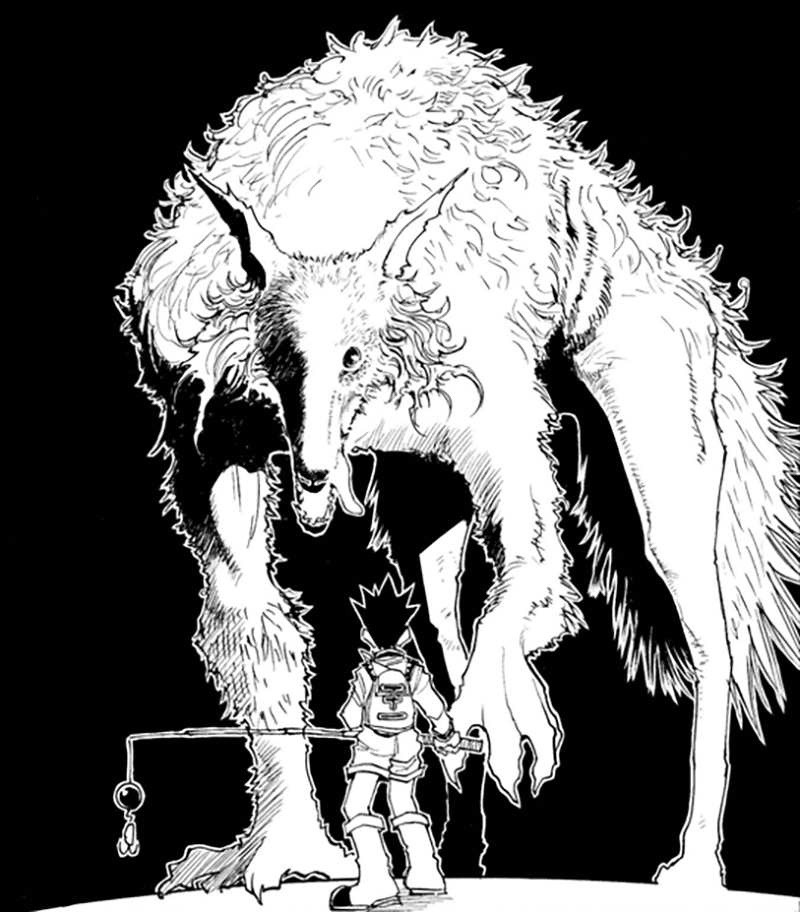
Hunter x Hunter by Yoshihiro Togashi is one of the longest-running and most influential shonen manga ever published. It may look like a standard adventure series at first, but over time, it reveals itself as one of the most ambitious, complex, and genre-defining manga of its era.
The story follows Gon Freecss, a young boy determined to become a Hunter in order to find his absent father. Hunters are licensed adventurers granted unique privileges. To gain that license, Gon must survive the deadly Hunter Exam, a grueling trial where he meets the allies and rivals who will define the series.
Early on, Hunter x Hunter feels like a classic shonen: training, tests, and colorful fights. But the series truly hits its stride when introducing Nen, an intricate power system that lets characters manifest unique abilities tied to their personality. Nen turns battles into psychological chess matches rather than brute contests of strength, and it remains one of the most detailed and satisfying systems in manga.
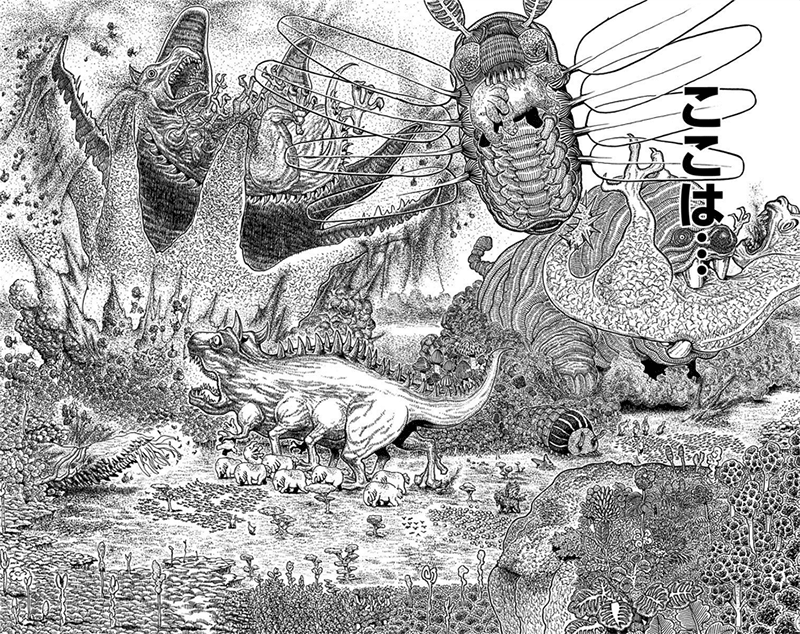
A huge part of the manga’s appeal is its cast. Gon’s evolving friendship with the assassin prodigy Killua gives the story real heart, while the antagonists are equally fascinating. Hisoka stands as one of shonen‘s most unsettling and unpredictable villains, while the Phantom Troupe and their leader Chrollo carry a mythic sense of danger. Later arcs introduce one of the greatest antagonists in manga history during the iconic Chimera Ant arc.
But Hunter x Hunter isn’t flawless. Its art is famously inconsistent. Togashi can deliver breathtaking, elaborate spreads one chapter and near scribbles the next. Its arcs vary wildly in tone and quality; the Yorknew City and Chimera Ant arcs are masterful, while other arcs can feel padded or meandering. While Togashi’s love of worldbuilding and strategy is impressive, it sometimes veers into overwhelming exposition, especially in the current Succession War arc, where the sheer density of dialogue and rules can test even the most devoted reader.
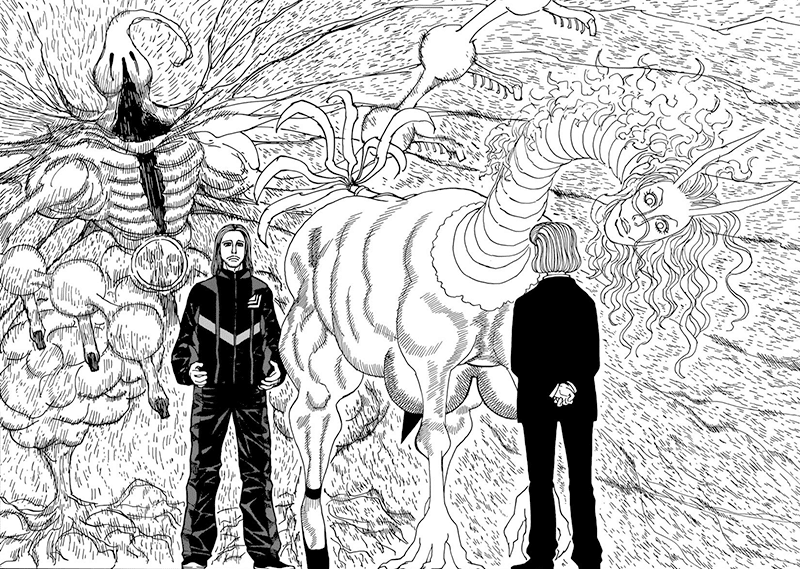
Despite these flaws, Hunter x Hunter remains one of the smartest and most inventive shonen manga of all time. Its ability to evolve, take risks, and deepen its characters keeps it fresh decades after its debut. If you’re looking for a long, rich adventure that consistently reinvents itself, Hunter x Hunter is a must-read.
Genres: Adventure, Fantasy, Action
Status: Ongoing (Hiatus)
6. Alice in Borderland
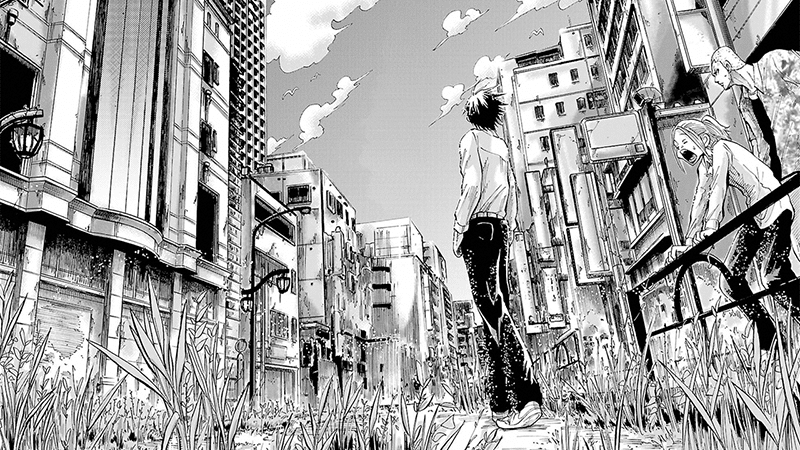
Alice in Borderland by Haro Aso is one of the strongest death-game shonen manga of the past decade. Mixing high-stakes survival, psychological tension, and clever game design, it’s easily one of the best titles the genre offers.
Ryohei Arisu is a directionless teenager drifting through life with his friends Karube and Chota. One night they see a strange burst of fireworks and wake up in a deserted Tokyo called the Borderland, where they must clear deadly games to earn visas or die when their time runs out.
What makes Alice in Borderland so engaging is the variety and inventiveness of its games. Each one has a difficulty ranking and suit: spades for physical prowess, clubs for teamwork, diamonds for intellect, and hearts for emotional or psychological stakes. This system keeps the tension high and ensures no two challenges feel the same. Some are brutally simple, others are dazzlingly intricate, but all are unforgiving.
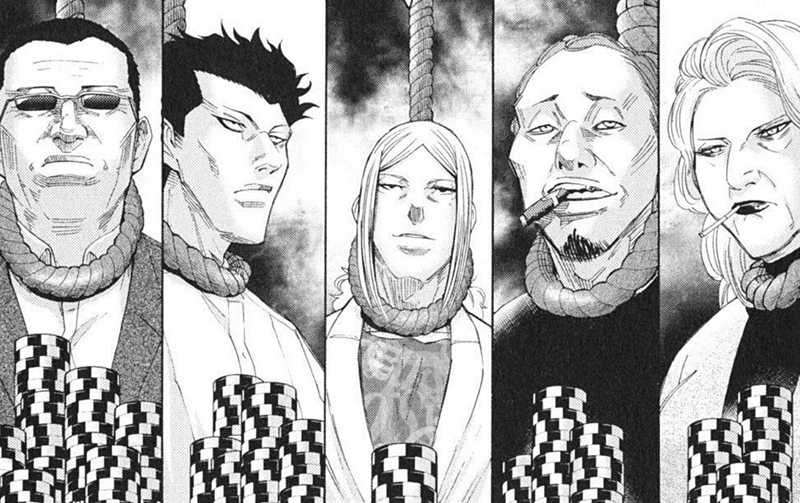
The art is equally impressive. Haro Aso renders the empty cityscapes, eerie game arenas, and sudden explosions of violence in crisp detail. Characters are expressive and visually distinct, and the staging of the games is clear and cinematic.
Arisu himself stands out as one of the more grounded protagonists in the death-game genre. He’s smart and resourceful but no genius or mastermind, and his introverted, melancholy nature gives the story an emotional center. Supporting characters, especially Chishiya and Usagi, develop organically, with their own motives and backstories, lending real stakes to their fate.
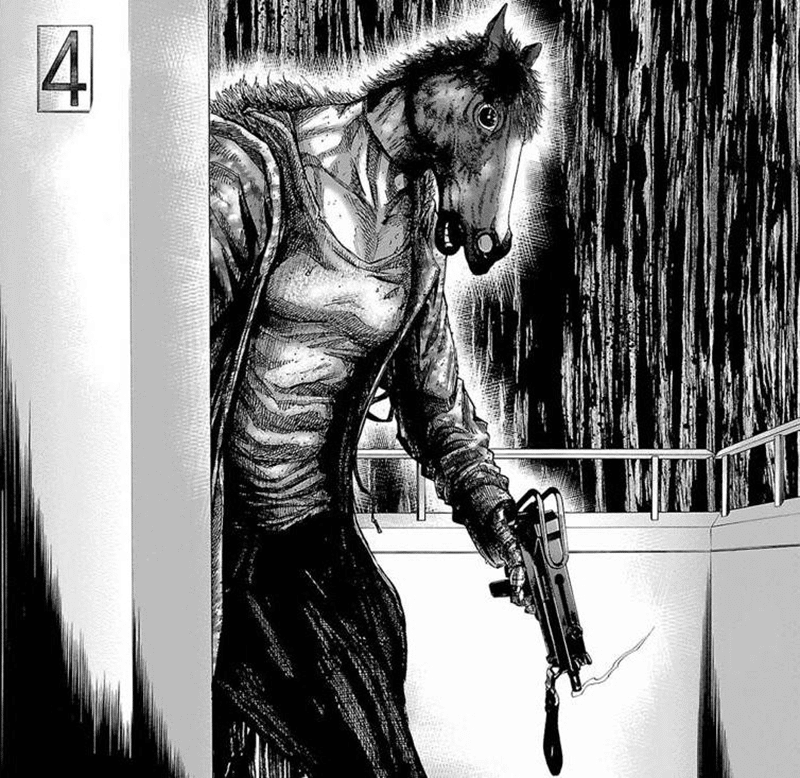
In later volumes, the story occasionally shifts focus to other characters and becomes almost episodic. While this deepens the world, it can also feel uneven compared to the tightly wound early arcs. The ending is likewise divisive. It fits the story and is thematically coherent, but rather anticlimactic.
Still, these are minor issues in a series that consistently delivers tense, clever, and sometimes brutal storytelling. With its inventive mechanics, striking art, and emotionally resonant cast, Alice in Borderland is a must-read for anyone interested in death games, survival thrillers, or darker shonen manga.
Genres: Survival, Psychological Thriller,
Status: Finished
5. Kamisama no Iutoori and Kamisama no Iutoori Ni
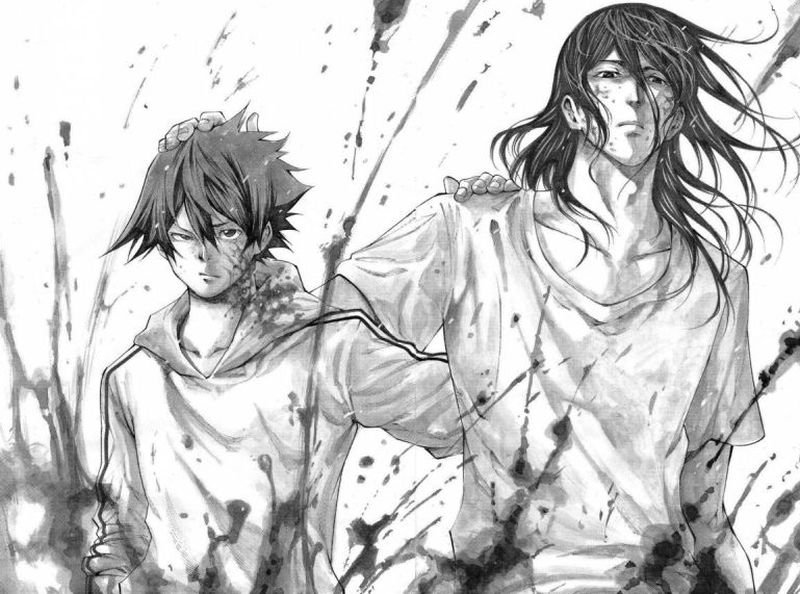
Kamisama no Iutoori by Muneyuki Kaneshiro and Akeji Fujimura, alongside its sequel Kamisama no Iutoori Ni, is easily my favorite death-game manga. Brutal, surreal, and wildly inventive, it stands at the top of the genre for sheer creativity and unpredictability.
The story opens with Shun Takahata, a bored high school student whose life implodes when his teacher’s head suddenly bursts open and a Daruma doll demands the class play a deadly children’s game. From that moment onward, the rules of normal life vanish, replaced by a string of bizarre and fatal challenges. The sequel introduces an entirely new group of players before tying back to Shun’s original storyline in spectacular fashion.
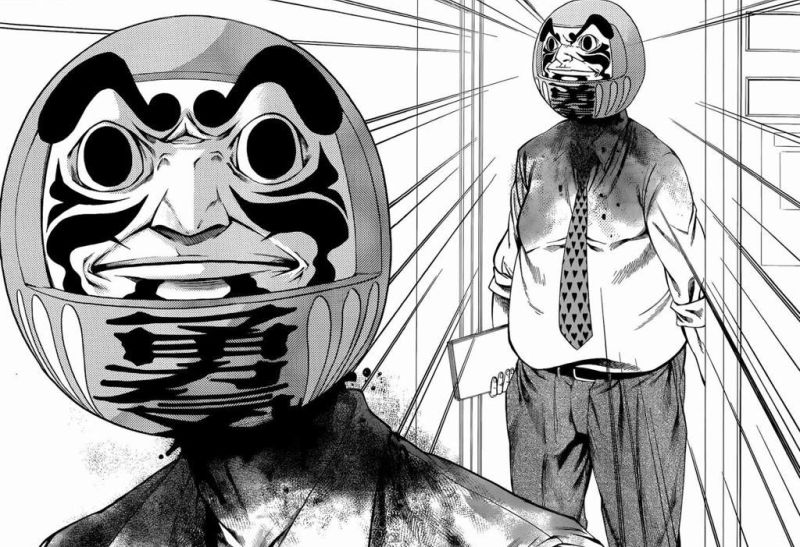
What truly makes Kamisama no Iutoori special is its cast. Most death-game manga lean on stock archetypes, but this series thrives on unhinged, unpredictable personalities. The brilliant sociopath Amaya sets an early standard for chaotic menace, while Ushimitsu evolves from a dangerous wildcard into one of the story’s deepest, most compelling characters. In contrast, Akashi embodies the classic good-hearted shonen lead, which can make him feel rather clichéd.
The games themselves are another highlight. They’re twisted versions of children’s activities and folk traditions, each with hidden rules and elaborate payoffs. Rather than striving for realism, the series revels in absurdity, using it to heighten suspense and push its characters into psychological corners. This surreal puzzle-box structure makes the manga compulsively readable.
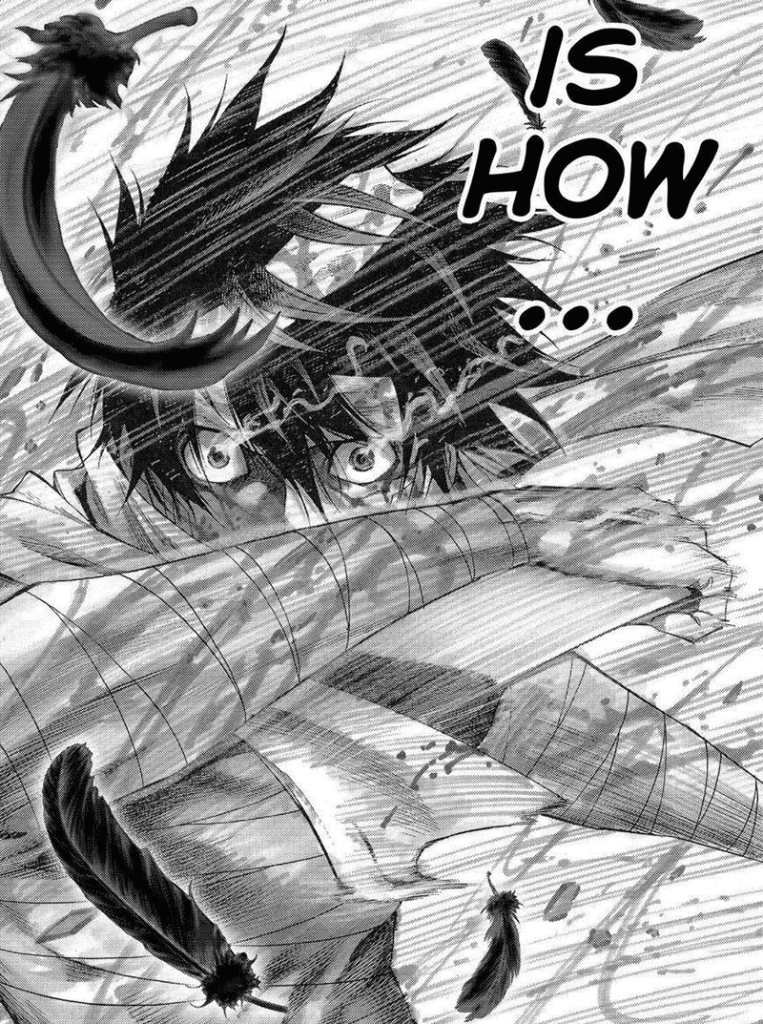
Visually, the improvement between parts is dramatic. Part 1’s art is solid but relatively plain; Part 2 explodes with detailed spreads, stylish action and some of the most striking sequences in the genre. Several late-stage chapters are genuine masterclass in pacing and panel layout, pushing the tension to its breaking point.
The series isn’t flawless, though. Some games in the sequel run a bit too long, and its ending is famously divisive. While I think it was a great way to end the series, others might truly hate it.
If you’re looking for a death-game manga that’s darker, stranger, and far more character-driven than usual, Kamisama no Iutoori and its sequel are a must-read. Surreal, gory, and packed with unforgettable personalities, it stands as the peak of shonen survival games.
Genres: Survival, Psychological Thriller, Action
Status: Finished
4. JoJo’s Bizarre Adventure Part 4: Diamond is Unbreakable
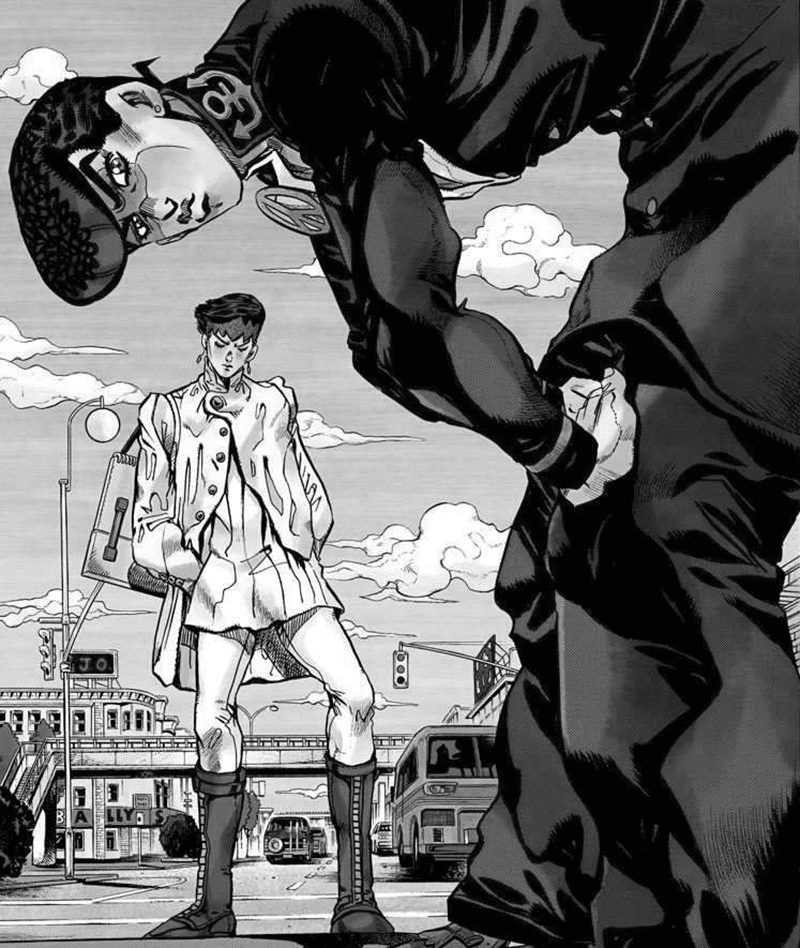
JoJo’s Bizarre Adventure Part 4: Diamond is Unbreakable by Hirohiko Araki is one of the standout arcs in one of manga’s most iconic series. With over 100 volumes and nine story arcs, JoJo’s Bizarre Adventure has gone from a Fist of the North Star-inspired battle manga to a global pop-culture phenomenon, largely thanks to its widely inventive Stand system and its acclaimed anime adaptations.
While Part 7, Steel Ball Run, is my favorite, Part 4 might show Araki at his most experimental and refined. Earlier arcs like Phantom Blood and Battle Tendency were pulpy adventures about vampire hunters and ancient superhumans, culminating in the globe-trotting Stardust Crusaders and the formal introduction of Stands. Diamond is Unbreakable breaks from that formula completely, shifting from world-saving adventure to an intimate small-town mystery.
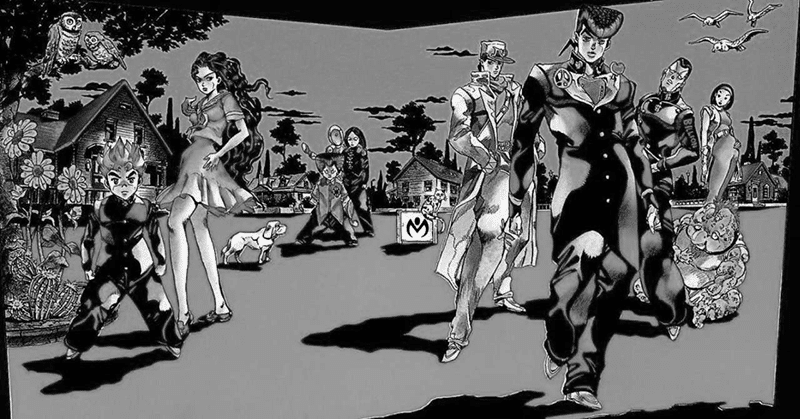
Set in the quiet town of Morioh, Part 4 follows Josuke Higashikata, the illegitimate son of Joseph Joestar, as he uncovers a growing string of bizarre Stand-related incidents. Initially guided by Jotaro Kujo, Part 3’s protagonist, Josuke investigates the mysterious Bow and Arrow, an artifact capable of awakening new Stand users. But that’s only the beginning. The real heart of Part 4 emerges when introducing Yoshikage Kira, one of the most chilling and iconic villains in shonen history.
What makes Part 4 special is its focus on the everyday. Instead of globe-trotting adventures to save the world, we get high school students, small-town residents, and a creeping sense of supernatural menace hiding behind suburban normalcy. This tighter scope gives Araki room to explore deeply weird Stand abilities beyond simple combat, turning battles into puzzles filled with surprising, often hilarious powers.
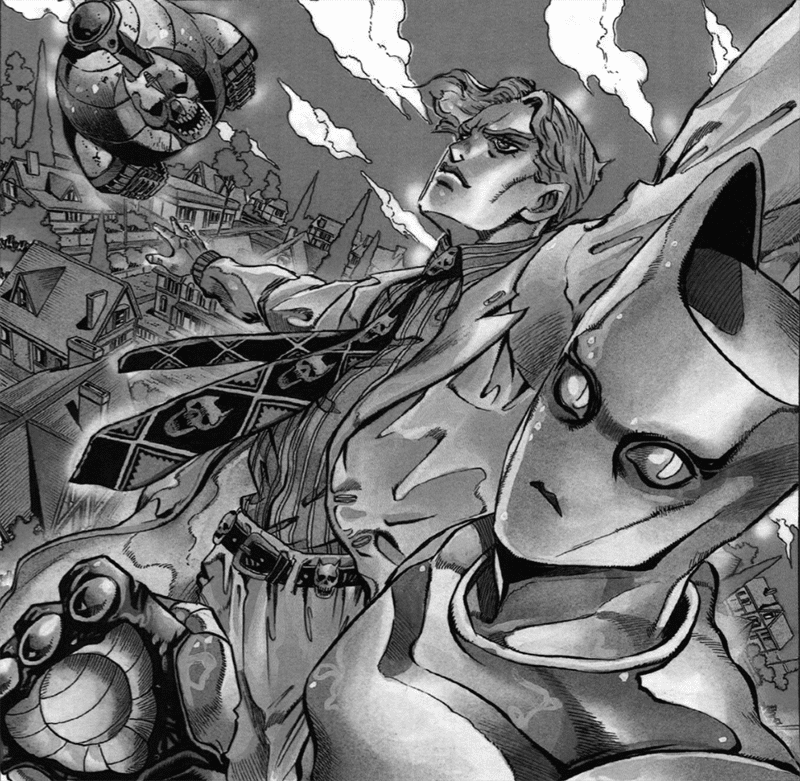
Visually, Diamond is Unbreakable marks a turning point for Araki’s art. It starts out resembling Stardust Crusaders but gradually evolves into the bold, stylized, more androgynous look that would define later parts of the series. Characters are vibrant and expressive, settings feel alive, and Stand designs reach new heights of creativity.
Altogether, Part 4 blends slice-of-life, inventive power, and one of manga’s greatest villains into an arc that’s at once bizarre and intimate. For many readers, it’s peak JoJo. It’s a classic of modern shonen manga storytelling, and a must-read for anyone curious about why JoJo’s Bizarre Adventure has endured for decades.
Genres: Action, Supernatural, Mystery
Status: Finished
3. Dandadan
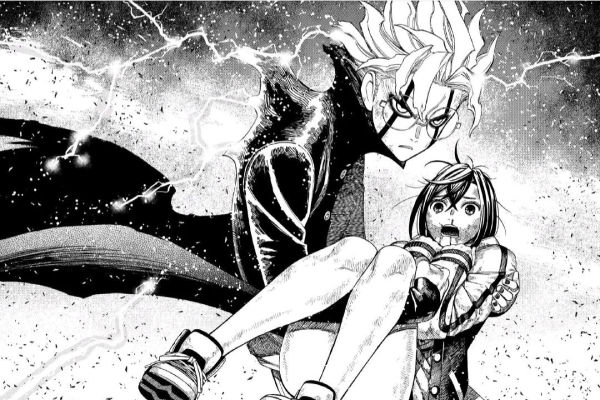
Dandadan might be one of the most chaotic, exhilarating, and unpredictable shonen manga running today. Written and illustrated by Yukinobu Tatsu, a former assistant to Chainsaw Man creator Tatsuki Fujimoto, Dandadan fuses horror, science-fiction, folklore, rom-com, and pure battle shonen into a single genre-hopping rocket. The result is unfiltered insanity, and that’s exactly what makes it so special.
The story kicks off with a dare. Momo Ayase, a sharp-tongued schoolgirl, believes in ghosts but scoffs at aliens. Ken Takakura, nicknamed Okarun, a nerdy outcast obsessed with the paranormal, believes the opposite. They each investigate a site linked to their chosen beliefs, only for both of them to be proven right. From that point on, Dandadan refuses to slow down, throwing the duo, and later a growing ensemble of equally memorable characters, into escalating supernatural chaos.
What sets Dandadan apart is its total disregard of tonal boundaries. One chapter plunges you into a grotesque horror scene in which a vicious yokai tears through victims with uncanny detail, while the next shifts to a breezy slice-of-life rom-com at school. It leaps from kaiju-scale battles to heartfelt teenage awkwardness, from slapstick comedy to brutal alien warfare. You never know if you’re about to laugh, cry, or witness a page-turning nightmare.
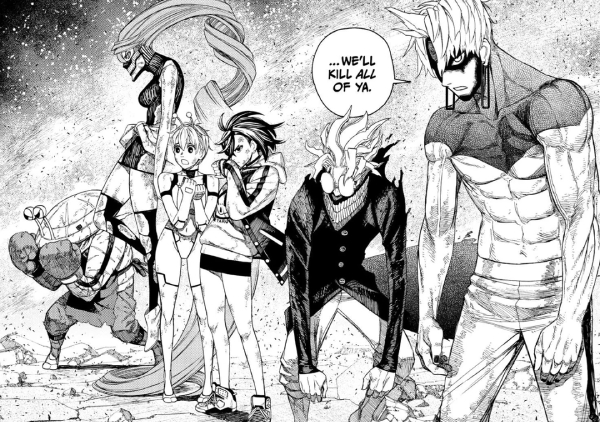
Despite the chaos, Tatsu anchors the series with moments of genuine emotional weight. Beneath the jokes and monster fights lie backstories of loss, trauma, and perseverance. These flashbacks hit like gut punches, revealing that the manga’s high-energy veneer hides something deeply human. This ability to pivot from outrageous spectacle to intimate sorrow is one of Dandadan’s greatest strengths.
Visually, the series is astonishing. Tatsu’s linework is sharp and hyperkinetic, equally comfortable with comedic exaggeration and photorealistic horror. Yokai designs feel steeped in classic Japanese folklore but rendered with fresh, modern grotesquery: wide eyes, warped limbs, textures that look wet or fungal. The alien tech and battles have the opposite energy: slick, otherworldly, and reminiscent of mecha or kaiju designs. The way Tatsu frames action scenes also deserves praise. Panels burst with motion and scale, yet remain readable; double spreads routinely deliver jaw-dropping, poster-worthy images. When characters enter battle, the page itself seems to warp under their energy.
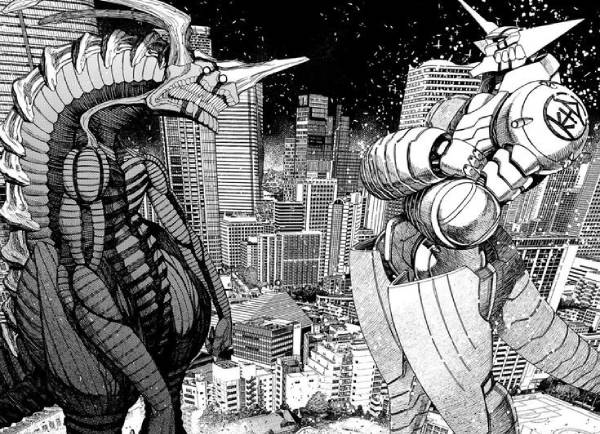
Dandadan is often pure hype. Battles erupt with insane techniques and cinematic spectacle. Powers evolve mid-fight. Characters reveal strange auras or transformations that feel more like shonen superpowers than anything you’d expect in a horror or science-fiction story. But that’s exactly the fun of Dandadan. It’s a manga that treats every chapter like an opportunity to top the last.
Ultimately, Dandadan is proof that a manga doesn’t have to stay in one lane. It’s a shonen battle manga where yokai and aliens collide with teenage awkwardness and cosmic terror. If you’re looking for something truly unpredictable, with standout art and emotional undercurrents beneath its chaos, this is the series to dive into.
Genres: Horror, Supernatural, Comedy, Action, Sci-Fi
Status: Ongoing
2. Blue Lock
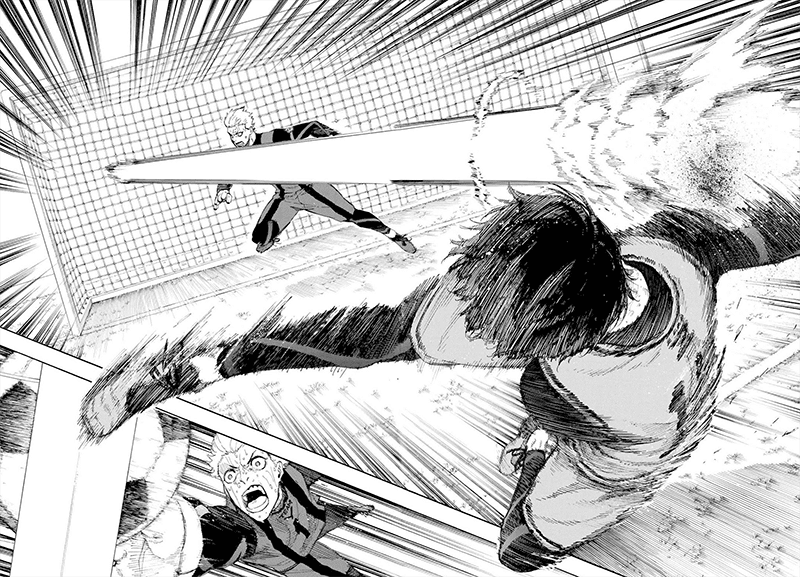
I’m usually not a fan of sports manga, and soccer doesn’t exactly excite me. Yet Blue Lock broke through that barrier and became one of my favorite reads of recent years. Written by Muneyuki Kaneshiro and illustrated by Yusuke Nomura, it takes a standard sports premise and morphs it into a full-blown battle shonen: high stakes, psychological tension, and some of the most hyped artwork you’ll find in any currently running series.
The setup is deceptively simple. Japan lacks a world-class striker. To fix this, the Japanese Football Association recruits the eccentric, manipulative coach Jinpachi Ego, who launches Blue Lock, a prison-like training facility for 300 of Japan’s best young strikers. Only one will emerge as the new national team forward; everyone else loses the right to represent Japan ever again. This ruthless premise instantly reframes soccer from a team sport into an individual survival game. Yoichi Isagi, our protagonist, begins as an unremarkable player but possesses spatial awareness and seemingly limitless potential to adapt.
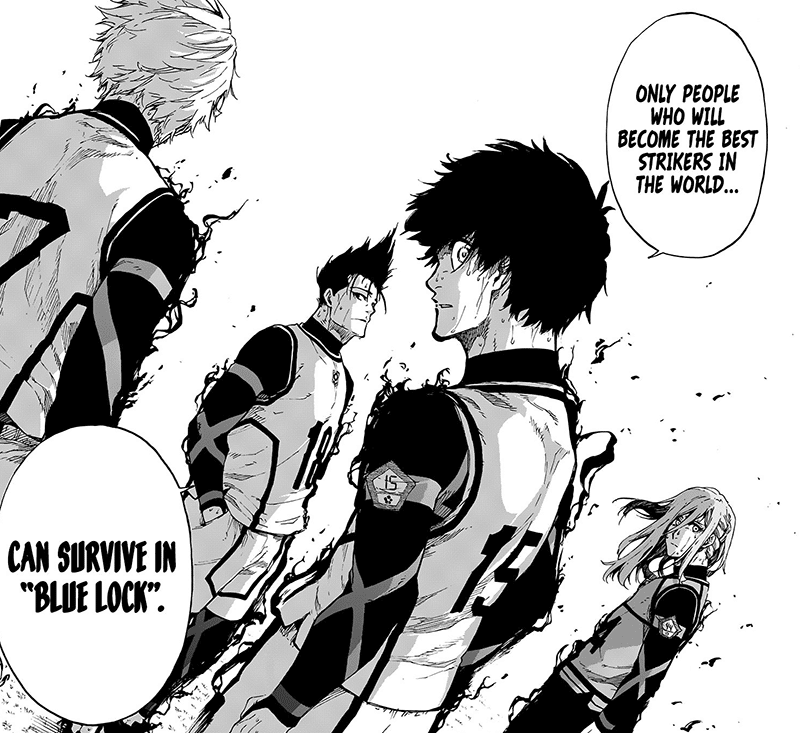
What makes Blue Lock electric is how it treats soccer like a mixture of psychological warfare and shonen battles. Nomura’s art doesn’t just depict a match; it shows what’s happening inside the characters’ minds. Players unleash their special techniques, called weapons, clash in chemical reactions, or enter surreal ego states depicted as monstrous auras, glowing eyes, or metaphorical beasts erupting behind them. Even routine passes can feel like tactical assassinations. It’s pure hype, and more than once you will catch yourself holding your breath during a goal.
The cast is massive but sharp. Meguru Bachira stands out as a dribbling trickster who thrives on chaos; Seishiro Nagi is a lethargic genius with world-class ball control; Hyoma Chigiri is the speedster reborn after an injury; and Barou, the self-proclaimed King, is all ego and power. Later on, Blue Lock introduces more characters, among them Kaiser, the perfect foil to Isagi: cool, lethal, and impossibly skilled. All of these characters and their rivalries feel like a combustible mixture waiting to explode.
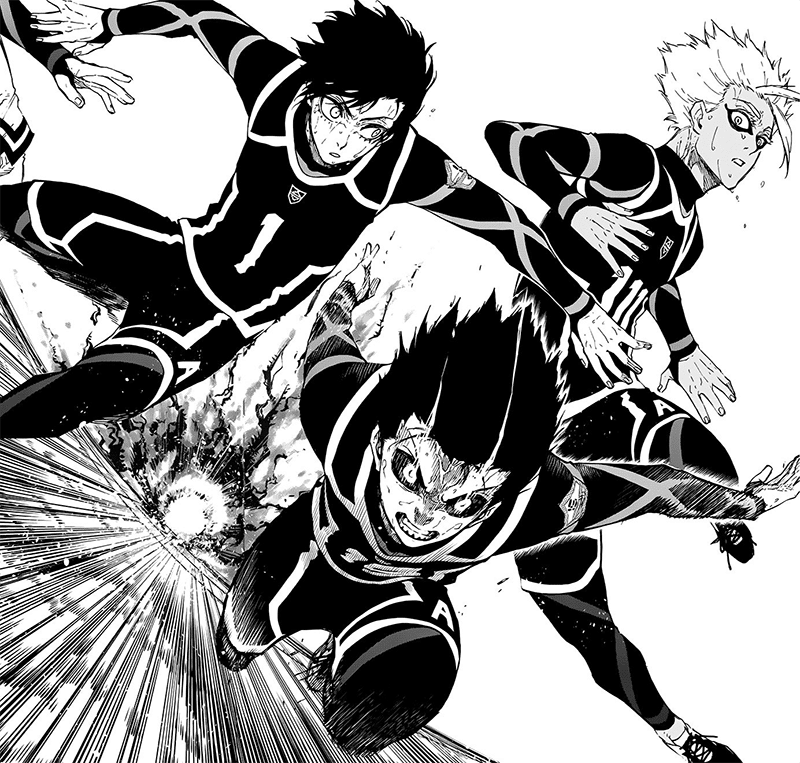
The series also scales brilliantly. Early arcs focus on brutal elimination matches inside Blue Lock. By the U-20 arc, the surviving players face the national team in an all-or-nothing clash. And in the current U-20 World Cup arc, they’re stepping onto a global stage, testing themselves against international prodigies. Each phase raises the tension without diluting the core thrill: watching players evolve, refine their weapons, and redefine themselves on the field.
Yes, Blue Lock can be ridiculous. High-school players pulling off world-class plays? Sure. But that’s the point. This isn’t meant to be a textbook soccer series. It’s a shonen survival manga disguised as a sport series running on ego, rivalry, and the raw thrill of victory.
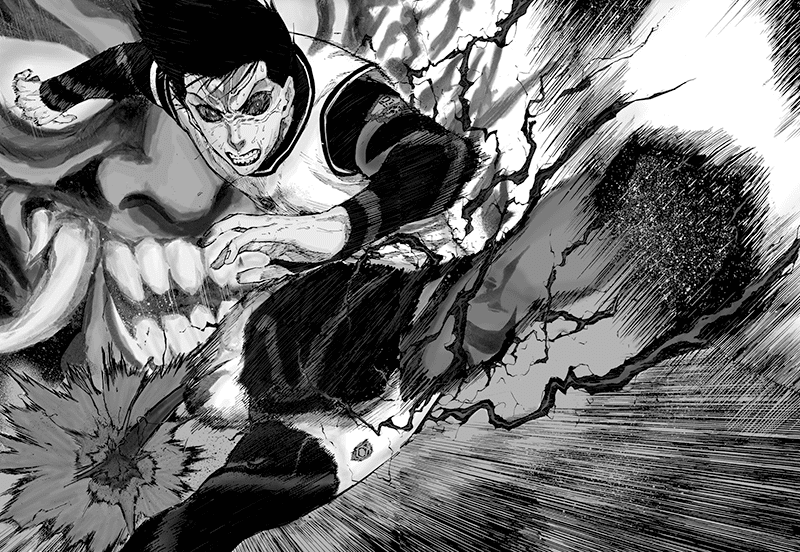
Overall, Blue Lock is pure, uncut hype. It’s a manga about ambition, about evolving beyond your limits, and about weaponizing your individuality in a team setting. Even if you‘ve never cared about soccer, it’s impossible not to get swept up in Blue Lock’s hype.
Genres: Sports, Action
Status: Ongoing
1. Sakamoto Days
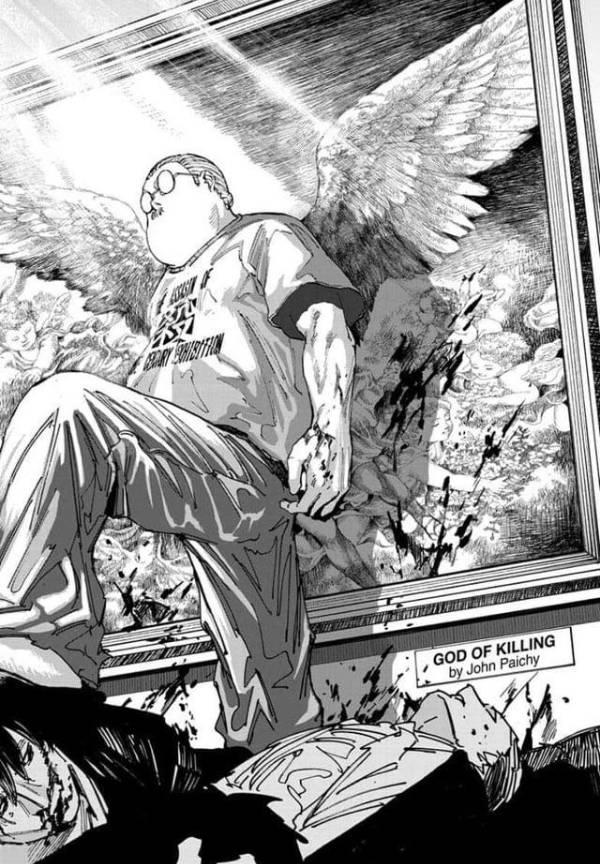
At first glance, Sakamoto Days looks like a gag manga with a one-note joke: What if the world’s greatest hitman retired, got chubby, and ran a convenience store? But under that setup hides one of the most stylish, tightly drawn, and hype-fueled battle shonen of the past decade. Written and illustrated by Yuto Suzuki, this series started as a fun curiosity but has quickly transformed into my personal pick for the best ongoing shonen right now.
The premise is simple. Taro Sakamoto was the ultimate assassin: unmatched skill, countless kills, feared across the underworld. Then he fell in love, got married, and retired to run a corner shop. The twist? The past won’t leave him alone. Rival killers, bounty hunters, and ex-associates keep showing up to claim the reward on his head or to settle old scores. Sakamoto has vowed not to kill anymore, so every fight becomes a creative, kinetic puzzle: how does a man built to kill take down professional assassins without crossing his new moral line?
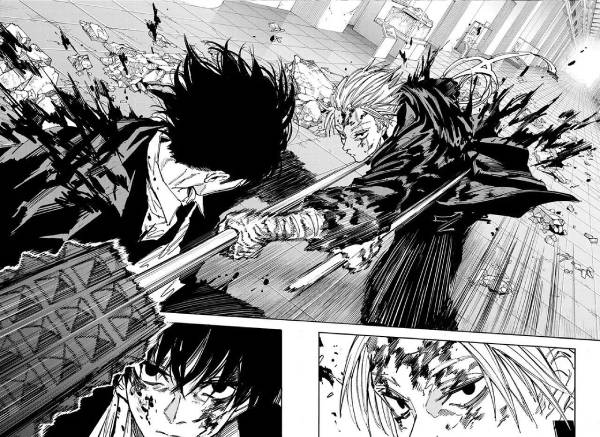
At first, this plays out like a parody of the overpowered man living a normal life stories. We see Sakamoto improvising household objects into weapons, turning aisles of his store into battlegrounds, and juggling parenthood with life-or-death ambushes. It’s funny, charming, and deceptively breezy.
Then the switch flips. As the story unfolds, Suzuki pulls back the curtain on a broader conspiracy. The bounty on Sakamoto’s head, the shadowy organization led by X, and a sprawling cast of rival assassins and uneasy allies. With each new arc, the tone evolves from sitcom-like comedy to high-octane action thriller. Before long, Sakamoto Days isn’t just a comedy about a retired hitman but a full-blown, no-holds-barred battle manga with choreography that rivals classics like Blade of the Immortal in flow and clarity.
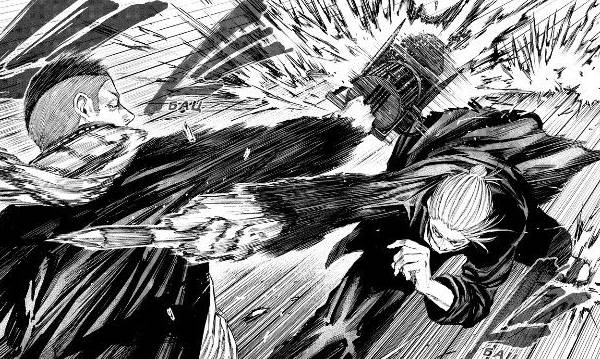
That choreography is the series’ signature strength. The art is loose and sketchy yet always readable, channeling raw speed and motion in every panel. Fights unfold like carefully staged storyboard action sequences with wide shots to establish geography, sudden close-ups for impact, then elegant tracking panels that guide your eyes across flips, throws, gunfire, and blade strikes. You never lose track of where characters are, yet every page feels alive with velocity. It’s stylish in the truest sense, with just enough grit to make each hit matter.
And the characters? They are as varied and colorful as the fights. Shin, the young telepathic ex-hitman, becomes Sakamoto’s new partner. Heisuke, the sniper with comic timing and surprising depth. Nagumo, Sakamoto’s ex-partner, serves as an unpredictable wildcard. Meanwhile, characters such as Mr. Takamura serve as almost mythic-level threats. Each of these characters has distinct weapons, fighting styles, but also quirks that bounce off one another in hilarious and violent ways. It’s not just the action that sells these characters; it’s their interplay, the absurd mid-battle banter, and the sense of a living eccentric world.
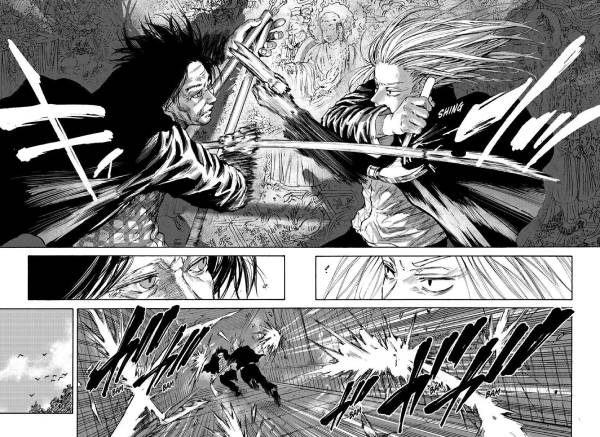
The tone constantly walks the line between cartoonish and brutal. One page will have a killer exchange of deadpan jokes about retirement plans; the next, someone’s getting slammed through concrete, or dismembered. This rhythm gives Sakamoto Days its pulse: it’s gleefully over-the-top, but grounded by inventive fight logic and genuine camaraderie.
Of course, Sakamoto Days leans heavily on style over substance. The plot mostly exists to set up the next incredible fight. Emotional stakes are generally lighter than in something like Fullmetal Alchemist; major characters rarely die, and moral consequences often take a backseat to spectacle.
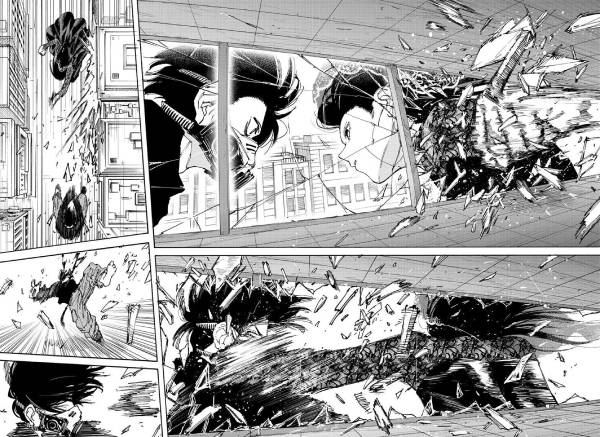
What makes Sakamoto Days my number one pick is how completely it commits to being fun. It’s not trying to be grimdark, profound, or the next cerebral manga. It brings us the cleanest, flashiest, most kinetic action on the market right now and a reminder of why we read shonen manga in the first place. Every chapter is a rush of movement, inventive choreography, and characters you can’t wait to see collide. For pure manga spectacle, nothing else matches it.
Genres: Action, Comedy
Status: Ongoing
